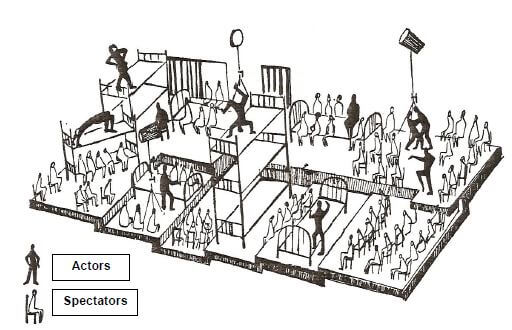Adele
ENGLISH FIRST ADDITIONAL LANGUAGE PAPER 3 GRADE 12 MEMORANDUM - NSC PAST PAPERS AND MEMOS FEBRUARY/MARCH 2018
ENGLISH FIRST ADDITIONAL LANGUAGE
PAPER 3
GRADE 12
NSC PAST PAPERS AND MEMOS
FEBRUARY/MARCH 2018
INSTRUCTIONS TO MARKERS
- Candidates are required to answer ALL the questions.
- This marking guideline serves as a guide to markers. Some responses may require a marker's discretion, while others may be expanded at the national marking guideline discussion.
- Candidates' responses should be assessed as objectively as possible.
MARKING THE COMPREHENSION
- Because the focus is on understanding, incorrect spelling and language errors in responses should not be penalised unless such errors change the meaning/understanding. (Errors must still be indicated.)
- If a candidate uses words from a language other than the one being examined, disregard those words, and if the answer still makes sense, do not penalise. However, if a word from another language is used in a text and required in an answer, this will be acceptable.
- For open-ended questions, no marks should be awarded for YES/NO or I AGREE/I DISAGREE. The reason/substantiation/motivation is what should be considered.
- When one-word answers are required and the candidate gives a whole sentence, mark correct provided that the correct word is underlined/ highlighted.
- When two/three facts/points are required and a range is given, mark only the first two/three.
- Accept dialectal variations.
- For multiple-choice questions, accept BOTH the letter corresponding with the correct answer AND/OR the answer written out in full.
MEMORANDUM
SECTION A: COMPREHENSION
QUESTION 1
1.1.1
- A learner's academic ability. ✔
- Their field of interest. ✔
- The field that offers the best opportunity. ✔
NOTE: Accept any TWO of the above answers. (2)
1.1.2 Matric learners have a wider choice of career opportunities. ✔ (1)
1.2 To attract young people to careers in this field of study✔ and to help protect invaluable ocean resources and the coastline. ✔ (2)
1.3
1.3.1 'piloted'✔ (1)
1.3.2 The format is the same. ✔ (1)
1.3.3 Not much research has been done on the ocean (and its resources.) ✔ (1)
1.4
1.4.1
- The learners are not real biologists. ✔
- They only completed the five- day course successfully. ✔/
- The term is used in a unique way ✔because a distinction is being made by using the word ‘young’. ✔/
- It is the name of the course.✔ (2)
1.4.2 They were volunteers and were therefore not paid. ✔ (1)
1.4.3 B/ being impressive. ✔ (1)
1.4.4 The course must give learners practical experience✔in order to give them a better understanding of the ocean and its resources. ✔ (2)
1.5
- She is passionate about what she does/penguins. ✔
- She is committed to her work./She is hardworking. ✔
- She does not expect money/remuneration for the work she does. ✔
- She is willing to share her expertise/experience/knowledge freely. ✔
NOTE: Accept any ONE of the above answers. (1)
1.6
- To show how learners can benefit from the course by being awarded bursaries. ✔
- It also inspires learners to pursue this course. ✔
- It shows the progress/success of the course. ✔
NOTE: Accept any TWO of the above answers. (2)
1.7
- No. Marine scientists spend about three weeks in the ocean✔ and the rest of the time they do research and analysis of information and data. ✔
NOTE: Do not award a mark for No only. (2)
1.8 Students enrolled for Marine Sciences would need to be close to the ocean for practical experience in the subject.✔ (1)
1.9 Open-ended. Accept a suitable response, e.g.
- Yes. Learners are made aware of the possibilities the Young Biologists course offers. It shows them how it can lead to job creation. It explains the benefits of doing the course.
OR - No. Learners might not want to study Marine Sciences as it is a fairly new subject and it is still in the implementation phase. The article does not state clearly how learners who stay away from the coast will be able to pursue this course.
NOTE: Do not award a mark for Yes/No. Accept other suitable responses. A candidate can score 1 mark for an answer that is not well substantiated. (2)
1.10 Open-ended. Accept a suitable response, e.g.
- The title is suitable because the article focuses on marine/ocean studies for learners./The title is suitable as there is a pun on the word 'diving'. Marine studies involve some diving and it could also suggest that youngsters are very keen to do ocean studies.
OR - It is not suitable as not many youngsters are doing Marine Sciences at the moment as it is still being introduced./ Marine Sciences does not involve much diving as more time is spent doing research.
NOTE: Accept other suitable responses. A candidate can score 1 mark for an answer that is not well-substantiated. (2)
1.11 teenagers✔ (1)
1.12 No. The graph indicates that fewer than 200 teenagers are concerned with the cost of making a call. (1)
1.13 The bar graph conveys the idea that the largest number of teenagers text because they are able to multitask. (2)
1.14 Open-ended. Accept a suitable response, e.g.
- Yes. The image of the cellphone is linked to the contents of the bar graph and therefore, will give the reader an immediate indication of what the graph is about.
OR - No. The bar graph is self-explanatory and the image of the cellphone does not serve any purpose.
NOTE: Do not award a mark for Yes/No or Agree/Disagree.
Accept other suitable responses. A candidate can score 1 mark for an answer that is not well-substantiated. (2)
TOTAL SECTION A: 30
SECTION B: SUMMARY
QUESTION 2
The following points form the answer to the question:
QUOTATIONS | FACTS | ||
1. | 'Asking a good question tells the speaker that the listener has not only heard what was said, but also understood it well enough to want additional information.' | 1. | Ask relevant questions to show understanding (and a desire for more information). |
2. | 'Good listening is characterised by the creation of a safe environment in which issues and differences could be discussed openly.' | 2. | Create a safe environment (to allow for open discussion). |
3. | 'Good listeners may challenge assumptions and disagree, but the person being listened to feels the listener is trying to help, not wanting to win an argument.' | 3. | Question assumptions and raise different views politely./Be polite when disagreeing. |
4. | 'Good listeners never try to hijack the conversation so that they or their issues become the subject of discussion.' | 4. | Avoid taking over a conversation (by deviating from the current subject matter/by discussing your issues). |
5. | 'Good listening includes some feedback provided in a way others would accept and that opens up alternative paths to consider.' | 5. | Give acceptable feedback. |
6. | 'However, a good listener makes the speaker feel better by not merely passively absorbing, but by being actively involved.' | 6. | Be actively involved (instead of just accepting whatever is said). |
7. | 'A good listener clears away distractions like phones and laptops, focusing attention on the other person.' | 7. | Put away any item that will distract you./ Focus undivided attention on the speaker./Focus on the speaker. |
8. | 'Appropriate eye-contact is made to show attentive listening.' | 8. | Make proper eye-contact with the speaker. |
MARKING THE SUMMARY
Marking is on the basis of the inclusion of valid material and the exclusion of invalid material.
The summary should be marked as follows:
- Mark allocation:
- 7 marks for 7 points (1 mark per main point)
- 3 marks for language
- Total marks: 10
- Distribution of language marks when candidate has not quoted verbatim:
- 1–3 points correct: award 1 mark
- 4–5 points correct: award 2 marks
- 6–7 points correct: award 3 marks
- Distribution of language marks when candidate has quoted verbatim:
- 6–7 quotes: award no language mark
- 1–5 quotes: award 1 language mark
NOTE:
- Word count:
- Markers are required to verify the number of words used.
- Do not deduct any marks if the candidate fails to indicate the number of words used, or if the number of words used is indicated incorrectly.
- If the word limit is exceeded, read up to the last sentence above the stipulated upper limit and ignore the rest of the summary.
TOTAL SECTION B: 10
SECTION C: LANGUAGE
NOTE:
- Spelling:
- One-word answers must be marked correct even if the spelling is incorrect, unless the error changes the meaning of the word.
- In full-sentence answers, incorrect spelling should be penalised if the error is in the language structure being tested.
- Sentence structures must be grammatically correct and given in full sentences/as per instructions.
- For multiple-choice questions, accept BOTH the letter corresponding with the correct answer AND/OR the answer written out in full as correct.
- Where an abbreviation is tested, the answer must be punctuated correctly.
QUESTION 3: ANALYSING AN ADVERTISEMENT
3.1 Sore Throat Spray/A.Vogel Sore Throat Spray✔ (1)
3.2 To attract the reader's attention./It is used for emphasis. ✔ (1)
3.3 The image of the thorny stem conveys the idea of a sore/painful throat/severe pain/irritation in the throat ✔which feels as if there are thorns in one's throat. ✔ (2)
3.4 prefix✔ (1)
3.5 'Clinically proven'✔ (1)
3.6 This proves that A.Vogel is an established brand in the manufacture of natural health products./A brand that has enormous experience in the manufacture of natural health products. ✔ (1)
3.7 By calling the telephone number provided/by visiting the website provided. ✔ (1)
3.8 Open-ended. Accept a suitable response, e.g.
- Yes. The advertisement is convincing because it is about a product manufactured by a well-established brand (since 1923)./ It promises to be 'fast acting' to relieve the pain and inflammation of a sore throat/is made of natural and organic ingredients/is clinically proven and therefore reliable. As a result, one would be persuaded to use this product.
OR - No. It is not effective because the information provided is not conclusive enough/ there is not enough evidence that this product will work/the information provided is contradictory because the headline states that the pain will be sprayed away while the body copy refers to the product providing relief and not stopping the pain entirely.
NOTE: Do not award a mark for Yes/No. The above are merely examples. A candidate can score 1 mark for an answer that is not well substantiated. (2) [10]
QUESTION 4: ANALYSING A CARTOON
4.1 The newspaper covers her face. ✔ (1)
4.2 She scares/shocks Mother Anderson with the life-size emoji.✔ (1)
4.3 Thandi expects Mother Anderson to buy her first emoji✔/Thandi expects Mother Anderson to invest in this venture to create life-size emojis.✔
NOTE: Accept any ONE of the above answers. (1)
4.4
4.4.1
- The cartoonist uses the word 'SLAM'.✔
- The word 'SLAM' is written in large font.✔
- The word 'SLAM' is written in bold font.✔
- Double exclamation marks are used.✔
- The movement lines. ✔
NOTE: Accept any TWO of the above answers. (2)
4.4.2
- The shape of the mouth of the emoji✔ shows that Thandi is not happy. ✔
OR - The raised eyebrows of the emoji✔ show that Thandi is angry. ✔ (2)
4.4.3 Entrepreneur/entrepreneurship/entrepreneurism/entrepreneurialism✔ (1)
4.5 Open-ended. Accept a suitable response, e.g.
- Yes. Thandi has scared Mother Anderson with the emoji. Mother Anderson is relaxed while reading the newspaper and does not deserve to be disturbed./ Thandi has used the wrong approach to ask Mother Anderson to support her venture.
OR - No. Mother Anderson should support Thandi as she is making an attempt to start a business./ Thandi does not deliberately try to scare Mother Anderson.
NOTE: Do not award a mark for Yes/No. The above are merely examples. A candidate can score 1 mark for an answer that is not well substantiated. (2) [10]
QUESTION 5: LANGUAGE AND EDITING SKILLS
5.1
5.1.1
- than✔ (1)
- recently✔ (1)
- an✔ (1)
- had✔ (1)
5.1.2 celebrity✔ (1)
5.1.3 B/century✔ (1)
5.1.4 Huge/massive/colossal/enormous/big/gigantic/large✔
NOTE: Accept any ONE of the above answers. (1)
5.1.5 Did the officer return to claim his pets? ✔ (1)
5.1.6 Children and adults are entertained by Admiral. ✔ (1)
5.1.7 Accept a suitable response, e.g.
- They do not know whether he will return.✔
NOTE: The homophone must be used correctly in the sentence. (1)
5.1.8 She said that Admiral was the oldest tortoise in the country then/at that time and played a significant role in drawing tourists to the zoo.
NOTE: Award ONE mark for each underlined change and ONE mark for correct punctuation. (4)
5.2
5.2.1
- I - (Personal) Pronoun✔ answer - (common) Noun✔ (2)
- Apostrophe ✔ (1)
5.2.2 more interesting✔ (1)
5.2.3 The students did not/didn’t know the answer. ✔ (1)
5.2.4 doesn't he (?)/does he not (?)✔ (1)
TOTAL SECTION C: 40
GRAND TOTAL: 80
ENGLISH FIRST ADDITIONAL LANGUAGE PAPER 2 GRADE 12 MEMORANDUM - NSC PAST PAPERS AND MEMOS FEBRUARY/MARCH 2018
ENGLISH FIRST ADDITIONAL LANGUAGE
PAPER 2
GRADE 12
NSC PAST PAPERS AND MEMOS
FEBRUARY/MARCH 2018
INSTRUCTIONS AND INFORMATION
- Candidates are required to answer questions from TWO sections.
- These marking guidelines have been finalised at a marking guideline discussion session at DBE at which all provinces were represented. Any omissions or queries should be referred to Chief Markers/Analytical Moderators/Internal Moderators at marking centres. All protocol must be followed.
- Candidates' responses should be assessed as objectively as possible.
- GUIDELINES
4.1 A candidate may not answer more than ONE question on the same genre.
4.2 If a candidate gives two answers where the first one is wrong and the next one is correct, mark the first answer and ignore the next.
4.3 If answers are incorrectly numbered, mark according to the marking guidelines.
4.4 If a spelling error affects the meaning, mark incorrect. If it does not affect the meaning, mark correct.
4.5 If the candidate does not use inverted commas when asked to quote, do not penalise.
4.6 For open-ended questions, no marks should be awarded for YES/NO or I AGREE/I DISAGREE. The reason/substantiation/ motivation is what should be considered.
4.7 No marks should be awarded for TRUE/FALSE or FACT/OPINION. The reason/substantiation/motivation is what should be considered.
MEMORANDUM
SECTION A: NOVEL
NOTE: Candidates are required to answer ONE question on the novel they have studied.
QUESTION 1: CRY, THE BELOVED COUNTRY
Candidates are required to answer BOTH questions, i.e. QUESTIONS 1.1 and 1.2.
1.1
1.1.1 Unlike Stephen Khumalo's house Mrs Lithebe's house has:
- a bell;
- a modern bathroom;
- hot and cold water;
- a modern lavatory which can be flushed;
- the setting of the table.
NOTE: Accept any FOUR of the above. (4)
1.1.2 It is Stephen Kumalo's first visit to Johannesburg.✔ (1)
1.1.3 Stephen Kumalo travels to Johannesburg (after receiving a letter) to see Reverend Msimangu ✔ regarding his sister, Gertrude.✔ (2)
1.1.4
- Reverend Kumalo sees the evil in people when he is robbed of one pound by a young man who lies to him about needing to buy a ticket to board the bus.✔
- Soon afterwards he witnesses the good in people when Mr Mafolo comes to his assistance and escorts him to Reverend Msimangu's place.✔
NOTE: The answer must reflect BOTH the evil AND the good in people. (2)
1.1.5
(a) John Kumalo relocates to Johannesburg in search of a better life/better job prospects.✔ (1)
(b) Gertrude goes to Johannesburg in search of her husband.✔ (1)
1.1.6 C/ Reverend Msimangu.✔ (1)
1.1.7
(a) Friendly/pleasant/cordial/welcoming✔ (1)
(b) It is appropriate because Reverend Msimangu is meeting Stephen Kumalo for the first time and is welcoming him. ✔/ Reverend Msimangu's tone is appropriate because he wants Stephen Kumalo to feel happy and welcome. ✔ (1)
1.1.8 Open-ended.
Accept a response which shows knowledge and understanding of the following viewpoints, among others:
- No.
- Stephen Kumalo is old and frail;
- he has never been to a big city before;
- he needs the assistance of others to survive;
- Rev Msimangu assists Stephen Kumalo by putting him in touch with all the other individuals who assist him;
- Mrs Lithebe provides Stephen Khumalo with a comfortable home away from home;
- Mrs Lithebe assists Stephen Kumalo by accommodating Gertrude, her son and Absalom's wife;
- Father Vincent is compassionate and ever-willing to assist Stephen.
OR
- Yes.
- It is Stephen Kumalo's inner strength/human nature that allows him to endure so much of emotional pain in Johannesburg;
- it is his faith that allows him to persevere in Johannesburg;
- Stephen Kumalo survives under harsh conditions in Ndotsheni;
NOTE: Do NOT award a mark for YES or NO only.
Credit responses where a combination is given. For full marks, the response must be well-substantiated. A candidate can score 1 or 2 marks for a response which is not well-substantiated. The candidate's interpretation must be grounded in the novel. (3)
AND
1.2
1.2.1 He goes into the mountains to pray/think/reflect/to be alone✔ during this time of extreme suffering when Absalom is about to be executed.✔ (2)
1.2.2
- When Absalom was a young boy and became very ill.✔
- When he contemplated leaving the ministry to open a business.✔
- When his wife was away and, in a moment of weakness and loneliness, he considered committing adultery with a schoolteacher.✔
NOTE: Accept any ONE of the above. (1)
1.2.3 Absalom had impregnated the girl prior to him being arrested.✔ While he is in prison, he marries her so that his child will be raised legitimately.✔ (2)
1.2.4
- Steven Kumalo is a religious person.✔
- He loves Absalom unconditionally.✔
- He is considerate/caring.✔
- He is compassionate.✔
- He feels accountable/responsible for his son's actions.✔
- He is God-fearing. ✔
NOTE: Accept any TWO of the above. (2)
1.2.5
- Metaphor✔ (1)
-
- The comparison between the boy (Arthur Jarvis's son) and a bright, shiny light means he is striking/stands out.✔
- The boy is intelligent.✔
- The boy brings back joy into their lives.✔
- The boy has an/a infectious/ attractive/caring personality.✔
- The boy's brightness of spirit stands out.✔
NOTE: Accept any TWO of the above. (2)
1.2.6 Gertrude is promiscuous/immoral/erratic in her behaviour. Mrs Lithebe is morally upright/pious/strict.✔✔(2)
1.2.7 The discussion of the theme of the impact of forgiveness on the community of Ndotsheni, should include the following points, among others:
- Despite Absalom Kumalo killing their son, James Jarvis bears no hatred/is not vengeful towards the Kumalo family;
- Through his actions (e.g. uplifting the community), James Jarvis proves that he is forgiving;
- Mrs Jarvis shares his sentiments and desires that the church be completed;
- Stephen Kumalo does not bear any resentment towards his son;
- Stephen Kumalo forgives his son immediately;
- Stephen Kumalo tries to manage the consequences of Absalom's Actions;
- Stephen Kumalo does not show any hatred towards his siblings (John and Gertrude).
NOTE: For full marks, the response must be well-substantiated. A candidate can score 1 or 2 marks for a response which is not well-substantiated. The candidate's interpretation must be grounded in the novel. (3)
1.2.8 Accept a relevant response which shows an understanding of Absalom's actions and the consequences thereof.
- Absalom deserves to be executed since he pulls the trigger and is responsible for the death of Arthur Jarvis;
- he has succumbed to a life of crime;
- Absalom was fully aware of his potential to kill and so must be held responsible for his actions.
OR - The murder of Arthur Jarvis was not pre-meditated, the intention was to rob;
- Absalom Kumalo may have pulled the trigger resulting in the death of Arthur Jarvis but he did not act alone;
- Johannes Pafuri and Matthew Kumalo were his accomplices and so are complicit in the murder;
- the fact that Absalom confessed to having pulled the trigger should have resulted in the court showing leniency by not pronouncing the death penalty.
NOTE: For full marks, the response must be well-substantiated. A candidate can score 1 or 2 marks for a response which is not well-substantiated. The candidate's interpretation must be grounded in the novel. (3) [35]
OR
QUESTION 2: STRANGE CASE OF DR JEKYLL AND MR HYDE
Candidates are required to answer BOTH questions, i.e. QUESTIONS 2.1 and 2.2.
2.1.1 C/friend✔ (1)
2.1.2 London✔ (1)
2.1.3
- His house has a large hall✔and
- He has expensive oak cabinets.✔
- He has a butler. ✔
NOTE: Accept any TWO of the above (2)
2.1.4 Poole It suggests that the visit takes place at night.✔ (1)
2.1.5
(a) Respectful/polite/hospitable/courteous/welcoming✔ (1)
(b) Mr Utterson is a visitor to Dr Jekyll's house/It is Poole's job to welcome Dr Jekyll's guests./Mr Utterson is known to Poole./ Poole respects Mr Utterson because of his status (lawyer).✔ (1)
2.1.6
(a) Personification✔ (1)
(b) He was shaking/trembling with fear✔ because he was thinking about Mr Hyde.✔ (2)
2.1.7
- It is in the dissecting room that Dr Jekyll uses a potion which allows him to make the transformation into Mr Hyde.✔This is a strange occurrence.✔ (2)
- He is perceptive/concerned/protective/curious of his friend.✔He knows that Mr Hyde is the beneficiary of Dr Jekyll's will therefore, he is worried that Mr Hyde may kill his friend, Dr Jekyll, for the inheritance./He thinks Mr Hyde is blackmailing Dr Jekyll.✔ (2)
2.1.8 Mr Hyde is the same person as Dr Jekyll. ✔ (1)
2.1.9 Accept a relevant response which shows an understanding of the following aspects, among others:
- The novel is relevant because it explores the constant battle that people have between good and evil within oneself;
- the possibility exists, with advances in science and technology in this modern world, for people to be able to transform themselves as Dr Jekyll did;
- the genre of science fiction writing is very popular today, so this novel is therefore, still relevant to modern readers.
NOTE: For full marks, the response must be well-substantiated. A candidate can score marks for a response which is not well substantiated. A candidate can score 1 or 2 marks for a response which is not well-substantiated. The candidate's interpretation must be grounded in the novel. (3)
2.2
2.2.1
- The maid sees two gentlemen who appear to be talking to each other.✔
- The maid recognises Mr Hyde. ✔
- Mr Hyde viciously attacks the older/other man with his cane. ✔
- He tramples his victim.✔
NOTE: Accept any other RELEVANT facts. (4)
2.2.2 Dr Jekyll is a good/decent/respectable person who is morally upright. Mr Hyde is an evil person who perpetrates criminal deeds.✔✔ (2)
2.2.3
- Dr Jekyll knows that he could not return to his former self.✔
- Dr Jekyll becomes aware of the fact that the evil Mr Hyde has become the dominant personality.✔
- Dr Jekyll realises that evil has triumphed over good.✔
NOTE: Accept any TWO of the above. (2)
2.2.4 The servants are familiar with the coming and going of Dr Jekyll's 'second self', Mr Hyde.✔ (1)
2.2.5
- He wants to mislead the servants.✔
- He is afraid that the truth (about Mr Hyde) will be revealed.✔ (2)
2.2.6 The discussion of the theme of good versus evil, should include the following points, among others:
- The dual personalities of Dr Jekyll and Mr Hyde represent the presence of both good and evil in human beings.
- Good and Evil are revealed through the actions of Dr Jekyll and Mr Hyde.
Dr Jekyll:
- has a good reputation/is a respected scientist;
- is aware of the evil consequences of his experiment and feels guilty.
Mr Hyde:
- commits murder/acts of violence;
- feels no remorse/has no conscience about his evil actions;
- Dr Jekyll eventually succumbs to his evil alter ego (Mr Hyde) that becomes dominant and eventually destroys Dr Jekyll, signalling the triumph of evil over good.
NOTE: For full marks, the response must be well-substantiated. A candidate can score 1 or 2 marks for a response which is not well-substantiated. The candidate's interpretation must be grounded in the short story. (3)
2.2.7 Open-ended.
Accept a relevant response which shows an understanding of the following aspects, among others:
- Yes.
- Dr Jekyll is being honest;
- he can distinguish between the good and evil side of himself;
- he is disgusted with the actions of Mr Hyde;
- he admits that he found the evil personality of Mr Hyde appealing;
- he was afraid of losing the status that he enjoyed as the respectable Dr Jekyll.
- No.
- He is reckless/irresponsible to have carried out such an experiment in the first place;
- he contributes to evil by creating Mr Hyde;
- he is not able to control the evil actions of Mr Hyde.
NOTE: Do NOT award a mark for YES or NO only.
Credit responses where a combination is given. For full marks, the responses must be well-substantiated.
A candidate can score 1 or 2 marks for a response which is not well-substantiated. A candidate's interpretation must be grounded in the novel. (3) [35]
OR
SECTION B: DRAMA
NOTE: Candidates are required to answer ONE question on the drama they have studied.
QUESTION 3: MACBETH
Candidates are required to answer BOTH questions, i.e. QUESTIONS 3.1 and 3.2.
3.1
3.1.1
- Macbeth is greeted as the Thane of Glamis. ✔
- Macbeth is prophesied to be the Thane of Cawdor. ✔
- Macbeth is said to be the future king of Scotland. ✔
- Banquo is told that he will be lesser that Macbeth, yet greater. ✔
- Banquo will not be as happy as Macbeth, yet much happier. ✔
- Banquo will not be king, but his children will. ✔
NOTE: Accept any FOUR of the above. (4)
3.1.2
(a) Macbeth✔ (1)
(b) The witches’ prophesy that Macbeth will be king.✔ Macbeth and his wife, Lady Macbeth, cannot wait for the prophecy to be fulfilled and so, murder King Duncan.✔
OR
- When King Duncan visits Inverness (Macbeth's castle)✔,
- Macbeth murders him to become the King of Scotland.✔ (2)
(c) Malcolm/Duncan's first- born son.✔ (1)
3.1.3 They are not enjoying the expected results of being king and queen./They have destroyed their peace of mind by murdering Duncan.✔ (1)
3.1.4 Malcolm flees to England/goes into exile (after Duncan's murder). ✔ (1)
3.1.5
- Lady Macbeth is without compassion/cold and clinical/merciless (she does not show any guilt after Duncan's death).
- Macbeth is emotional (guilt-ridden/remorseful/regretful after Duncan's death).✔✔
OR
- Lady Macbeth is dismissive of the murder of Duncan whereas
- Macbeth continues to dwell on his murder.✔✔ (2)
3.1.6
- Metaphor ✔ (1)
- A scorched snake is dangerous as it will attack in defence. It remains a threat until it is destroyed; similarly, Macbeth is afraid that the killing of Duncan is not the end of his problems.✔
AND
- Banquo and Fleance must be killed for him to maintain his position as king and his lineage.✔
OR
- After the killing of Duncan, Macbeth fears that Banquo and Fleance are threats to the throne of Scotland (based on the prophesy of the witches).✔ Therefore, he has ordered that they must be killed.✔
OR
- Macbeth's fear after Duncan's death is that Banquo's children (issue) will ascend the throne of Scotland (as prophesied by the witches),✔ therefore their deaths are necessary.✔ (2)
3.1.7 Accept a relevant response which shows an understanding of the following aspects, among others:
- The messages of Macbeth (e.g. the triumph of good over evil) are timeless;
- human nature is such that evil, if allowed to prevail, can destroy a person, as with Macbeth and Lady Macbeth;
- the presence/influence of the supernatural is still prevalent today;
- as with Scotland then, political strife, conflict over leadership succession and war are present in the world today.
NOTE: For full marks, the response must be well-substantiated. A candidate can score 1 or 2 marks for a response which is not well-substantiated. The candidate's interpretation must be grounded in the play. (3)
3.2
3.2.1 C/attendant✔ (1)
3.2.2 Gentle/soft tone.✔She does not want to disturb/wake Lady Macbeth (while she is sleepwalking).✔ (2)
3.2.3 The darkness reminds her of the evil deeds that have been committed (under the cover of darkness).✔ (1)
3.2.4 Lady Macbeth's eyes are open, but she is asleep/her senses are not functioning at this point.✔ (1)
3.2.5
- The Gentlewoman is loyal/dutiful to Lady Macbeth.✔ She shows allegiance to Lady Macbeth and does not disclose any incriminating information that Lady Macbeth reveals (while sleeptalking).✔
OR
- The Gentlewoman is afraid.✔ If she reveals what Lady Macbeth has uttered in her sleep, she risks being killed by Macbeth.✔
OR
- The Gentlewoman is secretive ✔because she is afraid of what Macbeth may do if he finds out that Lady Macbeth has confessed their evil deeds in her sleep.✔ (2)
3.2.6
- She imagines✔seeing a spot of Duncan's blood on her hand.✔ OR When Lady Macbeth takes the daggers to Duncan's chamber✔, her hands are smeared with his blood.✔
OR
- She is haunted by the sight of Duncan’s blood✔ which she still imagines to be on her hands.✔ (2)
3.2.7
- Lady Macbeth is tormented/haunted✔ by memories of her role in Duncan's murder✔
OR
- Her disorientated/confused/disturbed state of mind✔ manifests in hallucinating, sleepwalking and sleeptalking.✔ (2)
3.2.8 The discussion of the theme of justice, should include the following points, among others:
- Macbeth is eventually killed by Macduff who, in doing so, avenges the death of his family;
- Malcolm takes up his rightful position as the King of Scotland;
- all the exiles like Fleance and Donalbain are asked to return home to Scotland;
- order replaces anarchy in the rule of Scotland;
- good triumphs over evil.
NOTE: For full marks, the response must be well-substantiated. A candidate can score 1 or 2 marks for a response which is not well-substantiated. The candidate's interpretation must be grounded in the play. (3)
3.2.9 Open-ended.
Accept a relevant response which shows an understanding of the following viewpoints, among others:
- Yes.
- Lady Macbeth is the catalyst that spurs Macbeth to action;
- she manipulates him into acting on the witches' prophecies;
- she makes all the preparations for the murder of Duncan and when Macbeth murders Duncan she sets him on a path of evil from which there is no return;
- her behaviour and actions contribute to the eventual downfall of Macbeth.
OR
- No.
- Macbeth's fatal flaws: overriding ambition/greed for power/sense of entitlement/ extreme sense of arrogance lead to his downfall;
- the witches are responsible for the downfall of Macbeth. From the outset, Macbeth is like a puppet that they control;
- the supernatural forces give Macbeth a false sense of security/ power making him think that he is invincible. This eventually leads to him being killed by Macduff.
NOTE: Do NOT award a mark for YES or NO only.
Credit responses where a combination is given.
For full marks, the response must be well-substantiated.
A candidate can score 1 or 2 marks for a response which is not well-substantiated.
The candidate's interpretation must be grounded in the play. (3)
OR
QUESTION 4: MY CHILDREN, MY AFRICA!
Candidates are required to answer BOTH questions, i.e. QUESTIONS 4.1 and 4.2.
4.1
4.1.1
- A debate is an orderly discussion. ✔
- It is a regulated discussion of an issue with opposing viewpoints. ✔
- Opposing viewpoints should receive equal time and consideration.✔
- Opponents should not be shouted down. ✔ (4)
4.1.2 Thami is uncertain about which career to follow.✔/Thami is uncertain about whether he should further his studies.✔
NOTE: Accept any ONE of the above. (1)
4.1.3
- Abrupt/impatient/angry/loud/annoyed✔
- Thami is frustrated/irritated with Mr M's interference.✔
NOTE: Award 1 mark for the identification of the tone and 1 mark for the explanation. (2)
4.1.4 Thami is intelligent/a critical thinker.✔ Mr M sees Thami as a future leader (who could bring about change in South Africa). ✔ (2)
4.1.5 Isabel learns more✔about the people, culture and conditions in Brakwater/the location.✔ (2)
4.1.6 Thami is surprised that Camdeboo has a newspaper.✔ (1)
4.1.7
- She is a person of integrity./She is objective/honest/ethical. ✔
- She is concerned that it is unethical to report on a debate that she participated in but gives the assurance that she will be impartial. ✔
OR - She is well-mannered/respectful/courteous.She apologises for interrupting. ✔
OR - She is empathetic/compassionate/understanding. She can relate to Thami’s plight. ✔ (2)
4.1.8 Open-ended.
Accept a relevant response which shows an understanding of the following viewpoints, among others:
- Yes.
- Being part of the debating team, he can think critically and reasonably about his choices;
- he realises that there is no future in receiving an inferior education;
- he comes to the realisation that protest action is the only solution;
- he can use his leadership abilities to lead the protest.
- No.
- Thami is the top achiever in his school but when he joins the student protest, he abandons the possibility of furthering his studies;
- he does not think about the negative consequences/dangers of his decisions as this will mean the end of his potential career.
NOTE: Do NOT award a mark for YES or NO only.
Credit responses where a combination is given For full marks, the response must be well-substantiated.
A candidate can score 1 or 2 marks for a response which is not well- substantiated.
The candidate's interpretation must be grounded in the drama. (3)
4.2.1
- There are no students in Mr M’s classroom✔ yet he is marking the register as he would every day. ✔
OR - A register is marked to check whether a learner is present or absent, ✔ not whether they are dead or alive.✔ (2)
4.2.2
(a) Personification/Metaphor✔ (1)
(b) The silence is overwhelming✔ because there is no one in the classroom to respond to his question.✔ (2)
4.2.3 'meant to help you' ✔ (1)
4.2.4 The discussion of the theme of the power of words versus violence, should include the following points, among others:
- Mr M's belief in the power of words and its ability to bring about social change is now futile;
- in this play it is evident that during the school boycotts violence erupts: bullets fly; classrooms are destroyed – glass is broken, stones are thrown;
- this play reveals that violence triumphs over words.
NOTE: The answer must show the contrast of the power of words versus violence.
For full marks, the response must be well-substantiated. A candidate can score 1 or 2 marks for a response which is not well-substantiated. The candidate's interpretation must be grounded in the play.(3)
4.2.5 D/anxiety✔ (1)
4.2.6
(a) The ringing of the bell shows that Mr M does not support the school boycott. ✔ Thami is afraid that the mob will kill Mr M. ✔ (2)
(b) When he was in Junior school✔ (1)
(c) Thami says he will tell the crowd that Mr M has decided to join the boycott/✔ Mr M is innocent and not an informer.✔ (1)
4.2.7 Thami becomes a fugitive.✔ (1)
4.2.8 Accept a response which shows an understanding of the relevance of the play today.
- The play deals with the inequalities of the education system in apartheid South Africa. Although South Africa is a democratic country today, the legacy of apartheid is still present within the education system;
- there is still inequality in the schooling system as seen at the schools of Zolile High and Camdeboo Girls High;
- it is important for a healthy democracy to prevail, to encourage critical thinking among learners;
- an understanding of our past/history is important in shaping the present and the future of South Africa.
NOTE: For full marks, the response must be well-substantiated. A candidate can score 1 or 2 marks for a response which is not well-substantiated. The candidate's interpretation must be grounded in the drama. (3) [35]
TOTAL SECTION B: 35
SECTION C: SHORT STORIES
NOTE: Candidates are required to answer BOTH questions set on the TWO short stories they have studied.
QUESTION 5
5.1 'TRANSFORMING MOMENTS'
5.1 5.1.1 D/praise poet✔(1)
5.1.2
- They believe that he will not be interested in her as she is from a rural area.✔
- The girls consider her too ugly for him.✔
- They think she is not fashionable enough for him.✔
- They think that he will be more interested in them.✔
NOTE: Accept any ONE of the above. (1)
5.1.3 The narrator is a good student and therefore some of her classmates go to her for help with their studies/homework. ✔ (1)
5.1.4
- The narrator develops a love for words which allows her to write good essays at school.✔
- Reading makes her a good student.✔
- She later becomes a poet and a writer.✔
NOTE: Accept any TWO of the above. (2)
5.1.5
(a) A tone of excitement/enthusiasm/pride✔ (1)
(b) She feels excited about having written her first poem (just as a woman will feel excited about having her first-born baby).✔ (1)
5.1.6 It has not always been considered special as she has been thrown out of the school choir✔because her voice is considered too deep/unsuitable.✔ (2)
5.1.7
- The relationship is sincere unlike the relationship with her other classmates who exploit her.✔✔
OR - Bulelwa is a true friend who does not tease her about boys or use her to have her homework done like the others do.✔✔(2)
5.1.8 The discussion of the theme of confidence, should include the following points, among others:
Although the speaker lacks confidence at the beginning of the story she becomes confident about:
- her ability to write/to write poems;
- the use of her unique voice for reciting poetry;
- her physical appearance and does not allow the comments of others to affect her.
NOTE: For full marks, the response must be well-substantiated. A candidate can score 1 or 2 marks for a response which is not well-substantiated. The candidate's interpretation must be grounded in the short story. (3)
5.1.9 Accept a relevant response which shows an understanding of how the following aspects highlight the appropriateness of the title, among others.
The title focuses on the several moments that have transformed the narrator's life:
- she changes from an insecure person to a confident young woman by not being affected by what others say about her;
- she becomes comfortable about her looks and her distinctive voice;
- she is transformed by the realisation that with her resonant voice she can become the first female praise poet;
- she changes when she discovers she has a gift for writing/poetry writing.
NOTE: For full marks, the response must be well-substantiated.
A candidate can score 1 or 2 marks for a response which is not well-substantiated.
The candidate's interpretation must be grounded in the short story. (3)
AND
5.2 'NEXT DOOR'
5.2
5.2.1
- Paul hears the argument in the apartment/house next door. ✔
- He thinks that the argument is between Mr and Mrs Hager. ✔
- He calls the radio station and sends a dedication on behalf of Mr Hager.✔
- Mrs Hagar hears the dedication and rushes home. ✔ (4)
5.2.2 The policeman questions Paul to find out whether he has heard any shots being fired.✔ (1)
5.2.3 'wailing at the top of her lungs'✔ (1)
5.2.4 She is running wildly/without stopping/as if she is not aware of the consequences of her actions.✔She desperately wants to see her husband.✔ (2)
5.2.5 Lem is deceitful/deceptive/dishonest/pretentious. ✔ He tries to cover up the fact that he has been unfaithful to Rose. ✔ (2)
5.2.6 Rose believes that the house is in disarray because she has not been home. However, the real reason that the house is in such a state is because her husband has had a fight with his mistress before Rose returns home.✔✔ (2)
5.2.7
(a) Hyperbole/Exaggeration✔ (1)
(b) The hyperbole emphasises Paul's feelings of fear/guilt/shame/embarrassment/anxiety at having lied about the shots being fired.✔
He feels this way because he has accepted the money in exchange for his silence.✔ (2)
5.2.8 Open-ended.
Accept a relevant response which shows an understanding of the following viewpoints, among others:
- Yes.
They are irresponsible because:- Paul is too young (eight years old) to be left home alone at night;
- they do not give enough thought to the possible dangers that their child could face;
- they do not take the discovery of the money seriously.
- No.
They are responsible because:- they believe that he can take care of himself;
- they believe that he will be gainfully occupied with his microscope until they return;
- they leave him with instructions to follow so that he is safe;
- they leave him with the relevant contact details in case of an emergency.
NOTE: Do NOT award a mark for YES or NO only.
Credit responses where a combination is given.
For full marks, the response must be well-substantiated.
A candidate can score 1 or 2 marks for a response which is not well-substantiated.
The candidate's interpretation must be grounded in the story. (3) [35]
TOTAL SECTION C: 35
SECTION D: POETRY
NOTE: Candidates are required to answer ALL the questions.
6.1 MID-TERM BREAK – SEAMUS HEANEY
6.1.1
- The speaker was waiting to be fetched from school✔ because his brother had passed away and he (the speaker) had to return home.✔ (2)
- 'I sat all morning'✔ (1)
6.1.2 C/verandah✔ (1)
6.1.3
- The death of the speaker's brother which is shocking/traumatic/ a terrible loss.✔
- The heavy impact of the accident which has caused the death of the speaker's brother.✔ (2)
6.1.4 A cautious/respectful tone.✔ (1)
6.1.5 The speaker stays at boarding school.✔ (1)
6.1.6
- simile✔ (1)
- The speaker's brother appears to be sleeping in his coffin ('the four foot box') just as he has slept in his cot.✔ His state of death resembles his state of sleep because his body is not severely scarred.✔ /It emphasises how young the boy was.✔ He still slept in a cot and not a bed.✔ (2)
6.1.7 Four/four years old✔ (1)
6.1.8 The explanation of the theme of the fragility of life, should include the following points, among others:
- the sudden death of the speaker's four year old brother after being knocked by a car reminds the reader that life is fragile;
- death can come to anyone without any warning and at any time;
- the fact that the poem is about the death of such a young child shows the fleeting/fragile nature of life.
NOTE: For full marks, the response must be well-substantiated. A candidate can score 1 or 2 marks for a response which is not well-substantiated.
The candidate's interpretation must be grounded in the poem. (3)
6.1.9 Accept a relevant response which shows an understanding of the following aspects of the poem, among others:
- A mid-term break is usually associated with a short break-away from school, especially when you are staying in a hostel.
- In this poem the speaker takes a break from school in the middle of the term to go back home because his brother has passed away;
- figuratively the family is broken after the death of the speaker's brother as the number of people in the family is reduced;
- the family is emotionally broken/devastated.
NOTE: For full marks, the response must be well-substantiated.
A candidate can score 1 or 2 marks for a response which is not well-substantiated.
The candidate's interpretation must be grounded in the poem. (3)
AND
6.2 ALEXANDRA – MONGANE WALLY SEROTE
6.2.1
- South Africa✔ (1)
- The poet is criticising the injustices/inequalities✔ that occurred during apartheid. ✔ (2)
6.2.2 Just as one has no choice about being born or who one's mother should be,✔similarly, the speaker had no choice as to where he should be born/or where he should live.✔/ Just as one has no choice about being born or who one's mother should be,✔ similarly, African people (like the speaker) had no choice as to where they should live (during apartheid).✔ (2)
6.2.3
- Metaphor/Personification✔ (1)
- When something is 'knotted' it is tied or connected to something else.✔The poet compares this idea to the idea that from a young age he has had a strong connection with his township, Alexandra.✔
OR
- Alexandra is seen as a person (a mother)✔ that the speaker is connected to ('knotted to') from the outset ('beginning').✔ (2)
6.2.4
- Air pollution/dust✔
- Water pollution/dirty water✔
- Violence✔
- Fear✔
NOTE: Accept any THREE of the above. (3)
6.2.5 The speaker has been to many other places (in the world) but he could never fit in/identify with those places✔ and returns to Alexandra.✔ (2)
6.2.6 Bricks/debris/stones/dirt✔ (1)
6.2.7 Open-ended.
Accept a relevant response which shows an understanding of the following aspects of the poem, among others:
- Yes.
- Alexandra is a place that shaped the speaker's identity;
- Alexandra is a place of belonging for the speaker; ⃰
- the speaker emphasises the idea that although he has left Alexandra at times, he has always returned.
- No.
- The speaker focuses on the negative aspects of Alexandra;
- he shows that he has a love-hate relationship with Alexandra.
NOTE: Do NOT award a mark for YES or NO only.
Credit responses where a combination is given
For full marks, the response must be well-substantiated. A candidate can score 1 or 2 marks for a response which is not well-substantiated.
The candidate's interpretation must be grounded in the poem. (3) [35]
TOTAL SECTION D: 35
GRAND TOTAL: 70
ENGLISH FIRST ADDITIONAL LANGUAGE PAPER 1 GRADE 12 MEMORANDUM - NSC PAST PAPERS AND MEMOS FEBRUARY/MARCH 2018
ENGLISH FIRST ADDITIONAL LANGUAGE
PAPER 1
GRADE 12
NSC PAST PAPERS AND MEMOS
FEBRUARY/MARCH 2018
INSTRUCTIONS AND INFORMATION
This memorandum must be used together with the attached English FAL assessment rubrics for SECTIONS A, B and C.
MEMORANDUM
SECTION A: ESSAY
QUESTION 1
Instructions to Markers:
- Candidates are required to write on ONE topic only.
- The ideas listed below the topics are only some ways in which the topic could be interpreted.
- Full credit must be given for the candidate's own interpretation.
- Marking must be objective. Give credit for relevant ideas.
- Use the 50-mark assessment rubric to mark the essays. The texts produced by candidates must be assessed according to the following criteria as set out in the assessment rubric:
- Content and planning (30 marks)
- Language, style and editing (15 marks)
- Structure (5 marks)
NOTE: - Adhere to the length of 250–300 words as prescribed in the CAPS document. However, should the maximum word count be reached mid- sentence, read to the end of that sentence.
- No additional penalties may be imposed as the rubric itself imposes penalties.
1.1 An escape
Narrative/Reflective/Descriptive
- If narrative, the essay must have a strong story line and an interesting ending. The essay is usually written in the past tense.
- If reflective, the essay should convey emotional reactions and feelings the candidate experiences/experienced.
- If descriptive, the candidate should create a picture in words, using as many senses as possible to make the description clear.
NOTE: A candidate may write an essay which contains elements of more than one type of essay. [50]
1.2 We have been friends since Grade 1
Narrative/Reflective/Descriptive
- If narrative, the essay must have a strong story line and an interesting ending. This topic lends itself to the possibility of being written in both the past tense and the present tense.
- If reflective, the essay should convey emotional reactions and feelings the candidate experiences/experienced.
- If descriptive, the candidate should create a picture in words, using as many senses as possible to make the description clear.
NOTE: A candidate may write an essay which contains elements of more than one type of essay. [50]
1.3 The home in which I grew up
Descriptive/Reflective/Narrative
- If descriptive, the candidate should create a picture in words, using as many senses as possible to make the description clear.
- If reflective, the essay should convey emotional reactions and feelings the candidate experiences/experienced.
- If narrative, the essay must have a strong story line and an interesting ending. The essay is usually written in the past tense.
NOTE: A candidate may write an essay which contains elements of more than one type of essay. [50]
1.4 'Life is really simple, but we insist on making it complicated.' – Confucius Discuss this statement.
Discursive/Narrative/Reflective/Descriptive/Argumentative
- If discursive, the arguments for and against must be well-balanced and clearly analysed in the essay. Supporting evidence must be provided for arguments given. The candidate may come to a particular conclusion at the end of the essay which should include recommendations.
- If narrative, the essay must have a strong story line and an interesting ending.
- If reflective, the essay should convey emotional reactions and feelings the candidate experiences/experienced.
- If descriptive, the writer should create a picture in words, using as many senses as possible to make the description clear.
- If argumentative, the essay must reflect a specific argument or viewpoint for or against the topic. The candidate should give a range of arguments to support and substantiate his/her view. The conclusion should be a strong, clear and convincing statement of the writer's opinion.
NOTE: A candidate may write an essay which contains elements of more than one type of essay. [50]
1.5 We are responsible for what future generations will inherit from us Argumentative/Reflective/Discursive
- If argumentative, the essay must reflect a specific argument or viewpoint for or against the topic. The candidate should give a range of arguments to support and substantiate his/her view. The conclusion should be a strong, clear and convincing statement of the writer's opinion.
- If reflective, the essay should convey emotional reactions and feelings the candidate experiences/experienced.
- If discursive, the arguments for and against must be well-balanced and clearly analysed in the essay. Supporting evidence must be provided for arguments given. The candidate may come to a particular conclusion at the end of the essay which should include recommendations.
NOTE: A candidate may write an essay which contains elements of more than one type of essay. [50]
1.6 Freedom of speech is both a right and a responsibility. Do you agree? Argumentative
- The essay must reflect a specific argument or viewpoint for or against the topic.
- The candidate should give a range of arguments to support and substantiate his/her view.
- The conclusion should be a strong, clear and convincing statement of the writer's opinion.
- If discursive, the arguments for and against must be well-balanced and clearly analysed in the essay. Supporting evidence must be provided for arguments given. The candidate may come to a particular conclusion at the end of the essay which should include recommendations. [50]
1.7 Interpretation of pictures
Narrative/Descriptive/Reflective/Argumentative/Discursive
- The candidate should give the essay a suitable title.
- The candidate may interpret the pictures in any way.
- The candidate may choose to write any type of essay.
- The interpretation must be linked to the picture.
- The candidate may write in any appropriate tense.
1.7.1 Picture: Tap
- Literal interpretations: the importance of water in our lives, lack of service delivery, access to water.
- Figurative interpretations: drought, water conservation.
1.7.2 Picture: An athlete
- Literal interpretations: sport, talents, competition.
- Figurative interpretations: rat-race, competing to be the best, taking up challenges. [50]
TOTAL SECTION A: 50
SECTION B: LONGER TRANSACTIONAL TEXT
QUESTION 2
Instructions to Markers:
- Candidates are required to answer ONE question.
- Marking must be objective. Give credit for relevant ideas.
- Use the 30-mark assessment rubric to mark the responses in this section. The texts produced by candidates must be assessed according to the following criteria as set out in the assessment rubric:
- Content, planning and format (18 marks)
- Language, style and editing (12 marks)
NOTE: - Adhere to the length of 120–150 words as prescribed in the CAPS document. However, should the maximum word count be reached mid sentence, read to the end of that sentence.
- No additional penalties may be imposed as the rubric itself imposes penalties.
2.1 FRIENDLY LETTER
A letter of congratulations
- The letter should have an introduction, a body and a conclusion.
- The tone and register of the letter should be friendly and informal.
- The following aspects of format must be included:
- Address of sender
- Date
- Greeting/Salutation
- Suitable ending
- The candidate must express his/her congratulations to the friend. [30]
2.2 LETTER OF APPLICATION
Application for the position of general assistant
- Acceptable variations of format must be allowed.
- The letter should be addressed to the production manager.
- The tone and register of the letter should be formal.
- The letter should have an introduction, a body and conclusion.
- The following aspects of format must be included:
- Address of sender
- Date
- Recipient: The Production Manager
- Name of the production company
- Address of recipient
- Greeting/Salutation
- Subject line
- Suitable ending
- Signature
- Name of sender
- The purpose of the letter must be clear. [30]
2.3 INFORMAL REPORT
A report on a project
- The report must have:
- A topic
- A recipient
- A sender
- The report must be written using an informal format but formal language. [30]
- Slang or colloquial language is NOT acceptable.
- Information about the project must be included.
2.4 INTERVIEW
Interview with a private nurse
- A context must be provided at the beginning of the interview.
- The dialogue must be between yourself and the nurse.
- The tone and register should be appropriate to the person being interviewed.
- The questions must be probing and to the point.
- The names of the speakers should be followed by colons.
- A new line should be used to indicate each new speaker. [30]
TOTAL SECTION B: 30
SECTION C: SHORTER TRANSACTIONAL TEXT
QUESTION 3
Instructions to Markers:
- Candidates are required to answer ONE question.
- Marking must be objective. Give credit for relevant ideas.
- Use the 20-mark assessment rubric to mark the responses in this section. The texts produced by candidates must be assessed according to the following criteria as set out in the attached rubric:
- Content, planning and format (12 marks)
- Language, style and editing (8 marks)
NOTE: - Adhere to the length of 80–100 words as prescribed in the CAPS document. However, should the maximum word count be reached mid- sentence, read to the end of that sentence.
- No additional penalties may be imposed as the rubric itself imposes penalties.
3.1 INVITATION CARD
Invitation to a farewell dinner
- The invitation must include the following aspects:
- Date, venue and time
- Type of function
- Language should be suited to the context.
- Full sentences are not necessary.
- No marks should be awarded for illustrations. [20]
3.2 DIARY ENTRIES
The candidate's feelings before and after his/her first day at work.
- There MUST be TWO diary entries with two different dates/times.
- The diary entries should be written in the first person.
- The language should be simple and informal.
- The tone must reflect suitable emotions. [20]
3.3 DIRECTIONS
Directions from the shopping centre to the local post office
- The directions may be in point or paragraph form.
- Complete sentences are not necessary.
- Directions must be in the correct sequence, including reference to distance, turns and landmarks.
- No marks are awarded for sketches or maps. [20]
TOTAL SECTION C: 20
GRAND TOTAL: 100
ASSESSMENT RUBRIC FOR ESSAY – FIRST ADDITIONAL LANGUAGE [50 MARKS]
| Criteria | Exceptional | Skilful | Moderate | Elementary | Inadequate | |
| CONTENT & PLANNING (Response and ideas) Organisation of ideas for planning; Awareness of purpose, audience and context 30 MARKS | Upper level | 28–30 | 22–24 | 16–18 | 10–12 | 4–6 |
|
|
|
|
| ||
| Lower level | 25–27 | 19–21 | 13–15 | 7–9 | 0–3 | |
|
|
|
|
| ||
| LANGUAGE, STYLE & EDITING Tone, register, style, vocabulary appropriate to purpose/effect and context; Word choice; Language use and conventions, punctuation, grammar, spelling 15 MARKS | Upper level | 14–15 | 11–12 | 8–9 | 5–6 | 0-3 |
|
|
|
|
| ||
| Lower level | 13 | 10 | 7 | 4 | ||
|
|
|
| |||
| STRUCTURE Features of text; Paragraph development and sentence construction 5 MARKS | 5 | 4 | 3 | 2 | 0-1 | |
|
|
|
|
|
ASSESSMENT RUBRIC FOR LONGER TRANSACTIONAL TEXT – FIRST ADDITIONAL LANGUAGE [30 MARKS]
| Criteria | Exceptional | Skilful | Moderate | Elementary | Inadequate |
| CONTENT, PLANNING & FORMAT Response and ideas; Organisation of ideas for planning; Purpose, audience, features/conventions and context 18MARKS | 15-18 | 11-14 | 8-10 | 5-7 | 0-4 |
|
|
|
|
| |
| LANGUAGE, STYLE & EDITING Tone, register, style, purpose/effect, audience and context; Language use and conventions; Word choice; Punctuation and spelling 12 MARKS | 10-12 | 8-9 | 6-7 | 4-5 | 0–3 |
|
|
|
|
| |
| MARK RANGE | 25-30 | 19-23 | 14-17 | 9-12 | 0-7 |
ASSESSMENT RUBRIC FOR SHORTER TRANSACTIONAL TEXT – FIRST ADDITIONAL LANGUAGE [20 MARKS]
| Criteria | Exceptional | Skilful | Moderate | Elementary | Inadequate |
| CONTENT, PLANNING & FORMAT Response and ideas; Organisation of ideas for planning; Purpose, audience, features/conventions and context 12MARKS | 10-12 | 8-9 | 6-7 | 4-5 | 0-3 |
|
|
|
|
| |
| LANGUAGE, STYLE & EDITING Tone, register, style, purpose/effect, audience and context; Language use and conventions; Word choice; Punctuation and spelling 8 MARKS | 7-8 | 5-6 | 4 | 3 | 0–2 |
|
|
|
|
| |
| MARK RANGE | 17-20 | 13-15 | 10-11 | 7-8 | 0-5 |
ELECTRICAL TECHNOLOGY GRADE 12 MEMORANDUM - NSC PAST PAPERS AND MEMOS FEBRUARY/MARCH 2018
ELECTRICAL TECHNOLOGY
GRADE 12
NSC PAST PAPERS AND MEMOS
FEBRUARY/MARCH 2018
INSTRUCTIONS TO THE MARKERS
- All questions with multiple answers imply that any relevant, acceptable answer should be considered.
- Calculations
2.1 All calculations must show the formulae.
2.2 Substitution of values must be done correctly.
2.3 All answers MUST contain the correct unit to be considered.
2.4 Alternative methods must be considered, provided that the correct answer is obtained.
2.5 Where an incorrect answer could be carried over to the next step, the first answer will be deemed incorrect. However, should the incorrect answer be carried over correctly, the marker has to re calculate the values, using the incorrect answer from the first calculation. If correctly used, the candidate should receive the full marks for subsequent calculations. - This memorandum is only a guide with model answers. Alternative interpretations must be considered and marked on merit. However, this principle should be applied consistently throughout the marking session at ALL marking centres.
MEMORANDUM
QUESTION 1: OCCUPATIONAL HEALTH AND SAFETY
1.1
- Exposed conductors. ✔
- Portable electric equipment that is not insulated correctly. No safety equipment or clothing found in the workshop. (1)
1.2 The employer ✔is responsible for ensuring a safe working environment for workers and all visitors, due to the requirements of the OHS Act. ✔ (2)
1.3 Human rights relate to the correct and acceptable manner✔ in which all people are entitled to be treated in the workplace. ✔ (2)
1.4 The use of drugs impairs a workers perception✔ and reaction time✔, thus rendering such a worker vulnerable to the risk of injury and accidents. This situation may also place other workers at risk. (2)
1.5 To identify potential danger to employees and the public✔ from natural and human-caused events✔, thereby reducing the risk of accidents and loss✔ (3) [10]
QUESTION 2: THREE-PHASE AC GENERATION
2.1
2.1.1 Three-wattmeter-method ✔ of measuring power in an unbalanced three phase system. (1)
2.1.2
- A wattmeter has a voltage coil connected in parallel to measure / sample the voltage✔ across the load.
The current coil measures / samples the current flow through✔ the load.
The wattmeter combines✔ both the voltage and current readings (P=V x I) to determine the power in a circuit. (3)
2.2
- Two voltages are available, i.e. VL and VPh ✔
Three phase supply can be connected in star or delta✔
The load can be distributed over three phases, resulting in less current drawn per phase. (2)
2.3 It provides the owner with the consumption of electricity✔ that the dwelling has used over a period of time. ✔ (2)
2.4
- P = P1 + P2
= 2500 + 500 ✔
= 3 kW ✔ (3)
2.5
2.5.1
- P = √3 × VL × IL × Cosθ
VL = 11000
√3 × 25 × 0,8
= 317,54 V ✓ (3)
2.5.2
- IL = IPH
= 25 A ✓ (2)
2.6
- Three conductive coils are placed 1200apart in a magnetic field. ✓
- These coils are rotated through the magnetic field, resulting in the coils cutting the flux lines of the magnetic field. ✓
- Due to Faraday’s law✓ three separate alternating voltages are induced across the coil.(Oersted’s Experiment)
- The generated alternating voltages are 1200out of phase✓ with each other due to the physical displacement thereof. (4) [20]
QUESTION 3: THREE-PHASE TRANSFORMERS
3.1
- When an alternating voltage is applied to the primary winding, an alternating magnetic flux is set up in the core ✔
- The core concentrates the flux, coupling it with the secondary windings. ✓ An alternating EMF, of the same frequency as the supply, is induced across each winding. ✔
- When a load is connected to the secondary winding, current will flow as a result of the circuit being completed.✓
- Power is therefore transferred magnetically from the primary to the secondary windings✔ (5)
3.2
- Oil cooling✔
- Air cooling ✔
- Water-cooled oil cooling ✔ (3)
3.3 Copper losses are caused by the internal resistance✔ of the primary and secondary windings of the transformers. ✔ (2)
3.4
3.4.1
- NP = 1500
NS 50
= 30
1
TR = 30 : 1 ✔ (3)
3.4.2
- VL = VPH
= 3,3 kV ✔ (2)
3.4.3
- VPH(P) = NP
VPH(S) NS
VPH(S) = 50 × 3300
1500
= 100V ✔ (3)
3.4.4 The transformer is a step down transformer✔ because the V(PH)P is greater than V(PH) S✔ (2) [20]
QUESTION 4: THREE-PHASE MOTORS AND STARTERS
4.1
4.1.1
- It requires less maintenance as it does not have as many moving parts as a single phase motor.✔
- For the same size frame, a three-phase motor delivers higher torque. ✔ (2)
4.1.2 The connection to any TWO ✔of the windings must be swapped around. ✔ (2)
4.1.3
- A three-phase voltage supply is connected across the stator windings. ✔
- This sets up three-phase currents flowing in the stator windings. ✔
- The currents create a rotating magnetic field in the stator. ✔
- The rotating magnetic field sweeps across the rotor conductors. ✔
- This action induces an emf across the conductors in the rotor, which results in currents flowing in the conductors✔
- The induced rotor current in turn creates a magnetic field around the rotor. ✔
- The two magnetic fields interact causing the rotor to rotate. ✔ (7)
4.2 By doing a mechanical inspection the operator of a motor could prevent ✔ any mechanical or electrical failure that causes damage to the motor or injury to the operator. ✔ (2)
4.3 If the frequency of the supply increases the speed of the motor will increase,✔ because the speed of the motor is directly proportional to the frequency of the supply. ✔ (2)
4.4 The insulation test between the windings will give an indication whether insulation of the windings is intact or if the insulation has broken down ✔This could lead to a compromise of the safe use of the motor. ✔ (2)
4.5
- Check for secure mountings. ✔
- Check for cracked frame.
- Check smooth rotation (1)
4.6
4.6.1
- P = √3 VLILcosθ
= √3 × 380 × 5 × 0,8
= 4,739 kW ✔ (3)
4.6.2
- η = POUT × 100
P100%
= 4000 × 100
4739
= 84,4% (3)
4.7
4.7.1
- The start button must be depressed✔
- Thereafter MC1 is energised, and this will close MC1 N/O2 ✔ (2)
4.7.2 The function of the timer is to create a set time delay✔ between the starting of M1 and M2.✔ (2)
4.7.3 The current ratings of each motor. ✔ (1)
4.7.4
- The start button is pressed MC1N/O1 hold in and MC1 N/O2 close.✔
- The coil of MC1 is energised switching M1 on. ✔
- The timer is also energised.✔
- The T N/O begins a pre-set count.✔
- Once timed through MC2 coil is energised switching M2 on. ✔ (5)
4.8
- At start the stator of the motor will be connected in the star mode.✔
- When connected in star, the voltage across each phase is divided by √3.✔
- This in turn will divide the starting current by √3.✔ (3)
4.9
- A contactor consists of a coil✔
- and N/O or N/C contacts.✔
- When the coil is energised these contacts will switch into the opposite state due to electromagnetic actuation of the contacts. ✔
- By applying power to a contactor a secondary circuit/circuits may be activated/deactivated (3) [40]
QUESTION 5: RLC
5.1
5.1.1
- C = 1
2 × π × f × Xc
= 1
2 × π × 50 × 27
= 117,89 μF ✔ (3)
5.1.2
- The current flow would increase through the capacitor.✔
- If the frequency of the supply is increased the capacitive reactance will decrease✔ as it is indirectly proportional to the frequency of the supply. ✔ (3)
5.2 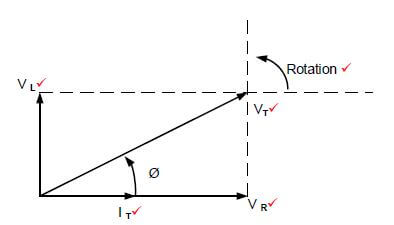 (5)
(5)
5.3
5.3.1
- XL = VT
IL
=240
6
= 40 Ω ✔ (3)
5.3.2
- XL = 2 × π × f × L
L = XL
2 × π × f
= 40
2 × π × f
= 127,32mH ✔(3)
5.3.3
- IT = √IR2 + IL2
= √72 + 62
= 9,22A ✔ (3) [20]
QUESTION 6: LOGIC
6.1
- Power supply✔
- Input and output devices✔
- Processor✔
- Programming device✔ (4)
6.2
- PLC system would use fewer relays, cam controllers, timers, and counters.✔
- Control panels would not have to be re-wired when production models were changed.✔
- PLC system physically takes up less space than Hardwired systems.✔ (3)
6.3 (3)
6.4 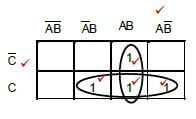
NOTE: Please take note of the mark allocation indicated for grouping.
- Q = AB +C(9)
6.5
6.5.1 (5)
(5)
6.6
6.6.1
- A counter is used to count the number of pulses✔ before an activity can happen.✔
- The pulses could be anything that needs counting (2)
6.6.2
- Markers are used as a temporary storage space to hold a condition✔
- that must be carried from one sequence to another✔
- A marker is used to transfer the outcome of one rung to other rungs. (2)
6.6.3 A latch provides some kind of memory element.✔ It acts as a holding in contact. ✔ (2)
6.7
6.7.1 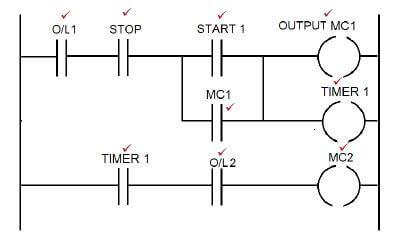 (9)
(9)
6.7.2 Motor starter with a time delay✔ (1) [40]
QUESTION 7: AMPLIFIERS
7.1
7.1.1 Negative✔ (1)
7.1.2 Positive✔ (1)
7.2 The gain ✔ of the circuit with no feedback ✔ (2)
7.3 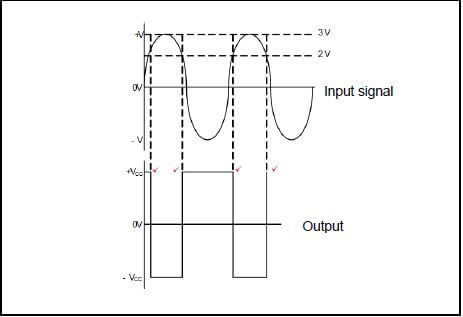 (4)
(4)
7.4
- Audio application where the signal must be inverted✔
- Filters
- Oscillators
- Controllers (2)
7.5
7.5.1 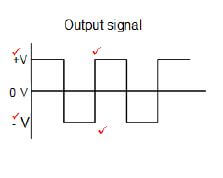 (4)
(4)
Note:
Labelling = 2 marks
Waveform = 2 marks
7.5.2 Pulse generator✔ (1)
7.6 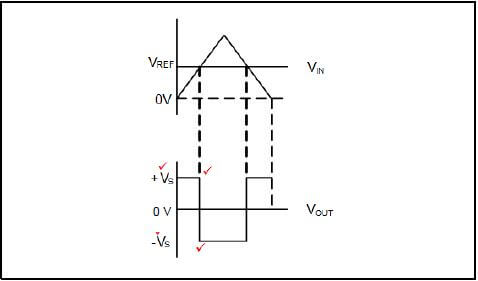 (4)
(4)
Note:
Labelling = 2 marks
Waveform = 2 marks
7.7 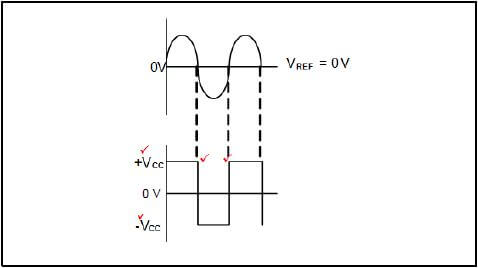 (4)
(4)
Note:
Labelling = 2 marks
Waveform = 2 marks
7.8
- High pass filters✔
- Square wave generators✔
- PID controllers (2)
7.9
- fr = 1
2π√LTC
= 1
2 × π × √2,2 × (47 × 10-9)
= 494,95Hz ✔ (3)
7.10 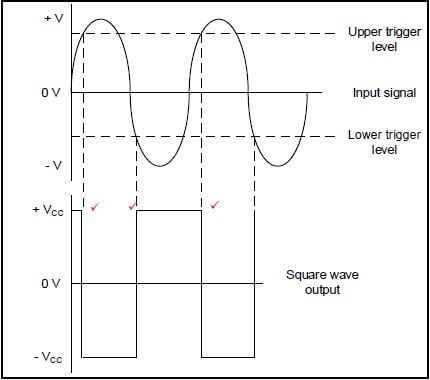 (3)
(3)
7.11
- Square wave generator✔
- Relaxation oscillators✔
- Clean noisy signal
- Interfacing analogue signal to digital circuitry (2)
7.12
7.12.1 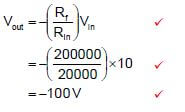 (3)
(3)
7.12.2 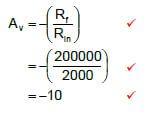 (3)
(3)
7.13
7.13.1
- Relaxation oscillator✔
- Memory elements✔ (2)
7.13.2 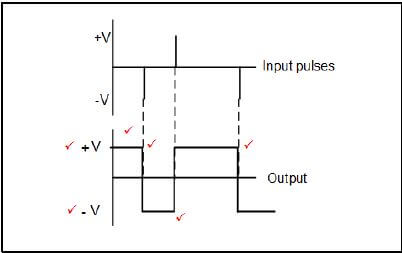 (6)
(6)
7.14
- fr = 1
2π√6RC
= 1
2 × π × √6 × 25 × 103 × (47 × 10-9)
= 55,3Hz ✔ (3)
[50]
TOTAL: 200
ELECTRICAL TECHNOLOGY GRADE 12 QUESTIONS - NSC PAST PAPERS AND MEMOS FEBRUARY/MARCH 2018
ELECTRICAL TECHNOLOGY
GRADE 12
NSC PAST PAPERS AND MEMOS
FEBRUARY/MARCH 2018
INSTRUCTIONS AND INFORMATION
- This question paper consists of SEVEN questions.
- Answer ALL the questions.
- Sketches and diagrams must be large, neat and fully labelled.
- Show ALL calculations and round off answers correctly to TWO decimal places.
- Number the answers correctly according to the numbering system used in this question paper.
- You may use a non-programmable calculator.
- Show the units for ALL answers of calculations.
- A formula sheet is provided at the end of this question paper.
- Write neatly and legibly.
QUESTIONS
QUESTION 1: OCCUPATIONAL HEALTH AND SAFETY
1.1 Give ONE unsafe condition that may lead to an accident in a workshop. (1)
1.2 Explain who is responsible for ensuring safe working conditions in a workshop. (2)
1.3 Explain the term human rights with reference to working conditions in the workplace. (2)
1.4 Explain why a person under the influence of drugs may not operate machinery in the workplace. (2)
1.5 Explain the importance of carrying out a risk analysis in a workshop. (3) [10]
QUESTION 2: THREE-PHASE AC GENERATION
2.1 FIGURE 2.1 below shows a three-phase circuit. 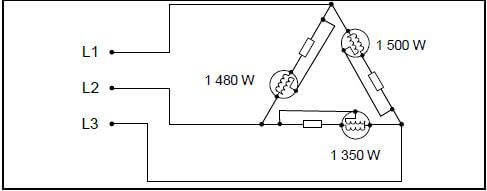
FIGURE 2.1: UNBALANCED THREE-PHASE CIRCUIT
2.1.1 Identify the method of power measurement. (1)
2.1.2 Explain why EACH wattmeter has one coil connected in parallel with the load and one coil connected in series. (3)
2.2 State TWO advantages of a three-phase distribution system over a single-phase distribution system. (2)
2.3 Refer to domestic dwellings and explain what information the kilowatt-hour meter provides. (2)
2.4 Two wattmeters are connected to measure the input power to a three-phase system. The readings on the wattmeters are 2,5 kW and 500 W respectively. Calculate the total power delivered to the load.
Given:
P1 = 2,5 kW
P2 = 500 W (3)
2.5 The load connected to a three-phase supply consists of three similar coils connected in star. The current drawn by the load is 25 A. The input power is 11 kW at a power factor of 0,8 lagging.
Given:
IL = 25 A
Pin = 11 kW
p.f. = 0,8 lagging
Calculate the:
2.5.1 Supply voltage (3)
2.5.2 Phase current (2)
2.6 Describe how a three-phase alternating-voltage supply is generated. (4) [20]
QUESTION 3: THREE-PHASE TRANSFORMERS
3.1 Describe how power is transferred from the primary to the secondary winding of a transformer. (5)
3.2 Name THREE cooling methods used in a transformer. (3)
3.3 Describe the cause of copper losses in transformers. (2)
3.4 A three-phase delta-star transformer has 1 500 turns per phase on the primary winding and 50 turns per phase on the secondary winding. The supply voltage is 3,3 kV. 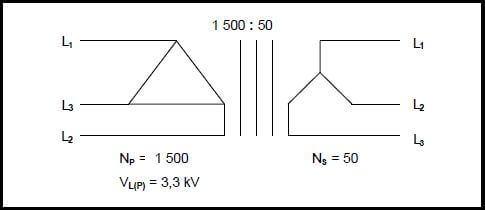
FIGURE 3.4: THREE-PHASE TRANSFORMER
Given:
NP = 1 500 turns
NS = 50 turns
VL(P) = 3,3 kV
Calculate the:
3.4.1 Turns ratio of the transformer (3)
3.4.2 Primary phase voltage (2)
3.4.3 Secondary phase voltage (3)
3.4.4 State, with a reason, whether the transformer in QUESTION 3.4 is a step-down or a step-up transformer. (2) [20]
QUESTION 4: THREE-PHASE MOTORS AND STARTERS
4.1 Refer to a three-phase squirrel-cage induction motor and answer the questions that follow.
4.1.1 State TWO advantages of this motor over a single-phase motor. (2)
4.1.2 State how the direction of rotation may be changed. (2)
4.1.3 Describe the basic operation of the motor. (7)
4.2 Explain why it is important to do a mechanical inspection of a motor before it is energised. (2)
4.3 Explain what will happen to the speed of an induction motor if the supply frequency is increased. (2)
4.4 Describe why an insulation test between windings must be carried out on an induction motor. (2)
4.5 Name ONE mechanical test that must be carried out on a motor before it is energised. (1)
4.6 A three-phase delta-connected motor draws a current of 9 A at full load and delivers an output power of 4 kW when connected to a 380 V/50 Hz supply. The motor has a power factor of 0,8.
Given:
VL = 380 V
IL = 9 A
POUT = 4 kW
f = 50 Hz
p.f. = 0,8
Calculate the following at full load:
4.6.1 Input power of the motor (3)
4.6.2 Efficiency of the motor (3)
4.7 FIGURE 4.7 below represents the control circuit of an automatic sequence starter. 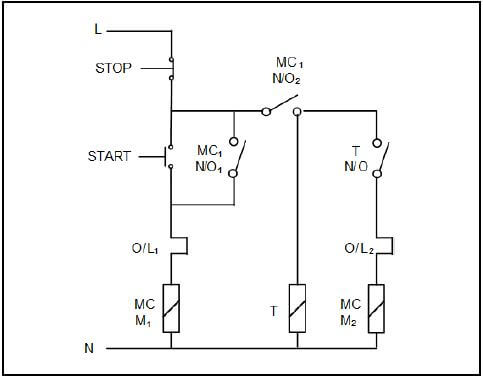
FIGURE 4.7: CONTROL CIRCUIT OF AN AUTOMATIC SEQUENCE STARTER
4.7.1 State the TWO conditions that must be met for the contact labelled MC1 N/O2 to close. (2)
4.7.2 Explain the function of the timer. (2)
4.7.3 State what determines the settings of O/L1 and O/L2. (1)
4.7.4 Describe the operation of the circuit. (5)
4.8 A star-delta starter is used to limit the starting current of a motor at start. Describe how the starter achieves its function. (3)
4.9 Explain how a contactor may be used as a switch. (3) [40]
QUESTION 5: RLC
5.1 FIGURE 5.1 below shows a capacitor connected to a 240 V/50 Hz supply.
FIGURE 5.1: CAPACITOR CIRCUIT
Given:
VT = 240 V
f = 50 Hz
XC = 27 Ω
5.1.1 Calculate the capacitance of the capacitor. (3)
5.1.2 Explain what will happen to the current flow if the supply frequency is increased. (3)
5.2 FIGURE 5.2 below shows a series RL circuit. Draw the phasor diagram that represents the circuit.
FIGURE 5.2: SERIES RL CIRCUIT (5)
5.3 FIGURE 5.3 below shows a parallel RL circuit connected to a 240 V/50 Hz supply. 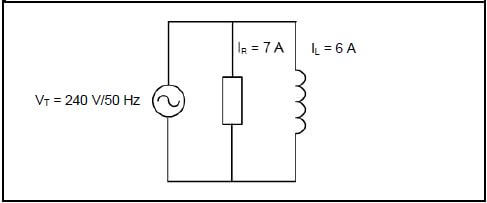
FIGURE 5.3: PARALLEL RL CIRCUIT
Given:
IR = 7 A
IL = 6 A
VT = 240 V
f = 50 Hz
Calculate the:
5.3.1 Inductive reactance (3)
5.3.2 Inductance (3)
5.3.3 Total current (3) [20]
QUESTION 6: LOGIC
6.1 Name FOUR main components of a simple PLC. (4)
6.2 State THREE advantages of a PLC system over a hardwired system. (3)
6.3 Draw a fully labelled block diagram of a PLC scan cycle. (3)
6.4 Write the simplified Boolean equation for the expression below. Use a three-variable Karnaugh map.
X =A B C+A B C+ ABC+ A B C(9)
6.5 Simplify the following Boolean equation by using Boolean algebra: (Show ALL the steps.)
Q = AB C+ AB C+ A B C(5)
6.6 Refer to a ladder logic diagram and explain the application of the following terms:
6.6.1 Counter (2)
6.6.2 Marker (2)
6.6.3 Latch (2)
6.7 Refer to FIGURE 6.7 below and answer the questions that follow. 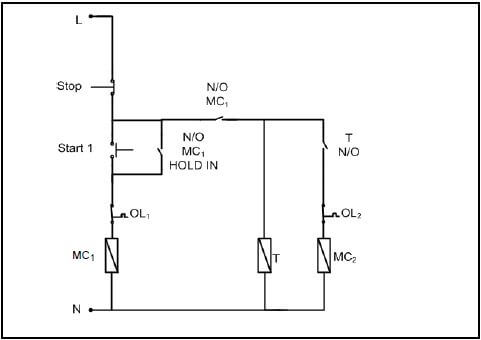
FIGURE 6.7
6.7.1 Draw the ladder logic diagram that will execute the same function in a PLC system. (9)
6.7.2 Give ONE example where the circuit in FIGURE 6.7 may be used in an electrical application. (1) [40]
QUESTION 7: AMPLIFIERS
7.1 State the polarity of the output voltage of the operational amplifier (op amp) in FIGURE 7.1 below for the following inputs, if:
7.1.1 V1 > V2 (1)
7.1.2 V1 < V2 (1) 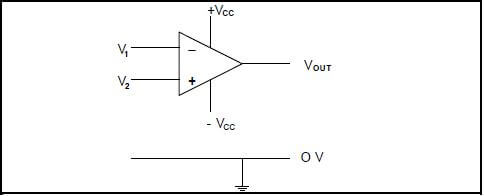
FIGURE 7.1: OP AMP
7.2 Explain the term open loop gain. (2)
7.3 FIGURE 7.3.1 below shows the input to a voltage comparator op amp in FIGURE 7.3.2. Draw the input signal and directly below that, on the same y-axis, draw the output signal. 
FIGURE 7.3.1: INPUT TO A VOLTAGE COMPARATOR OP AMP 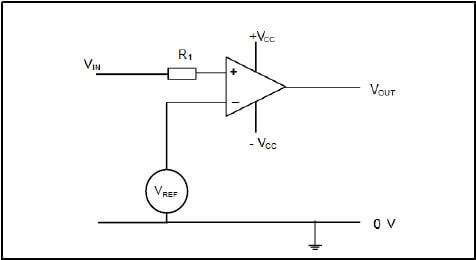
FIGURE 7.3.2: VOLTAGE COMPARATOR OP AMP (4)
7.4 Name TWO applications of an inverting amplifier. (2)
7.5 Refer to the astable multivibrator circuit diagram in FIGURE 7.5 below and answer the questions that follow. 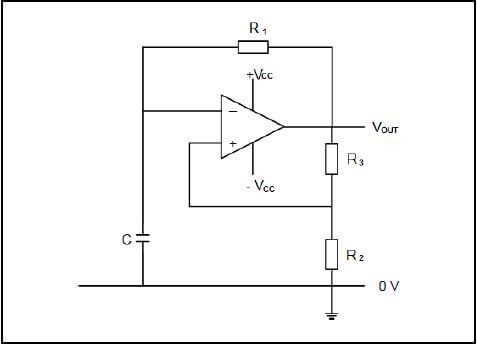
FIGURE 7.5: ASTABLE MULTIVIBRATOR
7.5.1 Draw a labelled output signal of the astable multivibrator. (4)
7.5.2 State ONE application of the astable multivibrator. (1)
7.6 FIGURE 7.6 below shows the input signal to an inverting comparator. The reference voltage is greater than zero. Draw the input signal and directly below that, on the same y-axis, draw the output signal. Label your answer. 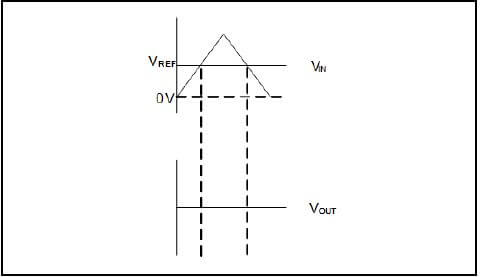
FIGURE 7.6: INPUT SIGNAL TO AN INVERTING COMPARATOR (4)
7.7 FIGURE 7.7 below shows the input signal to a non-inverting comparator. The reference voltage is equal to zero. Draw the input signal and directly below that, on the same y-axis, draw the output signal. Label your answer. 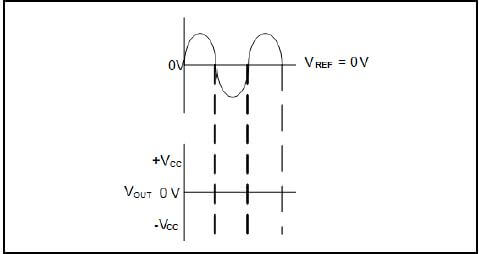
FIGURE 7.7: INPUT SIGNAL TO A NON-INVERTING COMPARATOR (4)
7.8 State TWO applications of the differentiator op amp. (2)
7.9 Calculate the resonant frequency of a Hartley oscillator op amp which has a 47 nF capacitor and two coils with a total inductance of 2,2 H connected in the circuit.
Given:
LT = 2,2 H
C = 47 nF (3)
7.10 FIGURE 7.10 below shows the input signal to a Schmitt trigger op amp. Draw the input signal and directly below that, on the same y-axis, draw the output signal when the Schmitt trigger is connected in the inverting configuration. 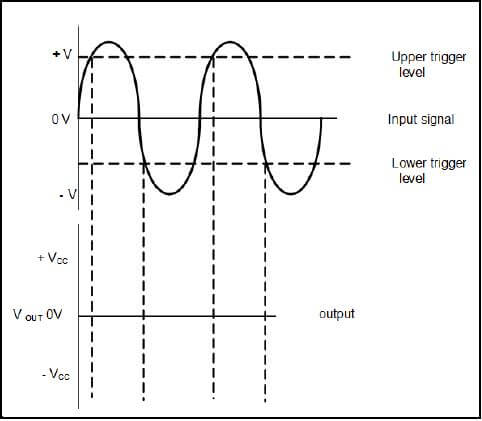
FIGURE 7.10: INPUT SIGNAL TO A SCHMITT TRIGGER OP AMP (3)
7.11 State TWO applications of a Schmitt trigger. (2)
7.12 An input voltage of 10 V is supplied to the input of an inverting amplifier circuit with an input resistor of 20 kΩ and a feedback resistor of 200 kΩ. The amplifier circuit is connected to a split voltage supply. Calculate the:
7.12.1 Output voltage of the amplifier (3)
7.12.2 Amplification factor of the amplifier (3)
7.13 Refer to FIGURE 7.13.1 below and answer the following questions. 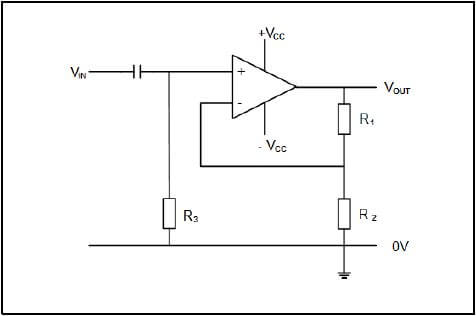
FIGURE 7.13.1: BISTABLE MULTIVIBRATOR OP AMP CIRCUIT
7.13.1 State TWO applications of the op amp. (2)
7.13.2 Draw the input trigger pulse in FIGURE 7.13.2 below and directly below that, on the same y-axis, the correct output in relation to the given input. Take the initial output voltage as maximum positive. 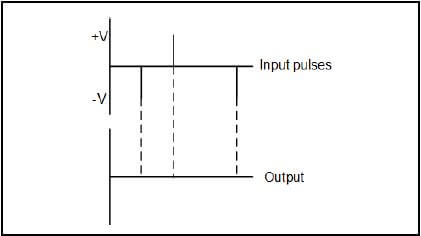
FIGURE 7.13.2 (6)
7.14 Calculate the resonant frequency of a three-stage RC phase-shift oscillator with resistors values of 25 kΩ and capacitors values of 47 nF. (3) [50]
TOTAL: 200
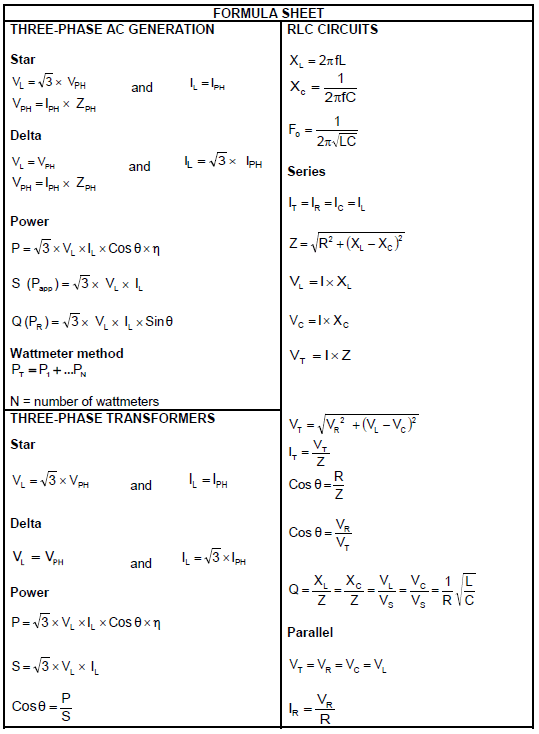
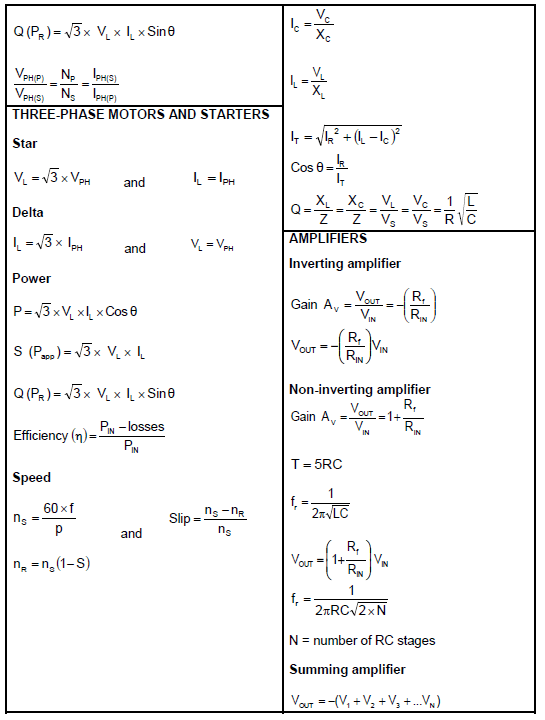
ENGINEERING GRAPHICS AND DESIGN PAPER 2 GRADE 12 QUESTIONS - NSC PAST PAPERS AND MEMOS FEBRUARY/MARCH 2018
ENGINEERING GRAPHICS AND DESIGN
PAPER 2
GRADE 12
NSC PAST PAPERS AND MEMOS
FEBRUARY/MARCH 2018
QUESTIONS





ENGINEERING GRAPHICS AND DESIGN PAPER 2 GRADE 12 MEMORANDUM - NSC PAST PAPERS AND MEMOS FEBRUARY/MARCH 2018
ENGINEERING GRAPHICS AND DESIGN
PAPER 2
GRADE 12
NSC PAST PAPERS AND MEMOS
FEBRUARY/MARCH 2018
MEMORANDUM
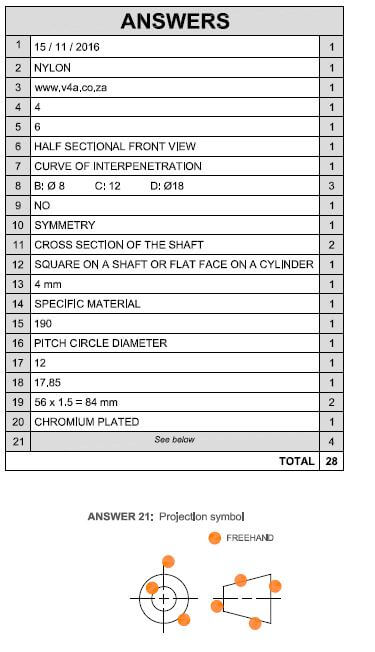
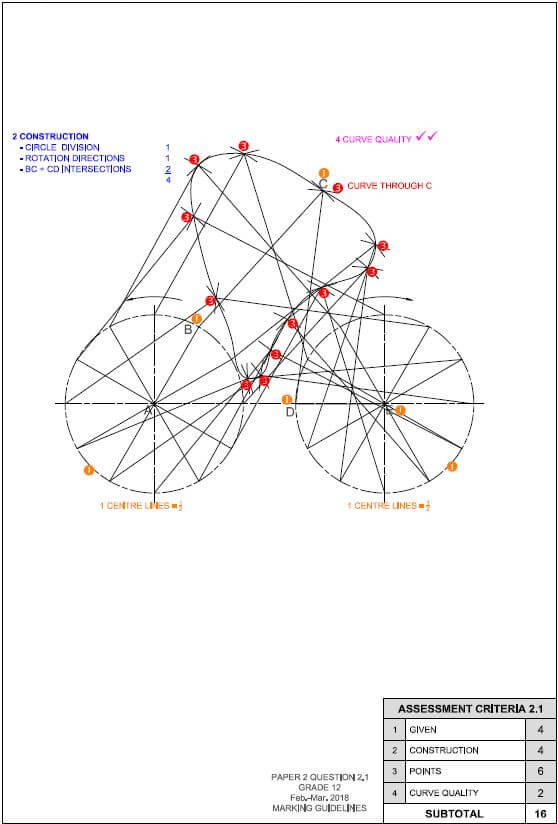
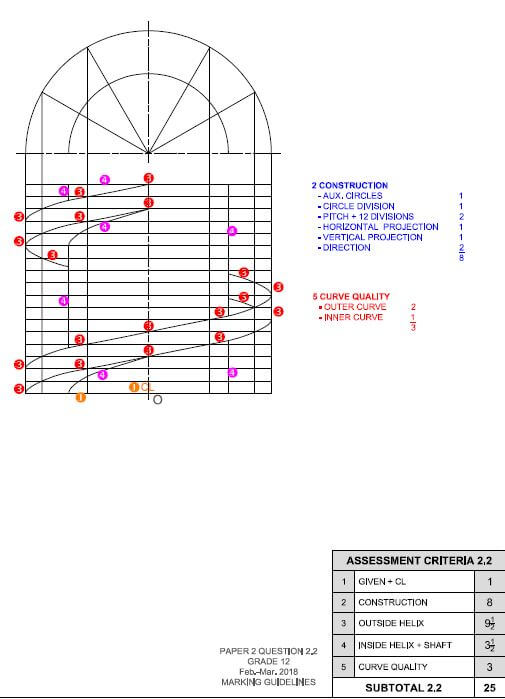
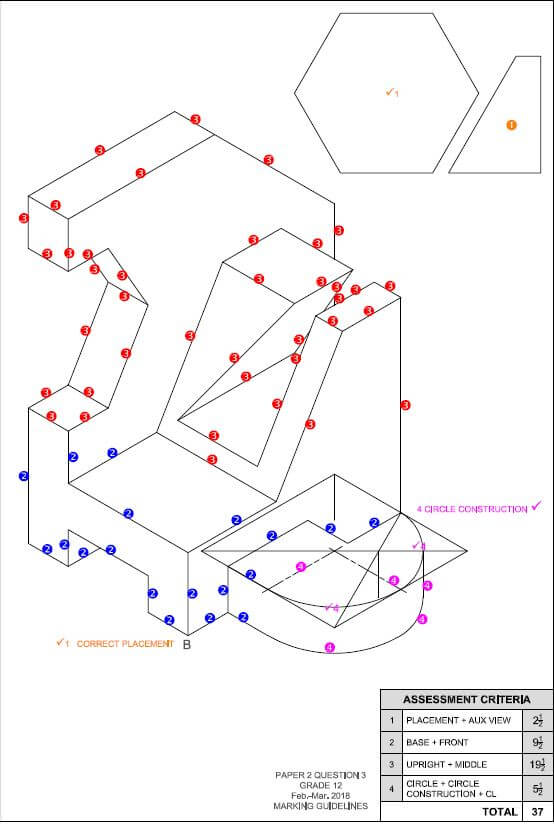
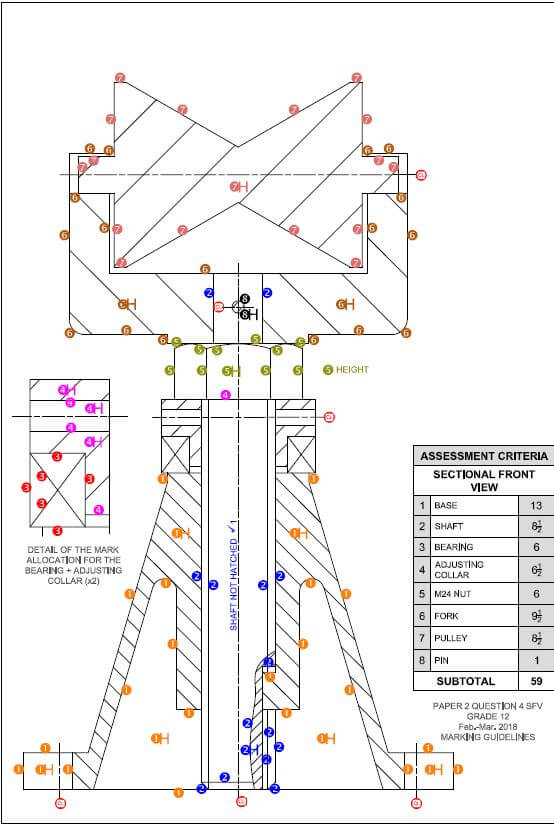
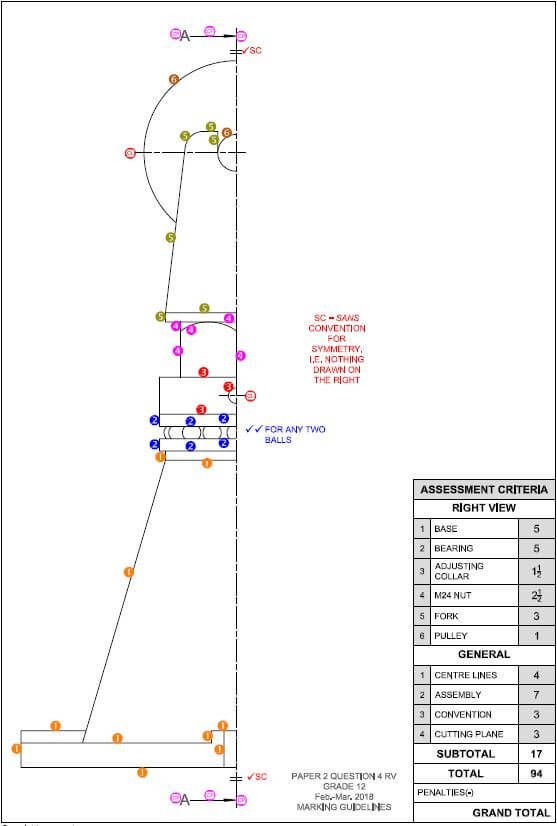
DRAMATIC ARTS GRADE 12 QUESTIONS - NSC PAST PAPERS AND MEMOS FEBRUARY/MARCH 2018
DRAMATIC ARTS
GRADE 12
NSC PAST PAPERS AND MEMOS
FEBRUARY/MARCH 2018
INSTRUCTIONS AND INFORMATION
- This question paper consists of FOUR sections:
SECTION A: 20th Century Theatre Movements (30)
SECTION B: South African Theatre: 1960–1994 (40)
SECTION C: South African Theatre: Post-1994 – Contemporary (40)
SECTION D: The History of Theatre, Practical Concepts, Content and Skills (40) - SECTION A
QUESTION 1 is COMPULSORY.
Refer to the play text you have studied and the relevant 20th Century Theatre Movement.
EPIC THEATRE- Caucasian Chalk Circle Bertolt Brecht
- Kaukasiese Krytsirkel Translation of Bertolt Brecht play text
- Mother Courage Bertolt Brecht
- Moeder Courage Translation of Bertolt Brecht play text
- The Good Person of Szechwan Bertolt Brecht
- Kanna Hy Kô Hystoe Adam Small
OR- THEATRE OF THE ABSURD
- Waiting for Godot Samuel Beckett
- Afspraak met Godot Translation of Samuel Beckett play text
- Bagasie André P Brink
- The Bald Primadonna Eugene Ionesco
- Die Kaalkop Primadonna Translation of Eugene Ionesco play text
OR- POSTMODERN THEATRE
- Skrapnel Willem Anker
- Top Girls Carol Churchill
- Popcorn Ben Elton
- Buried Child Sam Shepard
- SECTION B
This section consists of THREE questions. Answer only ONE question in this section.
QUESTION 2: Woza Albert! Percy Mtwa, Mbongeni Ngema and Barney Simon OR
QUESTION 3: Sophiatown Junction Avenue Theatre Company OR
QUESTION 4: Siener in die Suburbs PG du Plessis - SECTION C
This section consists of THREE questions. Answer only ONE question in this section.
QUESTION 5: Nothing but the Truth John Kani OR
QUESTION 6: Groundswell Ian Bruce OR
QUESTION 7: Missing Reza de Wet - SECTION D
This section is COMPULSORY. Answer QUESTIONS 8 AND 9.
QUESTION 8: Theatre history, Practical concepts, Content and Skills
QUESTION 9: Theatre history, Practical concepts, Content and Skills
QUESTIONS
SECTION A: 20th CENTURY THEATRE MOVEMENTS
This section is COMPULSORY.
QUESTION 1
Study SOURCE A below and answer the question that follows.
SOURCE A 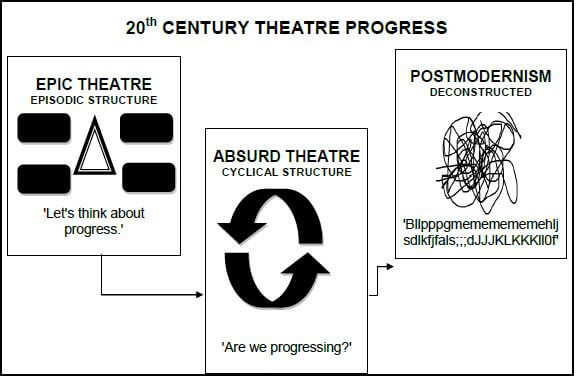
Evaluate how the diagram of any ONE of the 20th Century Theatre Movements in SOURCE A reflects the subject matter, socio-political context and plot structure of the play text you have studied. Create an original argument, in the form of an evaluative essay, which refers to the question, the diagram you have chosen, the play text you studied and its associated Theatre Movement (Theatre of the Absurd or Epic Theatre or Postmodern Theatre).
Indicate the title of the play text you have studied at the top of your essay.
TOTAL SECTION A: 30
SECTION B: SOUTH AFRICAN THEATRE: 1960–1994
Answer only ONE question in this section.
QUESTION 2: WOZA ALBERT! BY PERCY MTWA, MBONGENI NGEMA AND BARNEY SIMON
Study SOURCE B below and answer the questions that follow.
SOURCE B
BWW Review: Will the real Woza Albert! please stand up? About ten years ago, I saw a production of Woza Albert! that added pre-recorded music to an already uninspired reading of Mbongeni Ngema, Percy Mtwa and Barney Simon's anti-apartheid play. The music neither elevated (raised the standard of) that production nor illuminated (clarified) the text. By David Fick |
2.1 Identify the 'Albert' referred to in the title and state what he represents. (2)
2.2 Explain, with examples, how Mbongeni Ngema and Percy Mtwa created the music in the original production of Woza Albert!, through their use of vocal and physical skills. (4)
2.3 Analyse why the use of 'pre-recorded music' (lines 1–2) may change the impact of a production of Woza Albert!. (3)
2.4 Motivate why the play, Woza Albert!, may still be a success even 'more than three decades after its premiere' (line 5). (4)
2.5 You are responsible for directing a scene in Woza Albert! using a genre that is different from Poor Theatre.
2.5.1 Name the genre you will use to direct your scene. (1)
2.5.2 Describe the scene you have selected. (2)
2.5.3 Explain how you could stage the scene to reflect the characteristics of the genre you selected in QUESTION 2.5.2. (6)
2.6 Analyse why the final scene of Woza Albert! is a 'thrilling conclusion' (line 12) to the play and has the ability 'to inspire solidarity (unity) and action' (line 15). (6)
2.7 Evaluate whether the 'sociopolitical and economic situation' (line 6) portrayed in Woza Albert! is still relevant to South Africa today.
Your evaluation should include THREE specific examples from the play text and TWO examples of current events. (12) [40]
QUESTION 3: SOPHIATOWN BY THE JUNCTION AVENUE THEATRE COMPANY
Study SOURCE C below and answer the questions that follow.
SOURCE C
EXTRACT FROM SOPHIATOWN Koloi e, ha ena marili (x2) This car, this car MINGUS: It dances 'Chips' (x2) 10 |
3.1 Refer to SOURCE C.
3.1.1 Describe the mood created by the song and the effect it may have on the audience. (2)
3.1.2 Motivate what the car in the song might symbolise. (4)
3.1.3 Explain the purpose of the song as a theatrical device in this scene. (2)
3.1.4 Suggest why the creators of Sophiatown chose to use a variety of languages in the play. (4)
3.1.5 Motivate how you would stage SOURCE C in order to communicate the message of this scene. (6)
3.1.6 Discuss the vocal and physical skills required by the actors in order to perform this scene effectively. (6)
SOURCE D
The main conflict in Sophiatown is that of the individual against societal forces. Society's rules or laws prevent the characters from reaching their own goals. In Sophiatown, the societal power is the apartheid government, which enforced racial segregation. This is also the underlying cause of the various occurrences of interpersonal conflict in the play and the internal conflict within each of the characters. 5 [Source: Sophiatown, 2015 Edition] |
3.2 Refer to SOURCE D.
3.2.1 Explain any TWO of 'society's laws' which prevented the characters in Sophiatown from 'reaching their own goals' (line 2). (4)
3.2.2 Evaluate how the many conflicts between the characters reflect the mood and messages of Sophiatown.
Substantiate your answer by referring to the following:
- Interpersonal conflict (conflict between characters)
- Internal conflict (conflict within a character)
- Decisions made by the characters and the resulting actions, behaviour and consequences (12) [40]
QUESTION 4: SIENER IN DIE SUBURBS BY PG DU PLESSIS
Study SOURCE E below and answer the questions that follow.
SOURCE E
PLAYWRIGHT'S DIRECTIONS FOR THE SETTING OF THE PLAY Dis Vrydagaand en somer en nog lig in die suidelike voorstede van Johannesburg. Ons kyk na die agterplaas van Ma se semi en sien: |
Refer to SOURCE E and then imagine that you are the director of a new production of Siener in die Suburbs. You are being interviewed by the media before the opening night of the play. They ask you the following questions:
4.1 Name the setting (time AND place) of the play. (2)
4.2 Name the type of dramatic structure used by the playwright of Siener in die Suburbs. (1)
4.3 Suggest how the time of the action is a reflection of the realistic nature of the play. (2)
4.4 Give a brief character sketch of Ma which will be included in the programme notes of the play. (3)
4.5 Describe, with reasons, the choice of costume that you have selected for the actor playing the role of Ma in your production. (4)
4.6 Name and describe the vocal and physical skills an actor would require to portray the role of Ma effectively. (6)
4.7 Discuss the significance of the 'enkelgarage' (line 3) to the action in the play. (6)
4.8 Suggest what might be the dramatic value of including 'AT YOUR OWN RISK' (line 7), painted red, on the set of the play. (4)
SOURCE F
A REVIEW OF SIENER IN DIE SUBURBS ON GOODREADS.COM PG du Plessis's play was lauded (celebrated) when first performed and published. After more than 40 years the characters, conflict and dialogue retain power – in the hands of an excellent cast it will still have an audience spellbound. [Source: http://www.goodreads.com/book/show/1231642.Siener_in_die_suburbs] |
4.9 Refer to SOURCE F.
'After more than 40 years the characters, conflict and dialogue still 'retain power' (line 2).
Evaluate the validity (truth) of the statement above. You must refer to the following in your discussion:
- Characters
- Conflict
- Dialogue
- Relevance to society today (12) [40]
TOTAL SECTION B: 40
SECTION C: SOUTH AFRICAN THEATRE: POST-1994 – CONTEMPORARY
Answer only ONE question in this section.
QUESTION 5: NOTHING BUT THE TRUTH BY JOHN KANI
Study SOURCE G below and answer the questions that follow.
SOURCE G
EXTRACT FROM NOTHING BUT THE TRUTH SIPHO enters the kitchen unnoticed … MANDISA: Come with me to London. We will go together to the London Fashion Week. My father always said he wished you could come to London. |
5.1 Describe how the actor playing Sipho could 'enter(s) the kitchen unnoticed' (line 1). (2)
5.2 Explain how Sipho's entrance could add to the dramatic tension of this scene. (3)
5.3 Refer to Thando's words in line 4.
5.3.1 Suggest why Thando is 'so excited and confused at the same time'. (2)
5.3.2 Analyse how the actor playing Thando could reflect that she is 'excited and confused at the same time' through her vocal and physical skills. (4)
5.3.3 Motivate why Mpho's opinion is so important to Thando. (3)
5.4 Discuss the reasons for the conflict between Mandisa and Sipho. (4)
5.5 Refer to Sipho's words in line 14.
5.5.1 Explain why Sipho makes this statement by referring to TWO examples in the play as to why he feels this way. (6)
5.5.2 Describe the tone of voice the actor playing Sipho could use to emphasise his feelings in this scene (2)
5.6 Explain why the audience might find line 15 humorous in the context of the play as a whole. (4)
5.7 Realistic drama is real life portrayed on stage.
Evaluate how Nothing But The Truth is 'real life portrayed on stage'.
In your discussion refer to the following:
- Language
- Characters
- Staging (10) [40]
QUESTION 6: GROUNDSWELL BY IAN BRUCE
Study SOURCES H and I below and answer the questions that follow.
SOURCE H 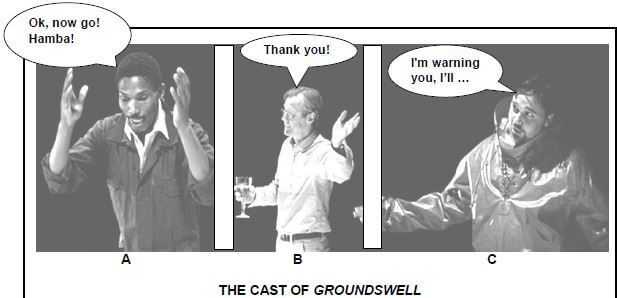
6.1 Identify the genre of the play Groundswell. (1)
6.2 Name the characters marked A, B and C in SOURCE H. Write only the letter and the name next to the question number (6.2). (3)
6.3 Explain how the costume of each actor in SOURCE H reflects his character and situation. (6)
6.4 Motivate how each actor's posture and dialogue is suitable for the character he is playing (SOURCE H). (6)
6.5 The characters in Groundswell are complex individuals, driven by their personal desires and dreams. This is why tension between the characters exists.
Discuss this statement by referring to how the characters add to the dramatic tension in Groundswell. (6)
SOURCE I
'The play is gender biased!' [Source: @theatre4UsAll] |
6.6 After watching a recent production of Groundswell, you are required to respond to the accusations and criticisms of the tweet in SOURCE I to defend the universal nature of the play.
6.6.1 Argue against the statement: 'The play is gender biased.' (4)
6.6.2 Comment on the personal bias of the tweet to show how we can be influenced by social media. (4)
6.6.3 Evaluate why everyone would benefit from studying and watching this play.
In your discussion refer to the following:
- Characters
- Themes of belonging and identity (10) [40]
QUESTION 7: MISSING BY REZA DE WET
Study SOURCE J and answer the questions that follow.
SOURCE J
AN ADVERT FOR A 2010 PRODUCTION OF MISSING Missing It is 31 August. The wind is howling around the corners of a derelict little house. From afar the sound of circus music is audible. Around the kitchen table, three women, each trying to calm her own fears. Will a girl again go missing in her snow white confirmation dress this year, like previous years? The women are anxious – but believe that the minister/pastor and elders, who are praying the whole evening, will avert the evil. 5 Suddenly there is a knock at the door. It is an unfamiliar, blind constable who claims that he has come to keep an eye on them … Will the constable be able to protect them from the dangers of the night? [Source: http://argief.litnet.co.za/article.php?news_id=87848] |
Your Dramatic Arts teacher presents you with the advertisement above to use as inspiration when you direct your own production of Missing at your school.
7.1 Explain the significance of the following in the play:
7.1.1 '31 August' (line 1) (1)
7.1.2 'The wind is howling' (line 1) (1)
7.1.3 'circus music' (line 2) (2)
7.2 Suggest the symbolic significance of Reza de Wet's choice of colour for the 'confirmation dress' (lines 3–4). (2)
7.3 Analyse how the advertisement creates a mysterious mood. (SOURCE J) (4)
7.4 Evaluate whether you think the inclusion of the picture used in the advertisement for the play is appropriate. (SOURCE J) (4)
7.5 Describe the type of stage you would choose for your own production of Missing. Refer to the GENRE as well as TECHNICAL considerations with regard to the play. (6)
7.6 Name any TWO props you wish to include in the play in order to highlight the themes of the play. Motivate why you want to include the props named. (4)
7.7 The advertisement refers to the 'blind constable' (line 6). (SOURCE J) Explain the significance of blindness as a motif (image) in the play as a whole. (6)
7.8 Write to your school principal to motivate why Missing is an excellent choice of play to be staged at your school.
Include the following in your discussion:
- Knowledge of Dramatic Arts skills
- Analysis of the play text (genre, characters, themes and relevance)
- Budget and staging (10) [40]
TOTAL SECTION C: 40
SECTION D: THE HISTORY OF THEATRE, PRACTICAL CONCEPTS, CONTENT AND SKILLS
This section is COMPULSORY. Answer QUESTIONS 8 AND 9.
QUESTION 8
Study SOURCE K below and answer the questions that follow.
SOURCE K 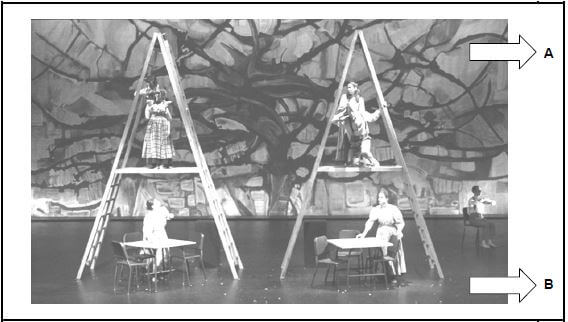
8.1 Identify the parts of the stage labelled A and B. (2)
8.2 Give TWO possible theatrical uses for the ladders in SOURCE K. (4)
8.3 Discuss how the staging in SOURCE K could reflect any ONE 20th century movement (-ism) you studied this year. (4)
SOURCE L
|
8.4 Describe Grotowski's use of space in Kordian in SOURCE L. (4)
8.5 Identify and explain any TWO of Grotowski's principles of acting. (6)
8.6 Analyse the staging challenges that Grotowski might have faced when directing this production. (4)
8.7 Explain the impact this kind of theatrical production might have had on the audience members watching the play.
Refer to the following:
- Staging
- Setting of the play (4) [28]
QUESTION 9
Study the source below and answer the questions that follow.
SOURCE M
One of the aims of the National Curriculum is to … promote human rights, inclusivity, environmental and social justice. |
Apply your knowledge of dramatic processes, principles and skills and discuss how Dramatic Arts promotes the aims of the National Curriculum in SOURCE M.
Refer to the following:
- Play texts you have studied and lessons learnt
- Perfomances you have seen and their impact
- Productions in which you have participated and how you developed [12]
TOTAL SECTION D: 40
GRAND TOTAL: 150
DRAMATIC ARTS GRADE 12 MEMORANDUM - NSC PAST PAPERS AND MEMOS FEBRUARY/MARCH 2018
DRAMATIC ARTS
GRADE 12
NSC PAST PAPERS AND MEMOS
FEBRUARY/MARCH 2018
GENERAL NOTES FOR THE CHIEF MARKER AND MARKERS
1. The purpose of assessment/examination processes is not only to determine the 'remembering' of knowledge taught and learnt at each of the 6 cognitive levels of knowledge, but also to determine the complexity of the thinking process the candidate applies to the knowledge retrieved from memory. The tool to assess these two components is Anderson and Krathwohl's revised Blooms' Taxonomy.
- 6 cognitive levels of difficulty
- 4 thinking processes of complexity
2. The marking guideline discussion forum, before marking commences, cannot sufficiently predict all responses. Provincial markers need to take this into account, be open to candidates' responses and make sure that different teaching styles do not disadvantage the learner/candidate.
3. Spend the first day unpacking the quality and quantity of the evidence in the marking guidelines, standardise required responses and find common definitions and concepts. Assimilate the
- Expected responses for each question
- The cognitive level of difficulty required from the candidate
- The type of thinking process and complexity of thinking required from the candidate
- Action verbs used at each of the cognitive levels and the type of evidence required (facts, concepts, processes and thinking).
- Refer to the annexures at the end of the marking guidelines
4. If the marking guidelines do not give clear guidance, a marker must indicate, with a short comment, why marks were awarded or not.
5. Tick clearly next to the required cognitive level/thinking process of complexity/ concept/content/skills/knowledge aspects required when a mark is awarded. Markers should engage actively with the answer.
- Refer to rubrics in the annexure at the end of the marking guidelines
6. During the marking process, have regular rounds of consultation to ensure marking is standardised.
7. Where a candidate writes more than the suggested number of words, do not penalise (e.g. essay question).
8. Mark globally where possible. Markers accept any correct, relevant and well motivated answers.
9. Markers must check that candidates' responses align with the Curriculum Assessment Policy Statement's Broad Topics and Topics, Content (concepts, skills and knowledge).
STANDARDISATION OF MARKING ACROSS THE PROVINCES |
Rating of Essay and Response Questions
The chief marker in each province must clarify the paradigm from which the questions and the accompanying marking guidelines were designed and set:
1. Item difficulty:
How complex is the design of the question?
2. Task difficulty:
What is the cognitive level and thinking process required from the candidate?
3. Stimulus difficulty:
How difficult or easy is it to understand and apply the source?
4. Expected response difficulty:
What is the quantity (how much) and quality (how well) of the expected response, required from the candidate, as provided in the marking guidelines? Does it align with the item, task and stimulus?
Are the marks appropriately weighted and allocated?
–Leong: 2002
In the training of markers at the beginning of the marking process, the chief marker in each province should adhere to the following procedure. This will assist with the standardisation of the scoring of candidate's essays and responses for each part of the examination. It will also standardise national marking procedures, processes and results.
Introduction to the Task
- Raters read the task required from the Item and summarise it.
- Raters read the Item and plan a response to the task.
- Raters share response plans and summarise expectations for student responses/share not just the quantity of evidence (how much) but the quality of evidence (How well).
Introduction to the Rubric and Anchor Papers
- Trainer reviews rubric with reference to the task.
- Trainer reviews procedures for assigning holistic scores (i.e., by matching evidence from the response to the language of the rubric and by weighing all qualities equally).
- Trainer leads review of each anchor paper and commentary. (NOTE: Anchor papers are ordered from high to low within each score level.)
Practise Scoring Individually
- Raters score a set of practice papers individually. Raters should score the papers independently.
- Trainer records scores and leads discussion. (Practice papers should contain scores and commentaries.)
INSTRUCTIONS AND INFORMATION
- This question paper consists of FOUR sections:
SECTION A: 20th Century Theatre Movements (30)
SECTION B: South African Theatre: 1960–1994 (40)
SECTION C: South African Theatre: Post-1994 – Contemporary (40)
SECTION D: The History of Theatre, Practical Concepts, Content and Skills (40) - SECTION A
QUESTION 1 is COMPULSORY.
Refer to the play text you have studied and the relevant 20th Century Theatre Movement.- EPIC THEATRE
- Caucasian Chalk Circle Bertolt Brecht
- Kaukasiese Krytsirkel Translation of Bertolt Brecht play text
- Mother Courage Bertolt Brecht
- Moeder Courage Translation of Bertolt Brecht play text
- The Good Person of Szechwan Bertolt Brecht
- Kanna Hy Kô Hystoe Adam Small
OR- THEATRE OF THE ABSURD
- Waiting for Godot Samuel Beckett
- Afspraak met Godot Translation of Samuel Beckett play text
- Bagasie André P Brink
- The Bald Primadonna Eugene Ionesco
- Die Kaalkop Primadonna Translation of Eugene Ionesco play text
OR- POSTMODERN THEATRE
- Skrapnel Willem Anker
- Top Girls Carol Churchill
- Popcorn Ben Elton
- Buried Child Sam Shepard
- SECTION B
This section consists of THREE questions. Answer only ONE question in this section.
QUESTION 2: Woza Albert! Percy Mtwa, Mbongeni Ngema and Barney Simon
OR
QUESTION 3: Sophiatown Junction Avenue Theatre Company
OR
QUESTION 4: Siener in die Suburbs PG du Plessis - SECTION C
This section consists of THREE questions. Answer only ONE question in this section.
QUESTION 5: Nothing but the Truth John Kani
OR
QUESTION 6: Groundswell Ian Bruce
OR
QUESTION 7: Missing Reza de Wet - SECTION D
This section is COMPULSORY. Answer QUESTIONS 8 AND 9.
QUESTION 8: Theatre history, Practical concepts, Content and Skills
QUESTION 9: Theatre history, Practical concepts, Content and Skills
MEMORANDUM
SECTION A: 20th CENTURY THEATRE MOVEMENTS
QUESTION 1
Topic | 12.1: 20th Century 'isms' | |||||
Cognitive level of difficulty | Analysing, evaluating, creating | |||||
Command verbs | Discuss, evaluate, create | |||||
Explanation of command verb | To determine, judge, consider the significance, value, purpose, worth or condition of something by careful appraisal and study for the purpose of understanding, interpreting or guiding. | |||||
Complexity of Thinking Process | Metacognition | |||||
Level of Complexity/ Problem Solving | Very Difficult | |||||
Rubric type | Extended Constructed Response Rubric (ECR) | |||||
Mark allocation | Low | 9 | Middle | 12 | High | 9 |
Quality Level | Mark allocation | Quality of evidence |
High End | Score point | The response indicates application of a reasonable strategy that leads to a correct solution in the context of the problem. The procedural representations are correct. The explanation and/or justification is logically sound, clearly presented, fully developed, supports the solution, and does not contain significant conceptual errors. The response demonstrates a complete understanding and analysis of the problem. |
24–30 | ||
Average and Above Average | Score point | The response indicates application of a reasonable strategy that may or may not lead to a correct solution. The use of content/skill is essentially correct. The explanation and/or justification is generally well developed, feasible, and supports the solution. The response demonstrates a clear understanding and analysis of the problem. |
15–23 | ||
Achieved | Score point | The response indicates an incomplete application of a reasonable strategy that may or may not lead to a fit-for-purpose solution. The use of content/skill is fundamentally correct. The explanation and/or justification support the solution and are plausible, although it may not be well developed or complete. The response demonstrates a conceptual understanding and analysis of the problem. |
11–14 | ||
Weak | Score point | The response indicates little or no application of a reasonable strategy. It may or may not have the correct answer. The use of content/skill is incomplete or missing. The explanation and/or justification reveal serious flaws in reasoning. The explanation and/or justification may be incomplete or missing. The response demonstrates a minimal understanding and analysis of the problem. |
1–10 | ||
Not Achieved | Score point | The response is completely incorrect or irrelevant. There may be no response, or the response may state, 'I don't know.' |
0 |
The following content pointers serve as a guide:
The candidate must:
- Answer this question in the form of an essay
- Use the play text he/she has studied as an example
- Refer to either one of the three movements: Theatre of the Absurd OR Epic Theatre OR Postmodern Theatre in their answer
- Refer to the Source in their answer
- Demonstrate the question and source have been analysed, understood and integrated in their essay
The content of the essay must cover the following:
- ONE selected Theatre Movement:
- Theatre of the Absurd OR
- Epic Theatre OR
- Postmodern Theatre
- Play text studied
- Question
- Source
Markers note:
- Candidate must demonstrate that the above has been understood and critically analysed and applied in the essay
- Rote learnt knowledge must be contextualised in an original argument that displays factual, contextual, procedural and meta-cognitive thinking
- The rubric on the next page is a guide to the marker to assess the:
- Levels of cognitive process dimension (remembering, understanding, applying, analysing, evaluating and creating)
- Complexities of thinking displayed by the candidate (factual, conceptual, procedural, metacognitive)
- Responses may be in the form of notes
DESCRIPTOR MARKS | THE CANDIDATE DEMONSTRATES THE FOLLOWING: | |
Outstanding Metacognitive Knowledge Create | 27–30 90–100 A+ | Thinking process: Appraises factual, conceptual, procedural and meta-cognitive knowledge in relation to the question, source and content.
Cognitive level: Demonstrates an ability to create, reorganise, discover, renew, change, improve |
Excellent Metacognitive Knowledge Evaluate | 24–26 80–89 A | Thinking process: Appraises factual, conceptual, procedural and meta-cognitive knowledge in relation to the question, source and content and integrates the demands of the question and source in a differentiated, interpretative and interesting manner
Cognitive level: Demonstrates an ability to judge, critique, recommend, evaluate, propose |
Meritorious Procedural Knowledge Analyse | 21–23 70–79 B | Thinking process: Analyses, distinguishes and explores factual, conceptual and procedural knowledge in relation to the question, source and content. and integrates the demands of the question and source in an differentiated and interpretative manner
Cognitive level: Demonstrates an ability to infer, deconstruct concepts, interrelate, attribute, discover |
Substantial Procedural Knowledge Apply | 18–20 60–69 C | Thinking process: Analyses and distinguishes factual, conceptual and procedural knowledge in relation to the question, source and content. Integrates the demands of the question and source in an organised, differentiated and interpretative manner
Cognitive level: Demonstrates an ability to apply, construct, integrate |
Adequate Conceptual Knowledge Understand | 15–17 50–59 D | Thinking process: Explains, interprets and rephrases factual and conceptual knowledge in relation to the question, source, content and integrates the demands of the question and source in a conventional manner
Cognitive level: Demonstrates an ability to interpret, infer, exemplify, classify, summarise, compare, explain |
Moderate Conceptual Knowledge Understand | 12–14 40–49 E | Thinking process: Explains and interprets factual and conceptual knowledge to the question, source and content. Integrates the demands of the question and source in a differentiated manner
Cognitive level: Demonstrates an ability to interpret, infer, exemplify, classify, summarise, compare, explain, |
Elementary Factual Knowledge Remember | 10–11 30–39 F | Thinking process: Defines and applies knowledge from memory. Integrates the demands in relation to the question and source in an uncomplicated/straight forward/fundamental level within a common manner
Cognitive level: Demonstrates an elementary ability to problem solve, identify, list, relate, define |
Not Achieved Factual Knowledge Remember | 1–9 20–29 G | Thinking process: Remembers and applies knowledge from memory. Attempts to integrate the question and source but demonstrates a limited, to basic ability, to solve the demands of the question and quote
Cognitive level: Demonstrates a limited ability to identify, list, relate, define |
Not Achieved Factual Knowledge Remember | 0 H | Thinking process: Demonstrates no understanding of the question or source, unable to write an essay, provides no examples from the play text or the theatre movement OR
Cognitive level: Presents memorised information and content that does not answer the question |
The following content pointers serve as general information on the theatre movements.
EPIC THEATRE
Intention and purpose:
- Distances the audience from the action
- Allows the audience to see the world in which they live more clearly, rather than taking their beliefs for granted
- Makes a clear distinction between a Theatre of Illusion ('Dramatic' Theatre) and Epic Theatre
- Opposed to the idea of pretence (a typical feature of Realism)
- Spectators to be alert
- Realism has lost its worth – undermines the role of the spectator – reduces him to a passive onlooker
- Removes the 'illusion' of Realism
- Employs various techniques to 'alienate' the audience – difference between what they see on the stage and what is real
Techniques: Use of:
- 'Verfremdungseffekt' or alienation to distance the audience from the action on the stage
- Purpose of music – must provide a noteworthy commentary on the action, e.g. in Mother Courage the ironically bitter words of a song which speak of the character's steady moral decline are deliberately arranged to a sweet, carefree tune – the incongruity between the tune and the words compels the audience to think about the true meaning of the song
- Songs placed between the scenes to tell what must happen before it occurs
- Stage space is non-specific
- Sets are simple and symbolic
- Theatre should 'make strange' the actions that are presented
- Historification – the playwright should highlight the 'pastness' of the events by separating them from the present
Audience response:
- Spectator to think that if he or she had experienced the same conditions as those demonstrated in the play, he/she would have acted in a different way because of the lessons learnt
- Spectator to then consider what he or she would have done to make a positive difference
- Spectator must be inspired to make similar valuable social improvements with regard to the current state of affairs
- Spectator is encouraged to bring about social reforms in his community or environment
THEATRE OF THE ABSURD
Intention and purpose. The Absurdist world:
- Appears to have no true order or meaning
- Offers the audience an existentialist point of view of the outside world
- Forces the audience to consider their meaning in the world
- Has no definite, specific or recognisable existence
- Presents human beings as what they make of themselves
- Presents human beings as determined by their actions and choices
- Presents a pessimistic outlook of the human struggle
- Is mainly concerned with mankind's search for meaning
Characters:
- Are not fixed
- Represents humanity, while they themselves are nothing
- Exists in a bleak world devoid of meaning
- Are lost, confused
- Are worthless and absurd in their actions
- Clown-like
- Stay together as they are afraid to be alone in such an incomprehensible world
- Lack identity – dull, uninteresting and lack dimension
- Are not well-rounded – they have no past and audience is given little indication of what the future may be
- Remain static and show no development
- Come across as being repulsive, pathetic, miserable and incapable
- Appear to be emotionally empty
- Display qualities that are exaggerated
- Are used to express Absurdists' views of the human condition
- Are mutually dependent
- Used as 'social puppets'
- Perform in double acts
Language and dialogue:
- Signal that humans are not adept at communication
- Act as a barrier to communication
- Isolate the individual even more
- Portrays speech is almost futile
- Question the value of language
- Has lost its ability to communicate
- Attempts at communication often 'disintegrate' from clichés to meaningless syllables
- Demonstrate the inability of language to bridge the gap between the characters
- Present the dehumanising, automatisation and meaningless of the human existence
- Present the unexpected, the bizarre and the absurd
- Portray silence as a means of communication
- Demonstrate the meaninglessness of conversations
- Are constructed as 'habitual' and superficial
- Are used as to escape from the tediousness of lives
- Construct new words
- Are banal daily conversations and mixed with literary language, puns, clichés, slang and repetitions which are interspersed with poetic language
- Are a repetition of a style of dialogue and is used to emphasise the cyclic nature of life
Themes are based on the:
- Temporality and evanescence of time
- Tragic difficulty of becoming aware of one's own self in the merciless process of renovation and destruction that occurs in life
- Change of time
- Difficulty of communication
- Unending quest for reality
- Tragic nature of relationships
- Man's terror in the face of total meaninglessness
- Anguish (existential angst)
- Isolation and loneliness of man, lost in a world in which God has deserted him
- Illusion that science and reason are illusory
POSTMODERNISM
Intention and purpose. Postmodernism:
- Developed from the Absurdist point of view
- Rejects the certainties of the modern era
- Rejects grand narrative or singular truth
- Rejects the idea that there is a dominant set of beliefs or a neat solution
- 'Destroys' the 'truth'
- Embraces multiple view points, perspectives, realities
- Includes art, theatre, architecture, music, film, literature, fashion, TV and other forms of expression
- Borrows from a multiple array of styles
- Rejects the notion of 'high art' and 'low art'
- Embraces avant garde (forward thinking) experimental theatre
- Does not prescribe to a 'purity' in art
- 'Trashes' high art
- Contains no fixed way of creating art
- Moves towards a more subjective opinion
- Holds that culture belongs to every person
- Deconstructs (a way of taking set notions apart and putting them together again in a new, disrupted and disjointed manner) ideas, images and constructs
- Contradicts ideas, images and constructs
- Does not prescribe a meaning, point of view or perspective
- Holds the notion that each individual viewer creates his/her own unique meaning
- Reflects and celebrates the madness and chaotic way of life in a popular culture
- Enjoys nonsense art, ideas, constructs and theories
- Sees irony and humour
- Emphasises HOW things are seen as opposed to WHAT is seen Pastiches:
- Visual arts techniques of different images, media forms, etc. are pasted together to create one piece
- References and layers of different texts and images
- Non-linear in construction
Metatheatre/Text:
- Reminds viewers that they are in the theatre
- Contains characters that can step out of character and communicate with the audience
- Used to reflect on the art work itself
- Non-linear in construction
- Reflexive
- Used to make events non-essential
- Used to pose theories or ideas
- Broken up
- Overlap with many points of view and conflicting voices
Performances are:
- The main focus
- The main process
- Not captured in a script because they consist of images, sounds and multimedia
- Not based on an antagonist – there is no guilty party
Rehearsal processes are:
- Improvised
- Changed
- Revised
- Updated
- Continually transformed through performance
Audience is:
- An important active element
- Often included in the dialogue
Play texts:
- Have no clear beginning, middle or end
- Make the script just the starting point
- Have unanswered questions
Texts (visual, aural, the human body, etc.):
- Look at themes or theatrical devices
- Leave the play open-ended
- Embrace the idea that the audience makes their own meaning
- Ask more questions than are answered
- Contain visual images and non-spoken actions
- Deconstruct a truth and do not accept only one reality
- Use time, space and structure to echo the deconstructed or defragmented story or plot
- Do not necessarily have real people
- Characters and people are merely a representation of fragmented ideas
- Often start at a realistic point, but unravel and the action becomes unreal as the play goes along
TOTAL SECTION A: 30
SECTION B: SOUTH AFRICAN THEATRE: 1960–1994
The candidate must answer only ONE question in this section.
QUESTION 2: WOZA ALBERT! BY PERCY MTWA, MBONGENI NGEMA AND BARNEY SIMON
SOURCE B
2.1
Topics | 11.4: South African Theatre: Protest | |||||
Cognitive Level of Difficulty | Remembering | |||||
Command verb | Identify | |||||
Explanation of Command Verb | To recognise a problem, need, facts etc. And to show what it is and that it exists/To prove who or what someone or something | |||||
Complexity of Thinking Level | Factual | |||||
Level of Complexity/ Problem Solving | Easy | |||||
Rubric type | Basic Constructed Response (BCR) | |||||
Mark allocation | Low | 0 | Middle | 1 | High | 1 |
Markers accept any relevant answers.
The following is a guide:
Albert:
- Is Chief Albert Luthuli, one of the South African struggle heroes
- Represents freedom fighters the people wish to raise (2)
2.2
Topics | 11.4: South African Theatre: Protest | |||||
Cognitive Level of Difficulty | Understanding | |||||
Command verb | Explain | |||||
Explanation of Command Verb | Make something clear, easy to understand by describing it in more detail or revealing relevant facts or information about it/Give a reason to justify or excuse (an event or action) | |||||
Complexity of Thinking Level | Factual | |||||
Level of Complexity/ Problem Solving | Easy | |||||
Rubric type | Basic Constructed Response (BCR) | |||||
Mark allocation | Low | 1 | Middle | 2 | High | 1 |
Markers accept any relevant answers which reflect knowledge of the original production of Woza Albert!.
Award full marks for:
- Two well-motivated statements or
- Four separate thoughts/ideas
The following is a guide:
Vocal Skills:
- Actors sing and use their voices to make music, e.g. Jazz band in scene 1 • Music is live, immediate and spontaneous, e.g. actors sing freedom songs Physical Skills
- Actors create rhythmic noises by stamping their feet, e.g. toyi-toyi
- Use their bodies to create a jazz totem (4)
2.3
Topics | 11.4: South African Theatre: Protest | |||||
Cognitive Level of Difficulty | Analysing | |||||
Command verb | Analyse | |||||
Explanation of Command Verb | Examine, study something methodically and in detail, typically in order to discover, explain and interpret it | |||||
Complexity of Thinking Level | Conceptual | |||||
Level of Complexity/ Problem Solving | Moderate | |||||
Rubric type | Short Constructed Response (SCR) | |||||
Mark allocation | Low | 1 | Middle | 1 | High | 1 |
Markers accept any relevant answers which reflect an understanding and analysis of how pre-recorded music might change the impact of the play.
The following is a guide:
Pre-recorded music:
- Might detract from the immediacy and live elements of performance • Removes the capacity of the actor to show creativity and variety in performance
- Might create technical problems in production which may interrupt the performance (3)
2.4
Topics | 11.4: South African Theatre: Protest | |||||
Cognitive Level of Difficulty | Understanding | |||||
Command verb | Motivate | |||||
Explanation of Command Verb | Give a reason, present facts and arguments in support of doing, stating something | |||||
Complexity of Thinking Level | Factual | |||||
Level of Complexity/ Problem Solving | Easy | |||||
Rubric type | Short Constructed Response (SCR) | |||||
Mark allocation | Low | 1 | Middle | 2 | High | 1 |
Markers accept any relevant and well-motivated answers which display an evaluation of the continued success of Woza Albert!.
Award full marks for:
- Two well-motivated statements or
- Four separate thoughts/ideas
The following is a guide:
Woza Albert! provides audiences with:
- Entertainment through the use of a variety of characterisations, song, dance, mime, etc. while at the same time creating awareness of the sociopolitical situation
- Education, highlighting apartheid issues e.g. pass laws
- Impetus for mobilisation of the masses to action, e.g. toyi-toyi, rousing songs at the end of the play
- Themes and messages which are still relevant to audiences of today, e.g. education, poverty and exploitation of workers etc.
- Language and dialogue which is accessible to the masses
- Stereotypical characters who are easily recognisable (4)
2.5.1
Topics | 11.4: South African Theatre: Protest | |||||
Cognitive Level of Difficulty | Remembering | |||||
Command verb | Name | |||||
Explanation of Command Verb | To identify, specify or mention by name | |||||
Complexity of Thinking Level | Factual | |||||
Level of Complexity/ Problem Solving | Easy | |||||
Rubric type | Basic Constructed Response (BCR) | |||||
Mark allocation | Low | 1 | Middle | High | ||
Markers accept any relevant answers which display the selection of a different genre, e.g. realism.(1)
2.5.2
Topics | 11.4: South African Theatre: Protest | |||||
Cognitive Level of Difficulty | Remembering | |||||
Command verb | Describe | |||||
Explanation of Command Verb | To give, narrate, relate, tell, describe, express a detailed account of | |||||
Complexity of Thinking Level | Factual | |||||
Level of Complexity/ Problem Solving | Easy | |||||
Rubric type | Basic Constructed Response (BCR) | |||||
Mark allocation | Low | 2 | Middle | 0 | High | 0 |
Markers accept any relevant answers which describe a scene from the play, e.g. 'I would select the barber shop scene in which the barber cuts the customers' hair and is interviewed by Skulu.' (2)
2.5.3
Topics | 11.4: South African Theatre: Protest | |||||
Cognitive Level of Difficulty | Understanding | |||||
Command verb | Explain | |||||
Explanation of Command Verb | Make something clear, easy to understand by describing it in more details or revealing relevant facts or information about it/Give reasons to justify or excuse (an action or event) | |||||
Complexity of Thinking Level | Conceptual | |||||
Level of Complexity/ Problem Solving | Moderate | |||||
Rubric type | Short Constructed Response (SCR) | |||||
Mark allocation | Low | 2 | Middle | 2 | High | 2 |
Markers accept any relevant and well-motivated answers which display creativity and the application of the chosen style of performance as selected in QUESTION 2.5.2 in the staging of their scene.
Award full marks for:
- Three well-motivated statements or
- Six separate thoughts/ideas
The following is a guide:
Genre of performance, e.g. realism might include:
- Recorded sound which might be played instead of having actors using their voices to produce sound and sound effects, e.g. the sound of a moving train, helicopter, truck in motion, etc.
- Various lighting techniques to enhance the realistic nature of the scene • Acting which is realistic
- Realistic set, props and costumes (6)
2.6
Topics | 11.4: South African Theatre: Protest | |||||
Cognitive Level of Difficulty | Analysing | |||||
Command verb | Analyse | |||||
Explanation of Command Verb | Examine, study something methodically and in detail, typically in order to discover, explain and interpret it | |||||
Complexity of Thinking Level | Conceptual | |||||
Level of Complexity/ Problem Solving | Moderate | |||||
Rubric type | Short Constructed Response (SCR) | |||||
Mark allocation | Low | 2 | Middle | 2 | High | 0 |
Markers accept any relevant and well-motivated answers which display an analysis and evaluation of the effectiveness of all the elements of the final scene to make it a 'thrilling conclusion' and have the ability to inspire solidarity and action.
Award full marks for:
- Three well-motivated statements or
- Six separate thoughts/ideas
The following is a guide:
The final scene:
Action:
- Calls for action: the struggle heroes are raised to assist the people to fight against the evils of apartheid
- Gives hope of a better future to the oppressed
- Inspires the people to work together to effect change in their lives and communities
- Encourages the audience to be active as opposed to being passive, thus taking action together in solidarity
- Reminds the audience of the sacrifices of the struggle heroes
Performance style:
- Animated singing and dancing
- Emotionally rousing statements
- Evocative invoking of the spirit of dead struggle heroes
- Inclusion of the audience through direct addressing of the audience
- The audience might also participate in the chanting and singing (6)
2.7
Topics | 11.4: South African Theatre: Protest | |||||
Cognitive Level of Difficulty | Evaluating | |||||
Command verb | Evaluate | |||||
Explanation of Command Verb | To determine, judge, consider the significance, value, purpose | |||||
Complexity of Thinking Level | Meta Cognitive | |||||
Level of Complexity/ Problem Solving | Difficult | |||||
Rubric type | Extended Constructed Response (ECR) | |||||
Mark allocation | Low | 3 | Middle | 5 | High | 4 |
Refer to the notes and the rubric in the annexure to guide your marking.
Markers accept any relevant and well-motivated answers which reflect understanding, analysing, evaluating, applying and creating, based on the subject matter of the question. Candidates must refer to specific examples from the play text and current events.
The following is a guide:
Exploitation
- Workers are still exploited by unscrupulous bosses, e.g. in the play text Baas Kom is exploiting the workers in Coronation brick yard by making them work hard yet he pays them minimum wages
- They work long hours for very little pay
- There is unfair treatment by management, e.g. Bobbejaan and Zuluboy are not treated the same by their employer
- There is suppression of worker rights e.g. Baas Kom threatens to fire his workers because they complain about the poor working and living conditions
- Unfair pay structures further exploit workers
- There are few jobs and many people are seeking employment Working Conditions
- Many people are forced to work at low paying jobs because of a lack of skills and education
- Although we have unions fighting on behalf of workers and the basic conditions of service have improved, many people struggle because of the lack of jobs due to the poor economic growth in the country
Poverty
- Rising cost of living and inflation affects standard of living
- This leads to lack of housing and basic amenities
- Unemployment leads to poverty
- There is a great divide between rich and poor
- Retrenchments are common
- Burgeoning squatter settlements affect poor living conditions
- The influx of foreigners affects the number of jobs available
Policing
- There was and still is distrust of the police, with many communities openly defying the police
- Perceived corruption within police ranks today has added to the fear and suspicion of the people
- In many instances the police have used unnecessary force and brutality leading to the deaths of civilians (Marikana massacre).
- Police still use brutality when confronting protestors and suspected criminals
- As a result, people take the law into their own hands through vigilantism Racism and discrimination
- Is prevalent in various forms in the play text and currently, e.g. Pass Laws
- Is seen in hate speech, channelled through social media platforms
- Intolerance of language, culture and religion during apartheid and today (10) [40]
QUESTION 3: SOPHIATOWN BY THE JUNCTION AVENUE THEATRE COMPANY
3.1.1
Topics | 11.4: South African Theatre: Protest | |||||
Cognitive Level of Difficulty | Understanding | |||||
Command verb | Describe | |||||
Explanation of Command Verb | To give, narrate, relate, tell, express a detailed account of | |||||
Complexity of Thinking Level | Factual | |||||
Level of Complexity/ Problem Solving | Easy | |||||
Rubric type | Basic Constructed Response (BCR) | |||||
Mark allocation | Low | 1 | Middle | 1 | High | 0 |
Markers accept any relevant answers which demonstrate an understanding of appropriate mood.
Award full marks for:
- One well-motivated statement or
- Two separate thoughts/ideas
The following is a guide:
The mood created by song is :
- Tense because of the threatening nature of the lyrics
- Anger because it expresses, using exclamation marks to suggest a loud volume, the feelings of the people
- Threatening because of the stage directions in line 1.('The company storms onto stage')
The effect on the audience is possibly:
- Similar tension because the audience knows a threat may turn into conflict or even violence
- Similar anger is experienced because the audience may share the feeling of injustice perpetrated by the apartheid government
- A feeling of intimidation because the group of actors storming on stage may be overwhelming and the audience cannot leave the performance space (2)
3.1.2
Topics | 11.4: South African Theatre: Protest | |||||
Cognitive Level of Difficulty | Understanding | |||||
Command verb | Motivate | |||||
Explanation of Command Verb | Provide a reason, present facts and arguments in support of doing, stating something | |||||
Complexity of Thinking Level | Factual | |||||
Level of Complexity/ Problem Solving | Easy | |||||
Rubric type | Short Constructed Response (SCR) | |||||
Mark allocation | Low | 1 | Middle | 2 | High | 1 |
Markers accept any relevant and well-motivated answers which demonstrate an understanding of what the car represents.
Award full marks for:
- Two well-motivated statements or
- Four separate thoughts/ideas
The following is a guide:
The car, as a symbol, represents:
- The mobilisation of the residents of Sophiatown
- The inevitable movement towards change/revolution
- Revolution that is swift and silent ( line 8)
- A threat, e.g. lines 5 and 10 because 'chips' means 'beware'
- Aggressive protest, e.g. line 12 'it's going to run right over you (4)
3.1.3
Topics | 10:12: Personal Resource Development, Acting and Performance, Performance text in Context, Theatre Production | |||||
Cognitive Level of Difficulty | Understanding | |||||
Command verb | Explain | |||||
Explanation of Command Verb | Make something clear, easy to understand by describing it in more details or revealing relevant facts or information about it. Give reasons to justify or excuse (an action or event) | |||||
Complexity of Thinking Level | Factual | |||||
Level of Complexity/ Problem Solving | Easy | |||||
Rubric type | Basic Constructed Response (BCR) | |||||
Mark allocation | Low | 0 | Middle | 1 | High | 0 |
Markers accept any relevant and well-motivated answers which reflect an understanding of the purpose of the song.
Award full marks for:
- One well-motivated statement or
- Two separate thoughts/ideas
The following is a guide:
The song as a theatrical device:
- The theme informs the audience about how the characters feel towards the apartheid government
- The rhythm and beat drives the protest
- The emotive nature shows the heightened emotions of the characters
- A structural inclusion in the plot serves as a link between two scenes (2)
3.1.4
Topics | 10:12: Personal Resource Development, Acting and Performance, Performance text in Context, Theatre Production | |||||
Cognitive Level of Difficulty | Applying | |||||
Command verb | Suggest | |||||
Explanation of Command Verb | Cause, argue, demonstrate, show that (something) exists or is the case. Put forward for consideration. To mention an idea, possible plan, or action for other people to consider. To produce an idea in the mind. | |||||
Complexity of Thinking Level | Conceptual | |||||
Level of Complexity/ Problem Solving | Moderate | |||||
Rubric type | Short Constructed Response (SCR) | |||||
Mark allocation | Low | 1 | Middle | 2 | High | 1 |
Markers accept any relevant and well-motivated answers which reflect the candidates' understanding of the use of a variety of languages in the play. Award full marks for:
- Two well-motivated statements or
- Four separate thoughts/ideas
The following is a guide:
The creators decided to use a variety of languages because:
- The play is a reflection of Sophiatown, the place and the people who lived there
- It was necessary to make the play authentic
- It attracts and reaches a wider range of audiences
- Sophiatown the place is multi-cultural
- It makes the situations and characters more authentic (truthful) (4)
3.1.5
Topics | 11.4: South African Theatre: Protest | |||||
Cognitive Level of Difficulty | Understanding | |||||
Command verb | Motivate | |||||
Explanation of Command Verb | Give a reason, present facts and arguments in support of doing, stating something | |||||
Complexity of Thinking Level | Factual | |||||
Level of Complexity/ Problem Solving | Moderate | |||||
Rubric type | Short Constructed Response (SCR) | |||||
Mark allocation | Low | 3 | Middle | 3 | High | 0 |
Markers accept any relevant and well-motivated answers that demonstrate creativity in the staging of the scene.
Award full marks for:
- Three well-motivated statements or
- Six separate thoughts/ideas
The following is a guide:
Message:
- The residents of Sophiatown are giving a warning to the 'Boere' and the then Prime Minister 'Strijdom'
- The car is symbolic of how they will drive the 'Boere' out
Staging:
- The movement should reflect the mood and meaning of the scene
- As the car represents a threat, the actors could create a formation representing a car/crowd of people walking as one unit to represent unity and protest
- Sound effects, such as hooting, shouting could be used to add to the sense of urgency and chaos
- Aggressive gestures may strengthen the threatening nature of the scene
- The actors could advance on the audience in order to threaten them
- They might even include audience members in this scene for solidarity (6)
3.1.6
Topics | 10.4: Scene Study. Physical and Vocal Characterisation | |||||
Cognitive Level of Difficulty | Analysing | |||||
Command verb | Discuss | |||||
Explanation of Command Verb | Write about (a topic) in detail, taking into account or considering different issues/ideas/opinions related to it | |||||
Complexity of Thinking Level | Factual | |||||
Level of Complexity/ Problem Solving | Difficult | |||||
Rubric type | Short Constructed Response (SCR) | |||||
Mark allocation | Low | 2 | Middle | 2 | High | 2 |
Markers accept any relevant answers which reflect an understanding of the candidate's ability to reflect on the vocal and physical portrayal of a character. Award full marks for:
- Three well-motivated statements or
- Six separate thoughts/ideas
Candidates must refer to both vocal and physical aspects
Markers accept any relevant and well-motivated answers which display an understanding and analysis of the vocal and physical training/skills required from each actor.
The following is a guide:
Vocal skills:
- Diaphragmatic intercostal breathing to support breathing
- Relaxation: the absence of physical tension in the voice (e.g. neck tension)
- Posture to support breath and note
- Resonance for projection and holding the emotive and tonal quality of words
- Articulation for clarity of expression
- Phrasing for nuance of expression
- Vocal variety created by pitch, pace, pause, accents, etc.
Physical skills:
- Neutral body
- Movement skills
- Internalization of emotion
- Use of gestures and facial expression
- Body awareness in space
- Kinaesthetic awareness
- Strength
- Agility
- Ability to transform the body into a character
- Use of energy
Vocal Expression
- The actor should create the illusion of a real and natural conversation (6)
3.2.1
Topics | 11.5: South African Text | |||||
Cognitive Level of Difficulty | Understanding | |||||
Command verb | Explain | |||||
Explanation of Command Verb | Make something clear, easy to understand by describing it in more details or revealing relevant facts or information about it. Give reasons to justify or excuse (an action or event). | |||||
Complexity of Thinking Level | Factual | |||||
Level of Complexity/ Problem Solving | Easy | |||||
Rubric type | Short Constructed Response (SCR) | |||||
Mark allocation | Low | 3 | Middle | 3 | High | 0 |
Markers accept any relevant and well-motivated answers which demonstrate an understanding of the themes of the play text.
Award full marks for:
- Two well-motivated statements or
- Four separate thoughts/ideas
The following is a guide:
Societal rules or laws preventing the characters from reaching their goals are, e.g.:
Bantu Education Act:
- It was an inferior kind of education system which did not equip its recipients (non-white children) with proper work skills. This is seen through the character of Lulu who does not want to go to school because she feels the education she is getting is not preparing her for a bright future
Liquor Act
- It prevented shebeen owners, like Mamariti, from selling alcohol. The result was that she could not make a decent living as she operated her shebeen under the fear of being caught out and arrested by the authorities
Group Areas Act
- This Act prohibited people of different races from living together. However, the residents of Sophiatown defied and proved the government wrong as they managed to live in harmony despite their vastly different cultural backgrounds. Ruth Golden, a Jewish white girl from Yeoville, moves in to stay in Mamariti's house, together with the other occupants of the house The Immorality Act
- This Act prohibited people of different races from having a relationship. Ruth and Jakes could not be in a relationship because it meant they would be breaking the law and thus they did not explore the possibility of being romantically involved. Princess and her photographer boyfriend fled the country so they could be together as a couple (4)
3.2.2
Topics | 11.2: Realist Text | |||||
Cognitive Level of Difficulty | Evaluating | |||||
Command verb | Evaluate | |||||
Explanation of Command Verb | To determine, judge, consider the significance, value, purpose, worth, or condition of something by careful appraisal and study for the purpose of understanding, interpreting or guiding | |||||
Complexity of Thinking Level | Meta Cognitive | |||||
Level of Complexity/ Problem Solving | Difficult | |||||
Rubric type | Extended Constructed Response (ECR) | |||||
Mark allocation | Low | Middle | High | |||
Refer to the notes and the rubric in the annexure to guide your marking.
Markers accept any relevant and well-motivated answers that demonstrate analysis and understanding of the different levels of conflict which reflect the mood and messages of the play.
The following is a guide:
INTERPERSONAL CONFLICT:
Princess and Ruth
Conflict:
- Ruth's arrival in Sophiatown makes Princess feel jealous and insecure. Decision:
- Princess decides to voice her dissatisfaction
Behaviour:
- She is hostile towards Ruth.
Consequence:
- Princess is abused by Mingus. Lulu invites Ruth to stay with her and Mamariti. Ruth helps Lulu with her homework.
Mamariti benefits financially by Ruth staying with her in the house. Jakes sees Ruth's arrival as an opportunity for him to write a real story that will impact on people's lives and possibly earn him a promotion as a feature writer.
Mingus and Charlie
Conflict:
- The oppressive apartheid laws create conflict between Mingus and Charlie as Charlie cannot move with Mingus to Meadowlands because Charlie is coloured and Mingus is black.
- For the first time Charlie is forced to accept that he has a different racial classification to Mingus and the rest of the occupants in Mamariti's house Decision:
- Mingus leaves Charlie and moves to Meadowlands.
Behaviour:
- Mingus had to accept that he could not take Charlie.
Consequence:
- They have to part ways, end a very strong bond and relationship.
- Charlie has to fend for himself now because he cannot depend on Mingus any longer
- Charlie is stabbed to death
INTERNAL CONFLICT:
Jakes and Ruth:
Conflict:
- Jakes and Ruth are both observers by nature, but they feel a duty to be more involved in the struggle against societal oppression.
Behaviour:
- Neither Jakes nor Ruth expresses their true feelings for each other. Decision:
- They both battle with their sense of social responsibility when they have to decide whether or not to pursue a romantic relationship.
- Ruth finds herself having to decide whether or not she should go back to Yeoville now that she has experienced a different kind of life from the one she was used to, which goes against her natural desire to stay with Jakes, but she is pressured by the apartheid laws of the country. (12) [40]
QUESTION 4: SIENER IN DIE SUBURBS BY PG DU PLESSIS
4.1
Topics | 11.5: South African Text | |||||
Cognitive Level of Difficulty | Remembering | |||||
Command verb | Name | |||||
Explanation of Command Verb | Specify (time, or place) as something desired, suggested, or decided on To identify, specify, or mention by name | |||||
Complexity of Thinking Level | Factual | |||||
Level of Complexity/ Problem Solving | Easy | |||||
Rubric type | Basic Constructed Response (BCR) | |||||
Mark allocation | Low | 1 | Middle | 1 | High | 0 |
Markers accept any relevant answers which demonstrate an understanding of the setting of the play.
Time
- During the 1970s
Place
- Southern Johannesburg suburb (2)
4.2
Topics | 11.5: South African Text | |||||
Cognitive Level of Difficulty | Remembering | |||||
Command verb | Name | |||||
Explanation of Command Verb | Specify (time or place) as something desired, suggested, or decided on To identify, specify or mention by name | |||||
Complexity of Thinking Level | Factual | |||||
Level of Complexity / Problem Solving | Easy | |||||
Rubric type | Basic Constructed Response (BCR) | |||||
Mark allocation | Low | 1 | Middle | 0 | High | 0 |
Markers accept any relevant answers which demonstrate an understanding of the dramatic structure of the play.
The following is a guide:
Dramatic Structure:
- Well-made play form
- Linear structure
- Clear cause-to-effect arrangement of events
- Well-motivated action (1)
4.3
Topics | 11.2: Play Text 1: Realist Text | |||||
Cognitive Level of Difficulty | Analysing | |||||
Command verb | Suggest | |||||
Explanation of Command Verb | Cause, argue, demonstrate, show that (something) exists or is the case/ Put forward for consideration/To mention an idea, possible plan, or action for other people to consider/To produce an idea in the mind | |||||
Complexity of Thinking Level | Conceptual | |||||
Level of Complexity/ Problem Solving | Moderate | |||||
Rubric type | Basic Constructed Response (BCR) | |||||
Mark allocation | Low | 0 | Middle | 2 | High | 0 |
Markers accept any relevant and well-motivated answers which reflect an understanding of how the time lapse in the play reflects the realistic nature of the play.
Award full marks for:
- One well-motivated statement or
- Two separate thoughts/ideas
The following is a guide:
Time and Action:
- The play takes place in the course of a Friday afternoon into the Friday evening
- The final scene takes place on a Saturday afternoon
- The lapse of time is realistic as the action develops chronologically (2)
4.4
Topics | 10.4: Scene Study | |||||
Cognitive Level of Difficulty | Understanding | |||||
Command verb | Give | |||||
Explanation of Command Verb | Give a reason, present facts and arguments in support of doing, stating | |||||
Complexity of Thinking Level | Factual | |||||
Level of Complexity/ Problem Solving | Easy | |||||
Rubric type | Basic Constructed Response (BCR) | |||||
Mark allocation | Low | 1 | Middle | 2 | High | 0 |
Markers accept any relevant and well-motivated answers which reflect an understanding of the character of Ma.
Award full marks for:
- Three separate observations about Ma's character
The following is a guide:
Ma:
- Lives in a poor suburb in Southern Johannesburg
- Lives out of wedlock with Giel
- Lives off Pa's pension after he disappeared
- Had children with two different men
- Does not want her children to make the same mistakes she made (3)
4.5
Topics | 10.4: Scene Study | |||||
Cognitive Level of Difficulty | Understanding | |||||
Command verb | Motivate | |||||
Explanation of Command Verb | Give a reason, present facts and arguments in support of doing, stating something | |||||
Complexity of Thinking Level | Factual | |||||
Level of Complexity/ Problem Solving | Easy | |||||
Rubric type | Short Constructed Response (SCR) | |||||
Mark allocation | Low | 1 | Middle | 2 | High | 1 |
Markers accept any relevant and well-motivated answers. Acknowledge reasons which reflect knowledge of Ma's character.
Award full marks for:
- Two well-motivated statements or
- Four separate thoughts/ideas
The following is a guide:
Costume
Ma could wear:
- Clothing which is purely functional
- An angular, faded floral dress with well-worn shoes which may reflect her tired disposition and her poor circumstances (4)
4.6
Topics | 10.4: Scene Study | |||||
Cognitive Level of Difficulty | Understanding | |||||
Command verb | Explain | |||||
Explanation of Command Verb | Make something clear, easy to understand by describing it in more detail or revealing relevant facts or information about it/Give a reason to justify or excuse (an action or event) | |||||
Complexity of Thinking Level | Factual | |||||
Level of Complexity/ Problem Solving | Easy | |||||
Rubric type | Short Constructed Response (SCR) | |||||
Mark allocation | Low | 2 | Middle | 2 | High | 2 |
Markers accept any relevant and well-motivated answers which display an understanding of the vocal and physical skills required from each character. Award full marks for:
- Three well-motivated statements or
- Only if candidates referred to both vocal and physical aspects
Vocal Skills:
- Diaphragmatic intercostal breathing to support breathing
- Relaxation: the absence of physical tension in the voice (e.g. neck tension)
- Posture to support breath and note
- Resonance for projection and holding the emotive and tonal quality of words
- Articulation for clarity of expression
- Phrasing for nuance of expression
- Vocal variety created by pitch, pace, pause, accents
Physical Skills:
- Neutral body
- Movement skills
- Internalization of emotion
- Use of gestures and facial expression
- Body awareness in space
- Kinaesthetic awareness
- Strength
- Agility
- Ability to transform the body
- Character
- Use of energy (6)
4.7
Topics | 10.4: Scene Study | |||||
Cognitive Level of Difficulty | Analysing | |||||
Command verb | Discuss | |||||
Explanation of Command Verb | Write about (a topic) in detail, taking into account or considering different issues or idea or opinions related to it | |||||
Complexity of Thinking Level | Procedural | |||||
Level of Complexity/ Problem Solving | Moderate | |||||
Rubric type | Short Constructed Response (SCR) | |||||
Mark allocation | Low | 2 | Middle | 2 | High | 2 |
Markers accept any relevant answers which discuss the significance of the 'enkelgarage' to the action of the play.
Award full marks for:
- Three well-motivated statements or
- Six separate thoughts/ideas
The following is a guide:
The 'enkelgarage 'is significant because:
- It reflects the impoverished environment the characters find themselves in
- It is the space into which Tjokkie retreats in order to escape the realities of his surroundings
- It is where Giel and Jakes bully Tjokkie into 'seeing' which is pivotal to the action of the play
- It is the place where Tjokkie eventually commits suicide (6)
4.8
Topics | 10.4: Scene Study | |||||
Cognitive Level of Difficulty | Understanding | |||||
Command verb | Motivate | |||||
Explanation of Command Verb | Give a reason, present facts and arguments in support of doing, stating something | |||||
Complexity of Thinking Level | Factual | |||||
Level of Complexity/ Problem Solving | Moderate | |||||
Rubric type | Short Constructed Response (SCR) | |||||
Mark allocation | Low | 1 | Middle | 2 | High | 1 |
Markers accept any relevant answers which reflect the candidates' understanding of the dramatic value of the 'AT YOUR OWN RISK' sign. Award full marks for:
- Two well-motivated statements or
- Four separate thoughts/ideas
The following is a guide:
The 'AT YOUR OWN RISK' sign could indicate:
- Impending danger, e.g. Giel and Jakes bullying Tjokkie, Jakes assaulting Tiemie, etc.
- Future tragedy, e.g. Tjokkie's suicide
- The sadness and hopeless futures of the suburbs' inhabitants (4)
4.9
Topics | 11.2: Realist Text | |||||
Cognitive Level of Difficulty | Evaluating | |||||
Command verb | Evaluate | |||||
Explanation of Command Verb | To determine, judge, consider the significance, value, purpose, worth, or condition of something by careful appraisal and study for the purpose of understanding, interpreting or guiding | |||||
Complexity of Thinking Level | Meta Cognitive | |||||
Level of Complexity/ Problem Solving | Difficult | |||||
Rubric type | Extended Constructed Response (ECR) | |||||
Mark allocation | Low | 3 | Middle | 5 | High | 4 |
Refer to the notes and the rubric in the annexure to guide your marking.
Markers accept any relevant and well-motivated answers which reflect understanding, analysing, evaluating, applying, creating and drawing conclusions around the subject matter of the question.
The following is a guide:
Characters are:
- Believable and the audience can relate to them, e.g.:
- Tiemie is desperate to escape her environment like anybody who lives in poverty
- Jakes bullies those around him with aggression and violence to get what he wants
- Ma wants the best for her children but she is powerless to prevent her children from falling prey to their poverty stricken environment
- Giel sponges off Ma and does not really protest when she declines to marry him, as he relies on Ma's pension etc.
Conflict is:
- Believable, e.g.:
- Jakes and Giel bully Tjokkie into 'seeing'
- Jakes assaults Tiemie as he wants to be in control at all times
- Giel is financially desperate and resorts to gambling
- Tiemie does not want to make the same mistakes as Ma and refuses to marry Jakes
Dialogue:
- Realistic and relevant to time and place as it reflects the culture and era of the characters
- The characters act contrary to what they consciously want which creates tension and ultimately violence as they are unable to express themselves
- The dialogue is pessimistic and reflects a sense of hopelessness Relevance to society today:
- The events in the play can still be happening right now, e.g. in the Cape Flats things are often still done in exactly the same way it was done 40 years ago
- Awareness is created in the audience about people and their lives who would otherwise be forgotten
- Many people today are desperate to escape the circumstances and situations they find themselves in and would therefore relate to the play (12) [40]
TOTAL SECTION B: 40
SECTION C: SOUTH AFRICAN THEATRE: POST-1994 – CONTEMPORARY
The candidate must answer only ONE question in this section.
QUESTION 5: NOTHING BUT THE TRUTH BY JOHN KANI
5.1
Topics | 12.6: South African Contemporary Theatre (post 1994) | |||||
Cognitive level of difficulty | Remembering | |||||
Command verb | Describe | |||||
Explanation of command verb | To give, narrate, relate, express | |||||
Complexity of Thinking Level | Factual | |||||
Level of Complexity/ Problem Solving | Easy | |||||
Rubric type | Short Constructed Response (SCR) | |||||
Mark allocation | Low | 1 | Middle | 1 | High | 0 |
Markers accept any relevant answers.
Award full marks for:
- One well-motivated statement or
- Two separate thoughts/ideas
The following is a guide:
The actor may decide to:
- Creep into the room so that he will not be noticed
- Walk on tip toe
- Walk quietly so he will not be noticed by the other characters (2)
5.2
Topics | 10.12: Staging Conventions | |||||
Cognitive level of difficulty | Understanding | |||||
Command verb | Explain | |||||
Explanation of command verb | Make something clear, easy to understand by describing it in more detail or revealing relevant facts or information about it/Give a reason to justify or excuse (an action or event) | |||||
Complexity of Thinking Level | Factual | |||||
Level of Complexity/ Problem Solving | Easy | |||||
Rubric type | Basic Constructed Response (BCR) | |||||
Mark allocation | Low | 1 | Middle | 2 | High | 0 |
Markers accept any relevant answers.
Sipho's entrance might add to the dramatic tension because:
- He walks in on a conversation about him
- Mandisa is encouraging Thando to be disrespectful towards him
- This fuels his anger and bitterness
- The situation reminds him of Themba (3)
5.3.1
Topics | 10.12: Staging Conventions | |||||
Cognitive level of difficulty | Applying | |||||
Command verb | Suggest | |||||
Explanation of command verb | Cause, argue, demonstrate, show that (something) exists or is the case/ Put forward for consideration/To mention an idea, possible plan, or action for other people to consider/To produce an idea in the mind | |||||
Complexity of Thinking Level | Conceptual | |||||
Level of Complexity/ Problem Solving | Moderate | |||||
Rubric type | Basic Constructed Response (BCR) | |||||
Mark allocation | Low | 1 | Middle | 1 | High | 0 |
Markers accept any relevant answers.
Thando is excited because she:
- Is eager to go to Johannesburg with Mandisa
- Has never travelled on her own
- Cannot wait to experience new things
Thando is confused because she:
- Has not done something like this before
- She is concerned about what her father might say
- She has never gone anywhere without her father's permission (2)
5.3.2
Topics | 10.3: South African Theatre | |||||
Cognitive level of difficulty | Applying | |||||
Command verb | Analyse | |||||
Explanation of command verb | Examine, study something methodically, in detail | |||||
Complexity of Thinking Level | Conceptual | |||||
Level of Complexity/ Problem Solving | Moderate | |||||
Rubric type | Short Constructed Response (SCR) | |||||
Mark allocation | Low | 1 | Middle | 2 | High | 1 |
Markers accept any relevant and well-motivated answers which display an understanding of vocal and physical skills.
- The scene is realistic and should reflect the illusion of a real conversation
- The actors' understanding of the thoughts and feelings should reflect the characters' relationships at this point in the play and elicit an authentic response, e.g. Thando's excitement and confusion
- The actor should live 'in the moment' and vocal and physical responses could therefore vary from performance to performance but will always be realistic and true
Vocal Skills:
- Diaphragmatic Intercostal breathing to support speech
- Relaxation: the absence of physical tension in the voice (e.g. neck tension)
- Posture to support breath and note
- Resonance for projection and holding the emotive and tonal quality of words
- Articulation for clarity of expression
- Phrasing for nuance of expression
- Vocal variety created by pitch, pace, pause, accents
- Ability to deliver realistic dialogue and appropriate accent
Physical Skills:
- Neutral body
- Internalization of emotion
- Use of gestures and facial expression
- Body awareness in space (4)
5.3.3
Topics | 12. 6: South African Contemporary Theatre (post 1994) | |||||
Cognitive level of difficulty | Understanding | |||||
Command verb | Explain | |||||
Explanation of command verb | Make something clear, easy to understand by describing it in more details or revealing relevant facts or information about it. Give reasons to justify or excuse (an action or event) | |||||
Complexity of Thinking Level | Factual | |||||
Level of Complexity/ Problem Solving | Easy | |||||
Rubric type | Basic Constructed Response (BCR) | |||||
Mark allocation | Low | 1 | Middle | 1 | High | 1 |
Mpho's influence on Thando:
- Although he is an off-stage character, his influence on Thando is presented realistically through her dialogue and choices
- He is engaged to Thando. This provides another level of realism which adds to the believability of characters on stage
- Provides an element of tension which tears Thando from Sipho's paternalistic hold (3)
5.4
Topics | 10.4: Scene Study | |||||
Cognitive Level of Difficulty | Analysing | |||||
Command verb | Discuss | |||||
Explanation of command verb | Write about (a topic) in detail, taking into account or considering different issues/ideas/opinions related to it | |||||
Complexity of Thinking Level | Procedural | |||||
Level of Complexity/ Problem Solving | Moderate | |||||
Rubric type | Short Constructed Response (SCR) | |||||
Mark allocation | Low | 1 | Middle | 2 | High | 1 |
Markers accept any well-motivated answers which reflect an analysis of the conflict between Sipho and Mandisa.
Award full marks for:
- Two well-motivated statements or
- Four separate thoughts/ideas
The following is a guide:
Conflict occurs because:
- Mandisa represents Western culture and traditions and Sipho is a traditional African man
- Mandisa prods at and questions his motives and belief. Sipho finds this threatening as he does not want to reveal the truth about her father
- The familial relationship starts tense as Mandisa brings back Sipho's brother's ashes
- Sipho is bitter about Mandisa's father's past and, because Themba is dead, Sipho can only take out his anger on Mandisa.
- Mandisa encourages Thando to break away from her father's traditional ways (4)
5.5.1
Topics | 12.5: Prescribed Play Text 2: South African Contemporary Theatre (post 1994) | |||||
Cognitive Level of Difficulty | Analysing | |||||
Command verb | Discuss | |||||
Explanation of Command Verb | Write about (a topic) in detail, taking into account or considering different issues/ideas/opinions related to it | |||||
Complexity of Thinking Level | Procedural | |||||
Level of Complexity/ Problem Solving | Moderate | |||||
Rubric type | Constructed Response (SCR) | |||||
Mark allocation | Low | 2 | Middle | 2 | High | 2 |
Markers accept any well-motivated answers which reflect an analysis of Sipho's statement.
Award full marks for:
- Three well-motivated statements or
- Six separate thoughts/ideas
The following is a guide:
- Themba, Mandisa's father, abandoned Sipho and betrayed his respect and trust by having an affair with Sindiswa, Sipho's wife
- Themba also 'took' Sipho's wire bus, blazer and education
- Sipho believes that Mandisa does the same by taking Thando away from him and disrespecting Siphos traditions and what he holds dear (6)
5.5.2
Topics | 12.5: Prescribed Play Text 2: South African Contemporary Theatre (post 1994) | |||||
Cognitive Level of Difficulty | Understanding | |||||
Command verb | Describe | |||||
Explanation of command verb | Make something clear, easy to understand by describing it in more detail or revealing relevant facts or information about it Give reasons to justify or excuse (an action or event) | |||||
Complexity of Thinking Level | Factual | |||||
Level of Complexity/ Problem Solving | Easy | |||||
Rubric type | Basic Constructed Response (BCR) | |||||
Mark allocation | Low | 1 | Middle | 1 | High | 0 |
Markers accept any well-motivated answers which reflect an understanding of an authentic vocal expression of Sipho's feelings.
The following is a guide;
Sipho is angry, bitter and hurt and the tone of his voice should reflect this. His tone might communicate:
- Sarcasm
- Bitterness
- Hurt
- Anger (2)
5.6
Topics | 12.5: Prescribed Play Text 2: South African Contemporary Theatre (post 1994) | |||||
Cognitive Level of Difficulty | Understanding | |||||
Command verb | Explain | |||||
Explanation of Command Verb | Make something clear, easy to understand by describing it in more details or revealing relevant facts or information about it. Give reasons to justify or excuse (an action or event) | |||||
Complexity of Thinking Level | Conceptual | |||||
Level of Complexity/ Problem Solving | Easy | |||||
Rubric type | Basic Constructed Response (BCR) | |||||
Mark allocation | Low | 1 | Middle | 2 | High | 1 |
Markers accept any well-motivated answers which reflect an understanding and analysis of Mandisa's sense of humour and point of view about the situation.
Award full marks for:
- Two well-motivated statements or
- Four separate thoughts/ideas
The following is a guide:
The statement is humorous because:
- It reflects on a previous instance when Sipho crept up on Mandisa and Thando and eavesdropped on their conversation about the TRC
- Mandisa makes a joke about how quietly Sipho is able to walk/ approach in his shoes
- Her suggestion of squeaky shoes makes light of the situation (4)
5.7
Topics | 12.5: Prescribed Play Text 2: South African Contemporary Theatre (post 1994) | |||||
Cognitive Level of Difficulty | Evaluating | |||||
Command verb | Evaluate | |||||
Explanation of Command Verb | To determine, judge, consider the significance, value, purpose, worth, or condition of something by careful appraisal and study for the purpose of understanding, interpreting or guiding. | |||||
Complexity of Thinking Level | Metacognitive | |||||
Level of Complexity/ Problem Solving | Difficult | |||||
Rubric type | Extended Constructed Response (ECR) | |||||
Mark allocation | Low | 3 | Middle | 4 | High | 3 |
Refer to the notes and the rubric in the annexure to guide your marking.
Markers accept any relevant and well-motivated answers which reflect understanding, analysis, evaluation, application and draw conclusions around the subject matter of the question. Acknowledge creativity in this answer. The following is a guide:
The realistic nature of the play is supported by:
Language:
- Is conversational and suits each of the characters
- Is everyday dialogue and often serves to conceal, rather than reveal feelings
- Is nuanced with feeling and intention
- Is realistic, which is believable and appropriate
Characters:
- We see the development of relationships between characters
- Are based on autobiographically real members of the playwright's own family
- Are 3-dimensional and have a past and a potential future
- Gradually reveal inner truths as the play progresses
- Represent modern and traditional life and values
- Are motivated by their own personalities, heredity and environment
Staging:
- Is a real life setting of 46 Madala Street, New Brighton
- Is realistically constructed to scale of a typical RDP house
- Attention to detail in set, props and costumes add to the realism
- Relationships between characters are reflected in the blocking (10) [40]
QUESTION 6: GROUNDSWELL BY IAN BRUCE
6.1
Topics | 11.1: Realism and Stanislavsky | |||||
Cognitive Level of Difficulty | Remembering | |||||
Command verb | Identify | |||||
Explanation of Command Verb | To recognise a problem, need, facts etc. and to show what it is and that it exists. To prove who or what someone or something is | |||||
Complexity of Thinking Level | Factual | |||||
Level of Complexity/ Problem Solving | Easy | |||||
Rubric type | Basic Constructed Response (BCR) | |||||
Mark allocation | Low | 1 | Middle | 0 | High | 0 |
Markers accept any relevant answers.
The following is a guide:
The play could be classified as EITHER :
- Realism OR
- New Realism (1)
6.2
Topics | 10.3: South African Theatre | ||
Cognitive Level of Difficulty | Remembering | ||
Command verb | Name | ||
Explanation of Command Verb | Specify (time or place) as something desired, suggested, or decided on To identify, specify or mention by name | ||
Complexity of Thinking Level | Factual | ||
Level of Complexity/ Problem Solving | Easy | ||
Rubric type | Basic Constructed Response (BCR) | ||
Mark allocation | 3 | ||
A: Thami
B: Smith
C: Johan (3)
6.3
Topics | 10.3: South African Theatre | |||||
Cognitive Level of Difficulty | Understanding | |||||
Command verb | Explain | |||||
Explanation of Command Verb | Make something clear, easy to understand by describing it in more details or revealing relevant facts or information about it. Give reasons to justify or excuse (an action or event) | |||||
Complexity of Thinking Level | Conceptual | |||||
Level of Complexity/ Problem Solving | Easy | |||||
Rubric type | Short Constructed Response (SCR) | |||||
Mark allocation | Low | 3 | Middle | 3 | High | 0 |
Markers accept any relevant and well-motivated answers which display an understanding and analysis of how costume realistically reflects character, role and situation.
Award 2 marks for each costume.
The following is a guide:
THAMI
- Manager of Garnet Lodge
Character:
- Reliable, hard-working and honest man
Situation:
- Desperately trying to make ends meet and support his family in the Eastern Cape
Costume:
- Dressed in overall jacket and simple white shirt
- Suitable work clothes for work at Garnet Lodge
SMITH
- Wealthy, retired businessman
Character:
- Has a white superiority complex, paternalistic
Situation:
- He has come to the guesthouse as a stopover on his world journey to find new golf courses
Costume:
- Dressed casually as he is retired and a guest at the lodge
- Leather belt is smart
JOHAN
- Diver and part-time maintenance manager at the Garnet Lodge
Character:
- Grief-stricken, broken and exiled
Situation:
- Looks for redemption and belonging
Costume
- Oil skins suitable for working on boats in the rain and on the sea
- Waterproof against the elements
- Hair is also wet to depict his work realistically (6)
6.4
Topics | 10.3: South African Theatre | |||||
Cognitive Level of Difficulty | Understanding | |||||
Command verb | Motivate | |||||
Explanation of Command Verb | Provide a reason, present facts and arguments in support of doing, stating something | |||||
Complexity of Thinking Level | Conceptual | |||||
Level of Complexity/ Problem Solving | Moderate | |||||
Rubric type | Short Constructed Response (SCR) | |||||
Mark allocation | Low | 3 | Middle | 3 | High | 0 |
Markers accept any relevant and well-motivated answers which display an analysis of how each character's physical and vocal expression might be directed.
Award full marks for:
- Three well-motivated statements or
- Six separate thoughts/ideas
The following is a guide:
- Actors might be alerted to their situation and the need to express authentically their thoughts and feelings through their posture, gesture and words.
THAMI
Posture:
- His posture is stooped to show he is distressed
Dialogue:
- He is distressed because he wants to leave
- His words are expressed in his own language, IsiXhosa
- His thought processes are instinctive and his feelings are authentic • His words express his needs
SMITH
Posture:
- At this point Smith seems to be magnanimous, sociable and relaxed as if he is on holiday and in command of the situation
- His openness of gesture and straight posture reflect his emotional state • He seems to be holding the floor in a relaxed manner with a drink in his hand, probably regaling stories of his life
Dialogue:
- 'Thank you' indicates he is pleased with the situation at this time
- Signals that he does not want to continue with the dialogue
JOHAN
Posture:
- His awkward posture and sideways glance reflect someone who is not comfortable with his situation
- His open chest shows he is not afraid
Dialogue:
- His words are threatening
- Full of aggression and threatening (6)
6.5
Topics | 10.3: South African Theatre | |||||
Cognitive Level of Difficulty | Analysing | |||||
Command verb | Discuss | |||||
Explanation of Command Verb | Write about (a topic) in detail, taking into account or considering different issues or idea or opinions related to it | |||||
Complexity of Thinking Level | Conceptual | |||||
Level of Complexity/ Problem Solving | Moderate | |||||
Rubric type | Short Constructed Response (SCR) | |||||
Mark allocation | Low | 2 | Middle | 2 | High | 2 |
Markers accept any relevant and well-motivated answers which display an understanding and analysis of the complexities of each character and how the tension is created between the characters in the play because of their personal desires.
Award full marks for:
- Three well-motivated statements or
- Six separate thoughts/ideas
The following is a guide:
Each character has a personal agenda and is using the others to achieve their own goals and dreams in life.
THAMI
- His poverty and home situation drive him to desire wealth through acquiring diamonds
- His desperation creates tension between himself and Johan
- He is torn between Smith as a guest and Johan as a friend when Johan becomes aggressive with Smith
- His difference of opinion in how to handle the business negotiations with Smith creates conflict with Johan
- He, unlike Johan, has a home to return to and Johan is hurt by this
SMITH
- Although he has wealth, it has lost meaning for him and he is looking for happiness and a golf course
- He is lonely
- He pulls away from Johan's aggressive approach towards him to invest in the diamond deal
- He is not prepared to invest in anything other than the enjoyment of his retirement
- This causes tension
JOHAN
- Seemingly strong and tough, he is an outsider
- He is desperate for redemption and to make meaning out of his relationship with Thami
- He tries to 'take' this from Smith
- He has no home, unlike Thami, to return to
- His friendship with Thami is for his own gain
- He sees Smith as his hope to make his dreams a reality (6)
6.6.1
Topics | 10.12: Staging Conventions | |||||
Cognitive Level of Difficulty | Analysing | |||||
Command verb | Argue | |||||
Explanation of Command Verb | Examine, study something methodically and in detail to explain and interpret it | |||||
Complexity of Thinking Level | Procedural | |||||
Level of Complexity/ Problem Solving | Difficult | |||||
Rubric type | Short Constructed Response (SCR) | |||||
Mark allocation | Low | 1 | Middle | 2 | High | 1 |
Markers accept any relevant and well-motivated answers. Award marks for either arguing for or against
Award full marks for:
- Two well-motivated statements or
- Four separate thoughts/ideas
The following is a guide:
The play does NOT have gender bias because:
- It does not deal with gender stereotypes and is not focussed on gender
- Focuses on universal human issues of identity, need, home and future
- Although there is an all-male cast, the characters are strongly influenced by the off-stage women in their lives, e.g. Johan wishes to redeem his relationship with his wife, Thami wants to provide for his wife (4)
6.6.2
Topics | 10.12: Staging Conventions | |||||
Cognitive Level of Difficulty | Analysing | |||||
Command verb | Comment | |||||
Explanation of Command Verb | Write about (a topic) in detail, taking into account or considering different issues or idea or opinions related to it | |||||
Complexity of Thinking Level | Procedural | |||||
Level of Complexity/ Problem Solving | Moderate | |||||
Rubric type | Basic Constructed Response (BCR) | |||||
Mark allocation | Low | 1 | Middle | 2 | High | 1 |
Markers accept any relevant and well-motivated answers which evaluate the differences/ similarities of an all-female cast.
Award full marks for:
- Two well-motivated statements or
- Four separate thoughts/ideas
The following is a guide:
Social-media bias:
- Tweets reflect a personal bias or point of view
- Any reader of a tweet should critically assess the motive and tone of the 'tweeter'
- The recipient of the tweet should filter his/her response through critical analytical eyes and not accept the tweet as the truth
- A person should watch the play for him-/herself and form his/her own opinion
- Knowledge of the play will inform the reader of the fact that the play does not display gender bias and everybody will enjoy studying the play
- Reflects the importance of an awareness of critical thinking skills (4)
6.6.3
Topics | 10.3: South African theatre | |||||
Cognitive Level of Difficulty | Evaluating | |||||
Command verb | Evaluate | |||||
Explanation of Command Verb | To determine, judge, consider the significance, value, purpose, worth, or condition of something by careful appraisal and study for the purpose of understanding, interpreting or guiding. | |||||
Complexity of Thinking Level | Metacognitive | |||||
Level of Complexity/ Problem Solving | Difficult | |||||
Rubric type | Extended Constructed Response (ECR) | |||||
Mark allocation | Low | 3 | Middle | 4 | High | 3 |
Refer to the notes and the rubric in the annexure to guide your marking.
Markers accept any relevant and well-motivated answers which reflect understanding, analysis, evaluation, application and draw conclusions around the subject matter of the question. Acknowledge creativity in this answer. Studying and watching the play:
- Engages us with universally relevant themes and issues, e.g. identity, belonging
- Is exciting as it holds the arc of dramatic tension through its realistic nature and structure
Characters:
- Are mysterious and interesting
- Develop and grow and this leads to interesting relationships between the characters which creates a dynamic interplay between them
- Deepen our understanding of the sociopolitical context in South Africa, historically and presently
- Sensitizes us to the complexity and diversity of character
Sense of Belonging and Identity:
- To a large extent these three men's lives were shaped and defined during the apartheid era.
- There is also no physical reason why Johan and Thami can't plan to be neighbours.
- The obstacles are internal. Each man is trying to find out who he is in the new South Africa, how he fits into it.
- At the same time each man remains bound to a view of himself that reflects the past and obstructs the ability to adapt. (10) [40]
QUESTION 7: MISSING BY REZA DE WET
7.1.1
Topics | 12.5: Prescribed Play Text 2: South African Theatre (1960–1994) 12.6: South African Contemporary Theatre (post 1994) | |||||
Cognitive Level of Difficulty | Understanding | |||||
Command verb | Explain | |||||
Explanation of Command Verb | Make something clear, easy to understand by describing it in more details or revealing relevant facts or information about it Give reasons to justify or excuse (an action or event) | |||||
Complexity of Thinking Level | Factual | |||||
Level of Complexity/ Problem Solving | Easy | |||||
Rubric type | Basic Constructed Response (BCR) | |||||
Mark allocation | Low | 1 | Middle | 0 | High | 0 |
Markers accept any relevant answers.
The following is a guide:
The date is significant because:
- Each year on 31 August a girl goes missing
- It is the evening before 1 September – Spring Day. Spring implies new life, a new beginning or growth. The fact that both previous mysterious disappearances occurred during the same night, implies that those girls were liberated from their oppressive existence, and then advanced towards a new way of living (1)
7.1.2
Topics | 12.5: Prescribed Play Text 2: South African Theatre (1960–1994) | |||||
Cognitive Level of Difficulty | Understanding | |||||
Command verb | Explain | |||||
Explanation of Command Verb | Make something clear, easy to understand by describing it in more details or revealing relevant facts or information about it Give reasons to justify or excuse (an action or event) | |||||
Complexity of Thinking Level | Factual | |||||
Level of Complexity/ Problem Solving | Easy | |||||
Rubric type | Basic Constructed Response (BCR) | |||||
Mark allocation | Low | 1 | Middle | 0 | High | 0 |
Markers accept any relevant answer.
The following is a guide:
The wind creates a haunting and ominous atmosphere. There are different kinds of wind:
- A whining wind that depicts Meisie's melancholic/sad state of mind, giving ghostliness to the drama. This wind sounds like whispering voices or luring calls from outside.
- Soft gusts of wind that coincide with the narration of Meisie about her secret visit to the circus. These gusts of wind sound like soft, luring calls from outside. This symbolises Meisie's need to be free, to go outside. The wind that blows in gusts indicates that her need only comes to the front occasionally.
- Hard gusts of wind during Konstabel's narration of the solar eclipse. This wind gives a bizarre emotional quality to the narration. The falling quinces and flowers that fly away in the garden, give the narration a dream-like quality (1)
7.1.3
Topics | 12.5: Prescribed Play Text 2: South African Theatre (1960–1994) 12.6: South African Contemporary theatre (post 1994) | |||||
Cognitive Level of Difficulty | Understanding | |||||
Command verb | Explain | |||||
Explanation of Command Verb | Make something clear, easy to understand by describing it in more details or revealing relevant facts or information about it Give reasons to justify or excuse (an action or event) | |||||
Complexity of Thinking Level | Factual | |||||
Level of Complexity/ Problem Solving | Easy | |||||
Rubric type | Basic Constructed Response (BCR) | |||||
Mark allocation | Low | 1 | Middle | 1 | High | 0 |
Markers accept any relevant and well-motivated answer.
Award full marks for:
- One well-motivated statement or
- Two separate thoughts/ideas
The following is a guide:
The circus music is significant because:
- It represents the supernatural forces associated with the unknown
- It is the enticing voice of the unknown, calling Meisie to the outside. Meisie knows her mother forbids her from listening to it. This is something she has to resist together with her mother. In the closing scene she still covers her ears not to hear it, but then she gives up and leaves the house dancing – to freedom. When she opens the door, the music enters the house undisturbed. Bear in mind that the kitchen door remains open. In the closing scene it seems that the music is intended to capture the emotions of the audience too. (2)
7.2
Topics | 12.1 20th Century '-isms' | |||||
Cognitive Level of Difficulty | Applying | |||||
Command verb | Suggest | |||||
Explanation of Command Verb | Cause, argue, demonstrate, show that (something) exists or is the case Put forward for consideration To mention an idea, possible plan, or action for other people to consider To produce an idea in the mind | |||||
Complexity of Thinking Level | Conceptual | |||||
Level of Complexity/ Problem Solving | Moderate | |||||
Rubric type | Basic Constructed Response (BCR) | |||||
Mark allocation | Low | 0 | Middle | 2 | High | 0 |
Markers accept any relevant and well-motivated answers which reflect an understanding of the symbolic significance of the colour of the confirmation dress.
Award full marks for:
- One well-motivated statements or
- Two separate thoughts/ideas
The following is a guide:
The colour white refers to the fact that Meisie could be seen as:
- Pure and virginal
- A girl who has the potential to develop into a budding flower
- A contrast to the contamination (manure, manipulation, circumstances etc.) of her surroundings (2)
7.3
Topics | 12.5: Prescribed Play Text 2: South African Theatre (1960–1994) | |||||
Cognitive Level of Difficulty | Analysing | |||||
Command verb | Analyse | |||||
Explanation of Command Verb | Examine, study something methodically and in detail, typically in order to discover, explain and interpret it | |||||
Complexity of Thinking Level | Conceptual | |||||
Level of Complexity/ Problem Solving | Moderate | |||||
Rubric type | Short Constructed Response (SCR) | |||||
Mark allocation | Low | 1 | Middle | 2 | High | 1 |
Markers accept any relevant and well-motivated answers which reflect an analysis of how the advertisement creates a mysterious mood.
Award full marks for:
- Two well-motivated statements or
- Four separate thoughts/ideas
The following is a guide:
A mysterious mood is created by the:
- Mentioning the disappearance of a girl on 31 August each/every year • Using emotive words, such as 'howling', 'anxious', 'unfamiliar', etc. (4)
7.4
Topics | 12.5: Prescribed Play Text 2: South African Theatre (1960–1994) 12.6: South African Contemporary theatre (post 1994) 12.7 Performance Text in Context, Theatre Production | |||||
Cognitive Level of Difficulty | Evaluating | |||||
Command verb | Evaluate | |||||
Explanation of Command Verb | To determine, judge, consider the significant, value, purpose, purpose, worth, or condition of something by careful appraisal and study for the purpose of understanding, interpreting or guiding | |||||
Complexity of Thinking Level | Procedural | |||||
Level of Complexity/ Problem Solving | Difficult | |||||
Rubric type | Extended Constructed Response (ECR) | |||||
Mark allocation | Low | 1 | Middle | 2 | High | 1 |
Markers accept any relevant and well-motivated answers which display an evaluation of how the picture could be suitable or not suitable as an advertisement for the play.
Award full marks for:
- Three well-motivated statements or
- Six separate thoughts/ideas
The following is a guide:
The picture is suitable because:
- The house is small and gives the idea of a claustrophobic environment which is appropriate for the anxious atmosphere in the house
- The derelict state of the house could point to the poverty of the house's inhabitants
- The unkempt and desolate surroundings could add to the isolation and vulnerability of the women in the house
The picture is not suitable because:
- The play takes place during the evening and in the picture it is clearly daylight
- It does not capture the mysterious mood reflected in the play because it may be seen as an ordinary farmhouse (4)
7.5
Topics | 12.5: Prescribed Play Text 2: South African Theatre (1960–1994) | |||||
Cognitive Level of Difficulty | Understanding | |||||
Command verb | Describe | |||||
Explanation of Command Verb | To give, narrate, relate, tell, express a detailed account of | |||||
Complexity of Thinking Level | Factual | |||||
Level of Complexity/ Problem Solving | Moderate | |||||
Rubric type | Short Constructed Response (SCR) | |||||
Mark allocation | Low | 1 | Middle | 2 | High | 1 |
Markers accept any relevant and well-motivated answers which reflect an understanding of technical considerations. Candidates may choose any relevant stage.
The following is a guide:
Proscenium arch stage because:
- It is a stage type that hides the technical workings of lighting, sound, mechanics, etc. from the audience
- It assists with creating an illusion of 'real life'
- The descending slops bucket could be hidden by the proscenium arch • It could conceal the entrances and exits of the actors realistically
- Lighting grids could be hidden realistically
- The action takes place in a room which could be reflected by a box set Candidates may also choose to include alternative ideas, such as using: • Multi-media
- Interesting entrances and exits (6)
7.6
Topics | 12.5: Prescribed Play Text 2: South African Theatre (1960–1994) | |||||
Cognitive Level of Difficulty | Understanding | |||||
Command verb | Motivate | |||||
Explanation of Command Verb | Give a reason, present facts and arguments in support of doing, stating something | |||||
Complexity of Thinking Level | Factual | |||||
Level of Complexity/ Problem Solving | Moderate | |||||
Rubric type | Short Constructed Response (SCR) | |||||
Mark allocation | Low | 2 | Middle | 2 | High | 0 |
Markers accept any relevant and well-motivated answers which display an understanding of how props can be used to highlight the messages of the play.
Award full marks for:
- Two well-motivated statements
The following is a guide:
The following props could be used:
- Candle-holder with candle could symbolise the characters' search for truth
- Constable's cane – emphasises the idea of blindness and hiding the truth
- The manure bags – Miem and Meisie live in poverty and are desperate to make a living (4)
7.7
Topics | 12.5: Prescribed Play Text 2: South African Theatre (1960–1994) | |||||
Cognitive Level of Difficulty | Understanding | |||||
Command verb | Explain | |||||
Explanation of Command Verb | Make something clear, easy to understand by describing it in more details or revealing relevant facts or information about it Give reasons to justify or excuse (an action or event) | |||||
Complexity of Thinking Level | Conceptual | |||||
Level of Complexity/ Problem Solving | Moderate | |||||
Rubric type | Short Constructed Response (SCR) | |||||
Mark allocation | Low | 3 | Middle | 3 | High | 0 |
Markers accept any relevant and well-motivated answers which display an understanding and analysis of the significance of blindness as a motif in the play.
Award full marks for:
- Three well-motivated statements or
- Six separate thoughts/ideas
The following is a guide:
Blindness is a motif because:
- Initially Miem complains about the fact that she cannot see well anymore. Meisie has to put the thread through the eye of the needle. This reference entails more than merely the loss of sight due to old age. It also refers to her inability to see the truth, to see what is happening around her – how she is smothering Meisie. She refers to the other girls who disappeared and the faults of their parents, but she is too 'blind' to see that she is making the same mistakes. She also trusts Konstabel blindly.
- The constable is blind – very strange for someone in his profession. He tells how he became blind but at midnight he can see again
- Miem says everybody pretends to be blind, i.e. nobody wants to understand what is happening
- Konstabel says they are obsessed by facts ('staar hulle blind teen feite'). This can also refer to the title, i.e. Missing. All of them are missing the point ('het dit mis').
- Konstabel refers to things that have been overlooked ('wat misgekyk is')
- Meisie asks the constable whether he has seen the circus yet, and then realises her mistake. Little does she know that he can see
- 'Tant' Salie's cataracts are also an indication of blindness. Take notice of the fact that she sees by means of dreams
- We find the expression 'om iemand uit die oog te verloor' (to lose sight of somebody)
- When Konstabel talks about the solar eclipse, he 'sees' it again
- Konstabel can 'see' after midnight (6)
7.8
Topics | 10.4: Scene Study. Physical and Vocal Characterisation | |||||
Cognitive Level of Difficulty | Evaluating | |||||
Command verb | Discuss and evaluate | |||||
Explanation of Command Verb | To determine, judge, consider the significance, value, purpose, worth, or condition of something by careful appraisal and study for the purpose of understanding, interpreting or guiding | |||||
Complexity of Thinking Level | Metacognitive | |||||
Level of Complexity/ Problem Solving | Difficult | |||||
Rubric type | Extended Constructed Response (ECR) | |||||
Mark allocation | Low | 3 | Middle | 4 | High | 3 |
Refer to the notes and the rubric in the annexure to guide your marking.
Markers accept any relevant and well-motivated answers which reflect understanding, analysis, evaluation, application and draw conclusions around the suitability of the play being staged at school.
The following is a guide:
Themes:
- Themes and issues are familiar and relatable to current audiences, e.g. Meisie's yearning for freedom
- It teaches about the stifling nature of Afrikaner Calvinism in some Afrikaner households
Characters:
- Characters are recognisable, interesting and relatable, e.g. Miem is overprotective of Meisie
- Some mothers are similar to Miem and their daughters react in the same way as Meisie
Genre:
- Play may captivate audiences with its fairy tale references and Magical Realism, e.g. Little Red Riding Hood, Cinderella, etc. because it stimulates the imagination
- Mystery of the missing girls may intrigue audiences
Budget:
- Budget required for the play can be kept to a minimum, e.g. only four actors required, could be staged in a minimalist fashion, basic costume and makeup, found materials could be used for props, etc.
Staging:
- Could be staged and other schools invited as it is offered as a setwork
- The play could be staged in any venue at the school
Relevance:
- Message is universal and contains value and meaning for a modern audience
- Theme of liberation is important to show how people need to get rid of their narrow-minded thinking
- Audience members would identify easily with the characters, e.g. strict, overprotective mother (10) [40]
TOTAL SECTION C: 40
SECTION D: THE HISTORY OF THEATRE, PRACTICAL CONCEPTS, CONTENT AND SKILLS
QUESTION 8
8.1
Topics | 10.12: Staging Conventions | |||||
Cognitive Level of Difficulty | Remembering | |||||
Command verb | Identify | |||||
Explanation of Command Verb | To recognise a problem, need, facts etc. and to show what it is and that it exists To prove who or what someone or something is | |||||
Complexity of Thinking Level | Factual | |||||
Level of Complexity/ Problem Solving | Easy | |||||
Rubric type | Basic Constructed Response (BCR) | |||||
Mark allocation | Low | 1 | Middle | 2 | High | 0 |
A: Backdrop/Cyclorama/Scenery
B: Stage/Stage floor (2)
8.2
Topics | 10.12: Staging Conventions | |||||
Cognitive Level of Difficulty | Understanding | |||||
Command verb | Give | |||||
Explanation of Command Verb | Give a reason, present facts and arguments in support of doing, stating something | |||||
Complexity of Thinking Level | Factual | |||||
Level of Complexity/ Problem Solving | Easy | |||||
Rubric type | Basic Constructed Response (BCR) | |||||
Mark allocation | Low | 1 | Middle | 2 | High | 1 |
Markers accept any relevant and well-motivated answers which display the candidates' knowledge of how certain props could have various theatrical uses.
Award full marks for:
- Two thoughts/ideas
The following is a guide:
The ladders could be used to symbolise:
- Mountains
- Buildings with floor levels
- Hierarchy
- Development (4)
8.3
Topics | 10.12: Staging Conventions | |||||
Cognitive Level of Difficulty | Analysing | |||||
Command verb | Discuss | |||||
Explanation of Command Verb | Write about (a topic) in detail, taking into account or considering different issues/ideas/opinions related to it | |||||
Complexity of Thinking Level | Procedural | |||||
Level of Complexity/ Problem Solving | Moderate | |||||
Rubric type | Short Constructed Response (SCR) | |||||
Mark allocation | Low | 1 | Middle | 2 | High | 1 |
Markers accept any relevant and well-motivated answers which display an understanding and discussion of how the staging in the source reflects any ONE of the 20th century movements '-ism'.
Award full marks for:
- Two well-motivated statements or
- Four separate thoughts/ideas
The following is a guide:
The staging could reflect, e.g. Epic Theatre/Expressionism, because: • It utilises representational props as multifunctional items on stage
- Artistic representation of a tree against the backdrop might depict the inner turmoil and following spiritual growth of the characters on stage
- Ladders on stage could emphasise the characters' need to climb the ladders of success (4)
8.4
Topics | 11.10 Poor Theatre 12.8 Revision | |||||
Cognitive Level of Difficulty | Understanding | |||||
Command verb | Describe | |||||
Explanation of Command Verb | To give, narrate, relate, tell, express a detailed account of | |||||
Complexity of Thinking Level | Conceptual | |||||
Level of Complexity/ Problem Solving | Moderate | |||||
Rubric type | Short Constructed Response (SCR) | |||||
Mark allocation | Low | 1 | Middle | 2 | High | 1 |
Markers accept any relevant and well-motivated answers which display an understanding of Grotowski's staging.
Award full marks for:
- Two well-motivated statements or
- Four separate thoughts/ideas
The following is a guide:
For the production of Kordian, Grotowski applied his Poor Theatre principles by:
- Eliminating the stage
- Using flexible staging
- Including the audience in the production, on stage, and calling them spectators
- Using various levels for a more dynamic and interactive performance experience
- Creating a fluid performance space where spectators have multiple focal points
- Creating a cramped and claustrophobic environment to emphasise the ideas of the play (4)
8.5
Topics | 11.10 Poor Theatre | |||||
Cognitive Level of Difficulty | Understanding | |||||
Command verb | Explain | |||||
Explanation of Command Verb | Make something clear, easy to understand by describing it in more details or revealing relevant facts or information about it Give reasons to justify or excuse (an action or event) | |||||
Complexity of Thinking Level | Conceptual | |||||
Level of Complexity/ Problem Solving | Easy | |||||
Rubric type | Short Constructed Response (SCR) | |||||
Mark allocation | Low | 1 | Middle | 2 | High | 1 |
Markers accept any relevant and well-motivated answers which demonstrate an understanding of Grotowski's principles of acting.
Award full marks for:
- Two well-motivated statements or
- Four separate thoughts/ideas
The following is a guide:
Grotowski's acting principles:
The Holy Actor:
- Makes a sacrifice of himself by becoming the instrument through which Grotowski expresses his ideas
Via Negativa:
- The actor strips away all hindrances to acting
- The elimination of psychological 'blocks' creates vulnerable and spontaneous acting (4)
8.6
Topics | 11.10 Poor Theatre | |||||
Cognitive Level of Difficulty | Analysing | |||||
Command verb | Analyse | |||||
Explanation of Command Verb | Examine, study something methodically and in detail, typically in order to discover, explain and interpret it | |||||
Complexity of Thinking Level | Conceptual | |||||
Level of Complexity/ Problem Solving | Moderate | |||||
Rubric type | Short Constructed Response (SCR) | |||||
Mark allocation | Low | 1 | Middle | 2 | High | 1 |
Markers accept any relevant and well-motivated answers which display an analysis of how Grotowski's choice of set and stage might create staging challenges.
Award full marks for:
- Three well-motivated statements or
- Six separate thoughts/ideas
The following is a guide:
Grotowski might have faced challenges such as:
- The lighting which needed to be considered carefully so that the audience's experience of the play was not inhibited and disturbed
- The entrances and exits of audience members needed to be considered to add to the experience
- The blocking of the actors which may prove difficult as there are spectators present that were not part of the rehearsal process
- Careful consideration of focus points for the spectators (4)
8.7
Topics | 11.10 Poor Theatre | |||||
Cognitive Level of Difficulty | Understanding | |||||
Command verb | Explain | |||||
Explanation of Command Verb | Make something clear, easy to understand by describing it in more details or revealing relevant facts or information about it Give reasons to justify or excuse (an action or event) | |||||
Complexity of Thinking Level | Conceptual | |||||
Level of Complexity/ Problem Solving | Moderate | |||||
Rubric type | Short Constructed Response (SCR) | |||||
Mark allocation | Low | 1 | Middle | 2 | High | 1 |
Markers accept any relevant and well-motivated answers which demonstrate an explanation of how Grotowski's choice of set and stage might have impacted on an audience.
Award full marks for:
- Two well-motivated statements or
- Four separate thoughts/ideas
The following is a guide:
The staging:
- The audience would have felt closer to the action and thus more likely to engage
- It was a new and exciting theatre experience for audiences to feel part of the acting space
- The audience would have multiple focus points to keep them interested as the acting happened around them
The setting:
- Is an lunatic asylum
- The audience is made to feel as if they are patients in a psychiatric hospital (4) [28]
QUESTION 9
Topics | 10.4: Scene Study. Physical and Vocal Characterisation | |||||
Cognitive Level of Difficulty | Create | |||||
Command verb | Discuss | |||||
Explanation of Command Verb | Write about (a topic) in detail Consider different issues or ideas or opinions related to it | |||||
Complexity of Thinking Level | Meta Cognitive | |||||
Level of Complexity/ Problem Solving | Difficult | |||||
Rubric type | Extended Constructed Response (ECR) | |||||
Mark allocation | Low | 3 | Middle | 4 | High | 3 |
Refer to the notes and the rubric in the annexure to guide your marking.
Markers accept any relevant and well-motivated answers. This answer should take the form of a personal reflection. Candidates should be awarded marks for reflecting on their own personal involvement with any play text and performances and should refer to dramatic processes, principles and skills.
Play texts:
- The reflection should include an analysis and evaluation of elements of the play texts studied, e.g. language, themes, characters which promote the aims of the National Curriculum, e.g. truth, forgiveness, justice and reconciliation in Nothing But The Truth.
Perfomances:
- An analysis of dramatic principles evident in productions seen should be evident in the candidate's answer, e.g. the use of space, genre, actor-audience relationship, etc. to promote human rights, inclusivity and environmental and social justice, e.g. A Doll's House reflects the theme of the equality of women.
Productions:
- Personal experience of acting should reflect skills used for performance, e.g. relationships with others, ensemble work, respect for others in rehearsal. [12]
TOTAL SECTION D: 40
GRAND TOTAL: 150
ANNEXURE A: RUBRIC FOR QUESTIONS: 2, 3, 4, 8: 10 MARKS
DESCRIPTOR | MARK | THE CANDIDATE |
Outstanding Metacognitive Knowledge Create | 9–10 | Thinking process:
Cognitive levels:
|
Meritorious Procedural Knowledge Evaluate | 7–8 | Thinking process:
Cognitive levels:
|
Average Conceptual Knowledge Analyse | 5–6 | Thinking process:
Cognitive levels:
|
Elementary Factual Knowledge Apply | 3–4 | Thinking process:
Cognitive levels:
|
Achieved Factual Knowledge Understand | 1–2 | Thinking process:
Cognitive levels:
|
Not Achieved Factual Knowledge Remember | 0 | Thinking process:
Cognitive levels:
|
ANNEXURE B: RUBRIC FOR QUESTIONS 5, 6, 7: 12 MARKS
DESCRIPTOR | MARK | THE CANDIDATE |
Outstanding Metacognitive Knowledge Create | 11–12 | Thinking process:
Cognitive levels:
|
Meritorious Procedural Knowledge Evaluate | 9–10 | Thinking process:
Cognitive levels:
|
Average Conceptual Knowledge Analyse | 7–8 | Thinking process:
Cognitive levels:
|
Elementary Factual Knowledge Apply | 5–6 | Thinking process:
Cognitive levels:
|
Achieved Factual Knowledge Understand | 3–4 | Thinking process:
Cognitive levels:
|
Not Achieved Factual Knowledge Remember | 0–2 | Thinking process:
Cognitive levels:
|
ANNEXURE C: BASIC CONSTRUCTED RESPONSE RUBRIC (BCR)
High Score | Score point | The response provides a complete interpretation and/or correct solution. It demonstrates a thorough understanding of the concept or task (contextualise the bold print to the task asked for in the item) It indicates logical reasoning and conclusions. It is accurate, relevant, and complete. |
2 | ||
Average | Score point | The response provides evidence of a partial interpretation and/or solution. The process/explanation is incomplete. It demonstrates an incomplete understanding of the concept (what they must know) or task (what they must do). It contains minor flaws in reasoning, procedures, content. It neglects to address some aspects of the task. |
1 | ||
Not achieved | Score point | The response does not meet the criteria required to earn one point. The response indicates inadequate understanding of the task and/or the idea or concept/skills needed to answer the item (question). It may only repeat information given in the test item. The response may provide an incorrect solution/response and the provided supportive information may be totally irrelevant to the item, or possibly, no other information is shown. The student may have written on a different topic or written, 'I don't know'. |
0 |
SHORT CONSTRUCTED RESPONSE RUBRIC (SCR)
Quality level | Mark allocation | Quality of evidence |
High End | Score point | The response indicates application of a reasonable strategy that leads to a correct solution in the context of the problem. The content is essentially correct. The explanation and/or justification is logically sound, clearly presented, fully developed, supports the solution, and does not contain significant content/skills errors. The response demonstrates a complete understanding and analysis of the problem. |
Average | Score point | The response indicates application of a reasonable strategy that may be incomplete or undeveloped. It may or may not lead to a correct solution. The content is fundamentally correct. The explanation and/or justification supports the solution and is plausible, although it may not be well developed or complete. The response demonstrates a conceptual understanding and analysis of the problem. |
Weak | Score point | The response indicates little or no attempt to apply a reasonable strategy or applies an inappropriate strategy. It may or may not have the correct answer. The content is incomplete or missing. The explanation and/or justification reveals serious flaws in reasoning. The explanation and/or justification may be incomplete or missing. The response demonstrates a minimal understanding and analysis of the problem. |
Not Achieved | Score point | The response is completely incorrect or irrelevant. There may be no response, or the response may state 'I don't know'. |
EXTENDED CONSTRUCTED RESPONSE RUBRIC (ECR)
Quality Level | Mark allocation | Quality of evidence |
High End | Score point | The response indicates application of a reasonable strategy that leads to a correct solution in the context of the problem. The procedural representations are correct. The explanation and/or justification is logically sound, clearly presented, fully developed, supports the solution, and does not contain significant conceptual errors. The response demonstrates a complete understanding and analysis of the problem. |
Average and Above Average | Score point | The response indicates application of a reasonable strategy that may or may not lead to a correct solution. The use of content/skill is essentially correct. The explanation and/or justification is generally well developed, feasible, and supports the solution. The response demonstrates a clear understanding and analysis of the problem. |
Achieved | Score point | The response indicates an incomplete application of a reasonable strategy that may or may not lead to a fit-for-purpose solution. The use of content/skill is fundamentally correct. The explanation and/or justification support the solution and is plausible, although it may not be well developed or complete. The response demonstrates a conceptual understanding and analysis of the problem. |
Weak | Score point | The response indicates little or no application of a reasonable strategy. It may or may not have the correct answer. The use of content/skill is incomplete or missing. The explanation and/or justification reveal serious flaws in reasoning. The explanation and/or justification may be incomplete or missing. The response demonstrates a minimal understanding and analysis of the problem. |
Not Achieved | Score point | The response is completely incorrect or irrelevant. There may be no response, or the response may state 'I don't know.' |
Recall and Reproduction | Skills and Concepts | Strategic Thinking and Reasoning | Extended Thinking/ Complex Reasoning |
✔ Easy | Moderate Challenging | Difficult | Very difficult |
ANNEXURE D
BLOOMS' TAXONOMY
Classification system to define and distinguish different levels of human cognition |
THE KNOWLEDGE DIMENSION 4 LEVELS OF THINKING PROCESSES | THE COGNITIVE PROCESS DIMENSION: 6 COGNITIVE LEVELS | ||||||
Remembering | Understanding | Applying | Analysing | Evaluating | Creating | ||
Factual | List | Summarise | Respond | Select | Check for | Generate | |
Conceptual | Recognise | Classify | Provide | Differentiate | Determine | Assemble | |
Procedural | Recall | Clarify | Carry out | Integrate | Judge | Design | |
Meta cognitive | Identify | Predict | Use | Deconstruct | Reflect | Create | |
1. Remembering | |
Retrieving memorised information, knowledge, facts, definitions, lists, conventions, trends, sequences, classifications, categories, criteria, methodology and ways and means of dealing with specifics of the universals, abstractions principles, generalisations, theories and structure | |
Name | Specify (time, or place) as something desired, suggested, or decided on |
Identify | To recognise a problem, need, fact, etc. and to show what it is and that it exists |
Select | Carefully choose, determine or decide as being the best or most suitable |
2. Understanding | |
Construct meaning from different types of knowledge, organise, compare, translate, interpret and extrapolate | |
Explain | Make something clear, easy to understand by describing it in more detail or revealing relevant facts or information about it give a reason so as to justify or excuse (an action or event) |
Describe | To give, narrate, relate, tell, describe, express a detailed account of |
Motivate | Give a reason, present facts and arguments in support of doing, stating something |
3. Applying | |
Carry out, execute, implement or use a procedure to solve or develop a problem in a new situation by applying acquired knowledge, facts rules, methods, techniques and rules | |
Suggest | Cause, argue, demonstrate, show that (something) exists or is the case |
4. Analysing | |
Break information into parts. Determine how the parts relate, by identifying, differentiating or organising elements, relationships, principles, motives, purpose or cause. Make inferences/conclusions and find evidence to support generalisations. | |
Respond | Reply react or answer in words |
Discuss | Write about (a topic) in detail, taking into account or considering different issues or idea or opinions related to it |
Write | Compose, write, produce |
Analyse | Examine, study something methodically and in detail, typically in order to discover, explain and interpret it |
Consider | Think carefully about something, typically before making a decision, judgment, choice. |
5. Evaluating | |
Present and defend opinions by making judgments about information, validity of ideas, or quality of work based on a set of criteria and standards through checking and critiquing | |
Evaluate | To determine, judge, consider the significance, value, purpose, worth, or condition of something by careful appraisal and study for the purpose of understanding, interpreting or guiding. |
6. Creating | |
Use of creative individual insight and thoughts to reorganising and compile information through generating, planning and creating a new pattern, product or structure | |
Create | Evolve from one's own thought or imagination, as a work of art, an invention or something new Cause to come into being. |
DESIGN PAPER 1 (THEORY) GRADE 12 QUESTIONS - NSC PAST PAPERS AND MEMOS FEBRUARY/MARCH 2018
DESIGN
PAPER 1 (THEORY)
GRADE 12
NSC PAST PAPERS AND MEMOS
FEBRUARY/MARCH 2018
INSTRUCTIONS AND INFORMATION
- This question paper consists of SIX questions.
- There are three choice questions in this question paper. Read the options carefully.
- This question paper consists of THREE sections:
SECTION A:Design literacy (30 marks)QUESTIONS 1 to 3
SECTION B:Design history (30 marks)
QUESTION 4
SECTION C: Design in a sociocultural/environmental and sustainable context (40 marks)
QUESTIONS 5 and 6 Read the requirements for each question carefully.
Answer in full sentences and avoid the listing of facts. Do NOT answer in tabular form.
- Use the mark allocation to determine the time you must spend on each question.
- Do NOT repeat the same facts and examples in different questions.
- Write neatly and legibly.
QUESTIONS
SECTION A: DESIGN LITERACY
QUESTION 1: 'UNSEEN' EXAMPLES
ANSWER EITHER QUESTION 1.1 OR QUESTION 1.2.
1.1 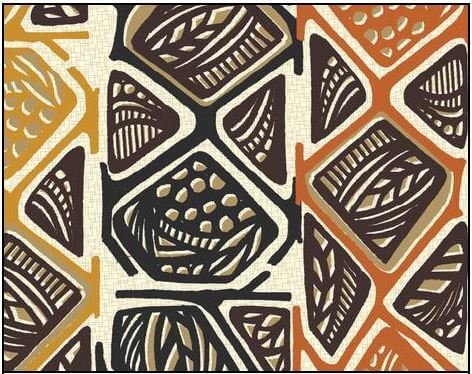
FIGURE A: Animal Tribal surface, design by Spoonflower (South Africa), 2015.
1.1.1 Analyse the use of the following elements and principles in FIGURE A above:
- Colour scheme
- Line
- Rhythm
- Positive and negative space (8)
1.1.2 Define the term African aesthetic by referring to FIGURE A above. (2) [10]
OR
1.2 
FIGURE B: One of the lamp entries for an ESKOM lamp competition called Where Creativity Meets Technology,
designer unknown (South Africa), 2014.
1.2.1 Analyse the use of the following elements and principle in the product design above:
- Form
- Line
- Texture
- Balance (8)
1.2.2 Why do you think it is important that design should embrace technology? (2) [10]
QUESTION 2: COMMUNICATION THROUGH DESIGN
2.1 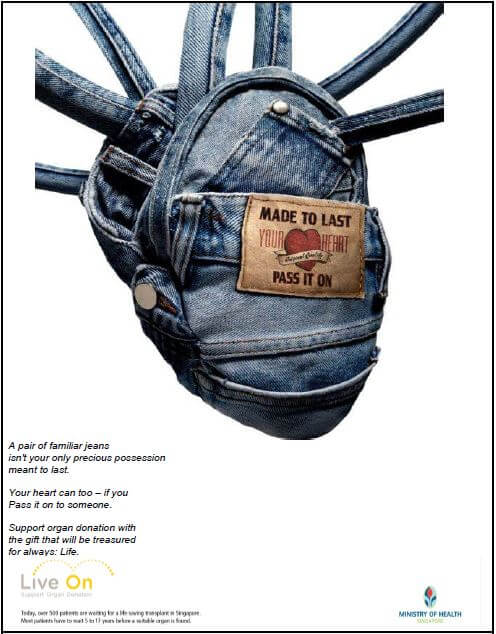
FIGURE C: Postcard design promoting organ donation, designer unknown (Singapore), 2013.
2.1.1 What do you think is the meaning of the term design activism? (2)
2.1.2 Identify and explain the symbolism highlighted in the message in FIGURE C above. (4)
2.2 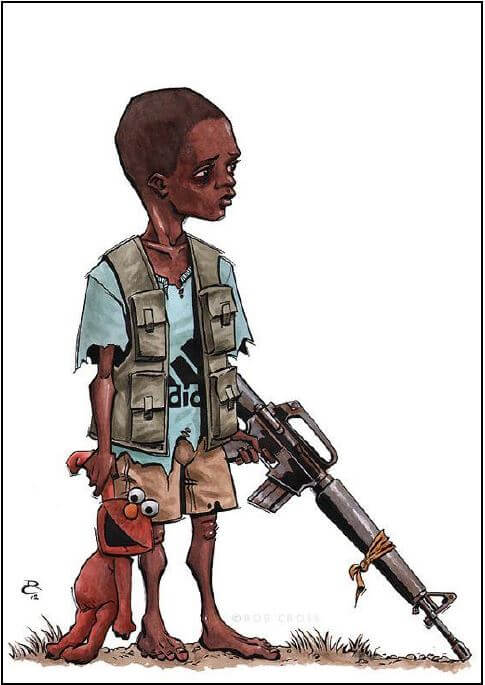
FIGURE D: Child Soldiers Campaign by Crimson Magpie (United Kingdom), 2013.
Name and explain the possible meaning of TWO symbols, evident in FIGURE D above. (4) [10]
QUESTION 3
ANSWER EITHER QUESTION 3.1 OR QUESTION 3.2.
3.1 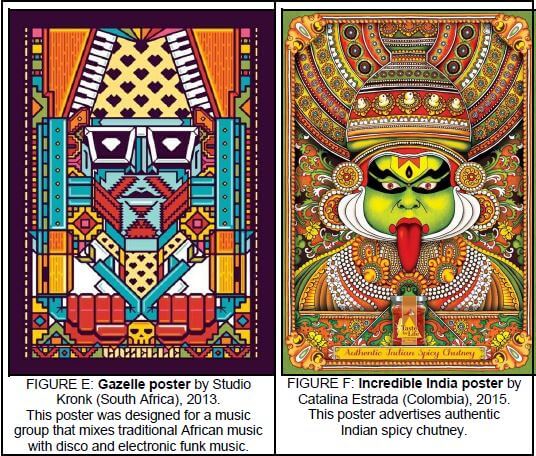
Write an essay of at least 200–250 words (one page) in which you compare the surface design in FIGURE E with the surface design in FIGURE F.
Refer to the following:
- Inspiration/Influences
- Target market
- Pattern
- Colour
- Focal point [10]
OR
3.2 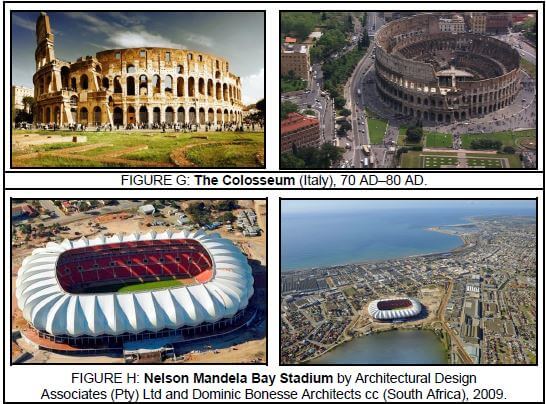
Write an essay of at least 200–250 words (one page) in which you compare the classical building in FIGURE G with the contemporary building in FIGURE H. Alternatively, you may compare any Classical building you have studied with any contemporary building.
Refer to the following in your essay:
- Function
- Design/Structure
- Building materials
- Site
- Influences [10]
TOTAL SECTION A: 30
SECTION B: DESIGN HISTORY
QUESTION 4
4.1
Design is heavily influenced by the social and political landscape of the time period in which it is made. |
Choose any TWO design movements/styles in the list below and write an essay of at least 400–450 words (two pages) in which you justify the statement above. Refer to the aims, characteristics and influences of the design movements/styles to support your answer.
Discuss at least ONE work by ONE designer from EACH movement to motivate your answer.
- Ancient Greece
- Gothic
- Renaissance
- Neoclassical
- Arts and Crafts
- Art Nouveau
- De Stijl
- Bauhaus
- Art Deco
- Modernism
- Pop
- Postmodernism
- Deconstructivism (20)
4.2 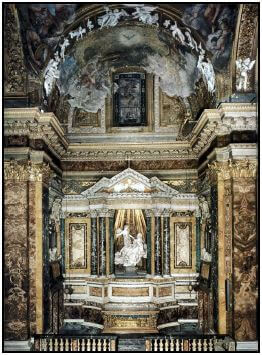
FIGURE I: Italian Baroque interior, Cornaro Chapel by Bernini
inside the Santa Maria della Vittoria church (Rome, Italy), 1652. 
FIGURE J: Scandinavian interior with Paimio chairs
by Alvar Aalto (Finland), circa 1959.
Write an essay of at least 200–250 words (one page) in which you compare the style of Baroque and Scandinavian design, with reference to the interior designs in FIGURE I and FIGURE J above. (10)
TOTAL SECTION B: 30
SECTION C: DESIGN IN A SOCIOCULTURAL/ENVIRONMENTAL AND SUSTAINABLE CONTEXT
QUESTION 5
ANSWER EITHER QUESTION 5.1 OR QUESTION 5.2.
5.1 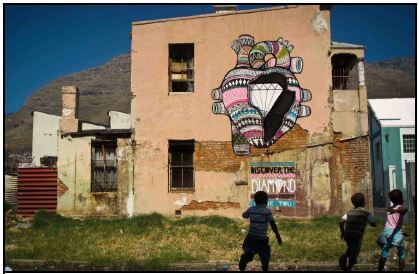
FIGURE K: Discover the Diamond Inside You, a section of the 'Diamond Inside'
mural series produced by a local community in collaboration with the Spanish
Boa Mistura Street Art Collective (Cape Town), 2012.
5.1.1 Discuss the term sociocultural design with reference to FIGURE K. (6)
5.1.2 Write TWO separate essays of 200–250 words (one page) EACH in which you discuss the work of ONE South African contemporary designer/design group AND ONE international contemporary designer/design group who address sociocultural issues in their work.
Refer to the following in your essays:
- Name of the designer/design group and ONE design that addresses socio-cultural issues
- A discussion of the aims, materials and techniques of this designer/design group, explaining how his/her/their work address social concerns
- A discussion and analysis of ONE work by the designer/design group to motivate your statements
You may NOT refer to any designer(s)/design group(s) that you have discussed previously or design examples referred to in this question paper. (14) [20]
OR
5.2 
FIGURE L: Laundry Baskets by Design Afrika, South Africa, 2015.
5.2.1 In order to survive, traditional crafts need to adapt to contemporary demands. Do you agree with the statement? Substantiate your answer. (4)
5.2.2 Write an article for your community newspaper, promoting ONE indigenous African traditional craft you have studied this year. In your article, discuss the following:
- A description and analysis of ONE example and give the name of the crafter or the indigenous cultural community that produced it
- Materials, methods and processes
- Possible functions of the craft (6)
5.2.3 Write an essay of approximately 200–250 words (one page) on any ONE South African or African contemporary designer/design group whose work reflects the influence of traditional techniques and/or materials.
Refer to the following in your discussion:
- Name the designer/design group and ONE or more of his/her/their works
- His/Her/Their aims and works, explaining how the use of traditional materials and techniques is reflected in the work
- The relevance of the application of traditional materials and techniques to contemporary design
You may NOT refer to any designer(s)/design group(s) that you have discussed previously or design examples used in this question paper. (10) [20]
QUESTION 6 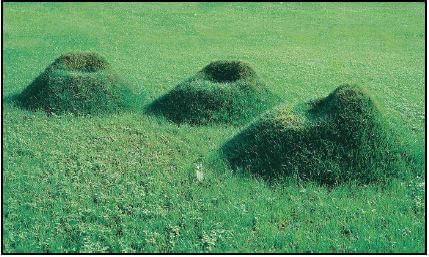
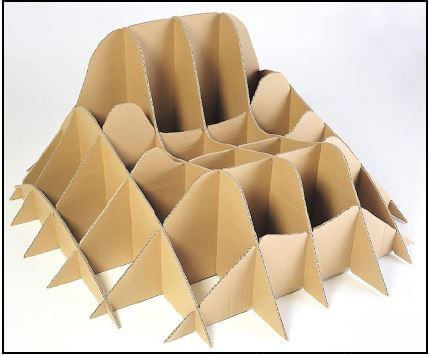
FIGURE M: Grass Covered Chair by Studio Nucleo (Italy), 2000.
A grass-covered chair, made with a cardboard frame, is piled with clay and soil and then covered with a thin layer of sand and grass seeds. |
6.1 Briefly explain the term biodegradable. Refer to FIGURE M in your answer. 6.1 (3)
6.2 Discuss the economic and social benefits of sustainable design. (3)
6.3 Write an essay of at least 350–400 words (one and a half pages) in which you discuss the work of ONE South African contemporary environmentally conscious designer/design agency/studio AND ONE international contemporary environmentally conscious designer/design agency/studio.
Refer to the following in your essay:
- Name of the designer/design agency/studio and ONE work of the designer/design agency/studio
- A brief description and analysis of the product
- The aims, materials and inspirations/influences of the product
- Refer to how the product highlights environmental concerns
You may NOT refer to any designer(s)/design group(s) that you have discussed previously or design examples used in this question paper. (14) [20]
TOTAL SECTION C: 40
GRAND TOTAL: 100
